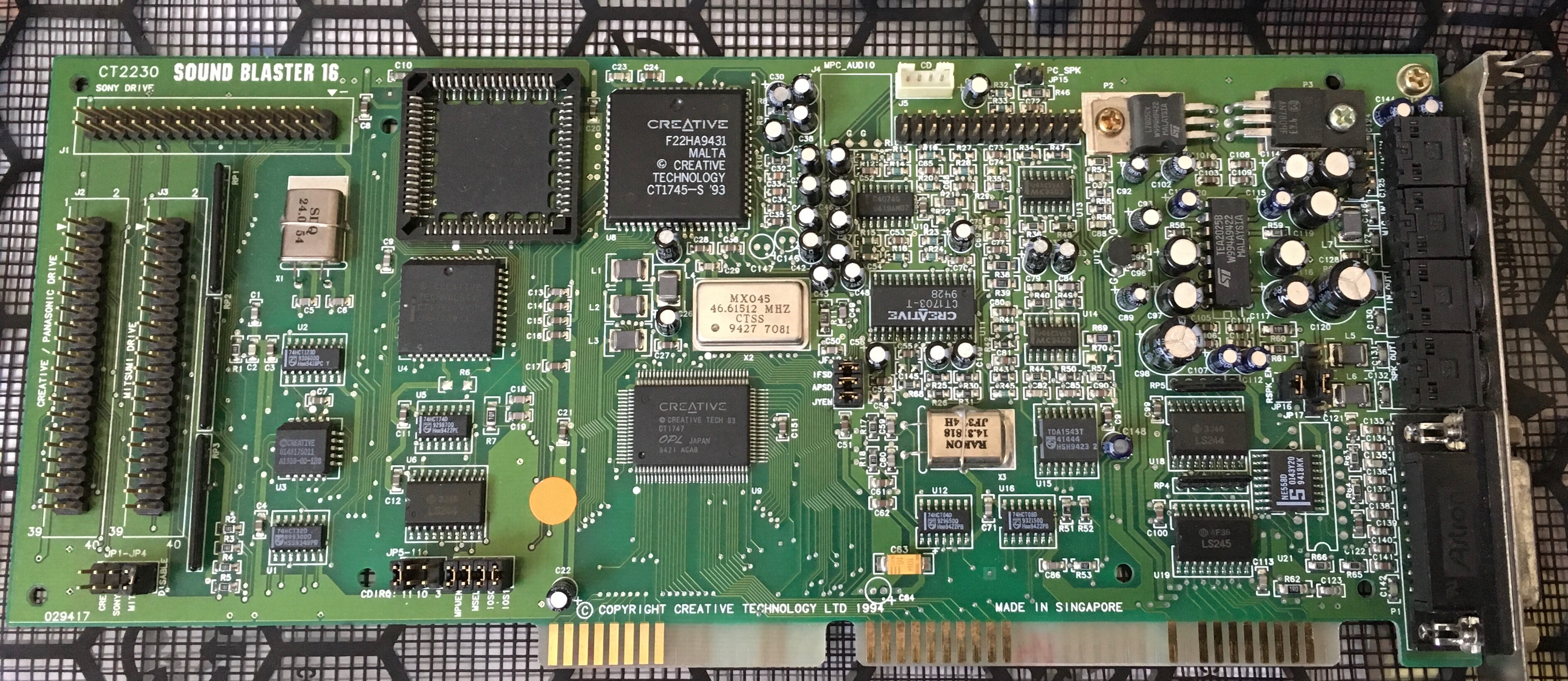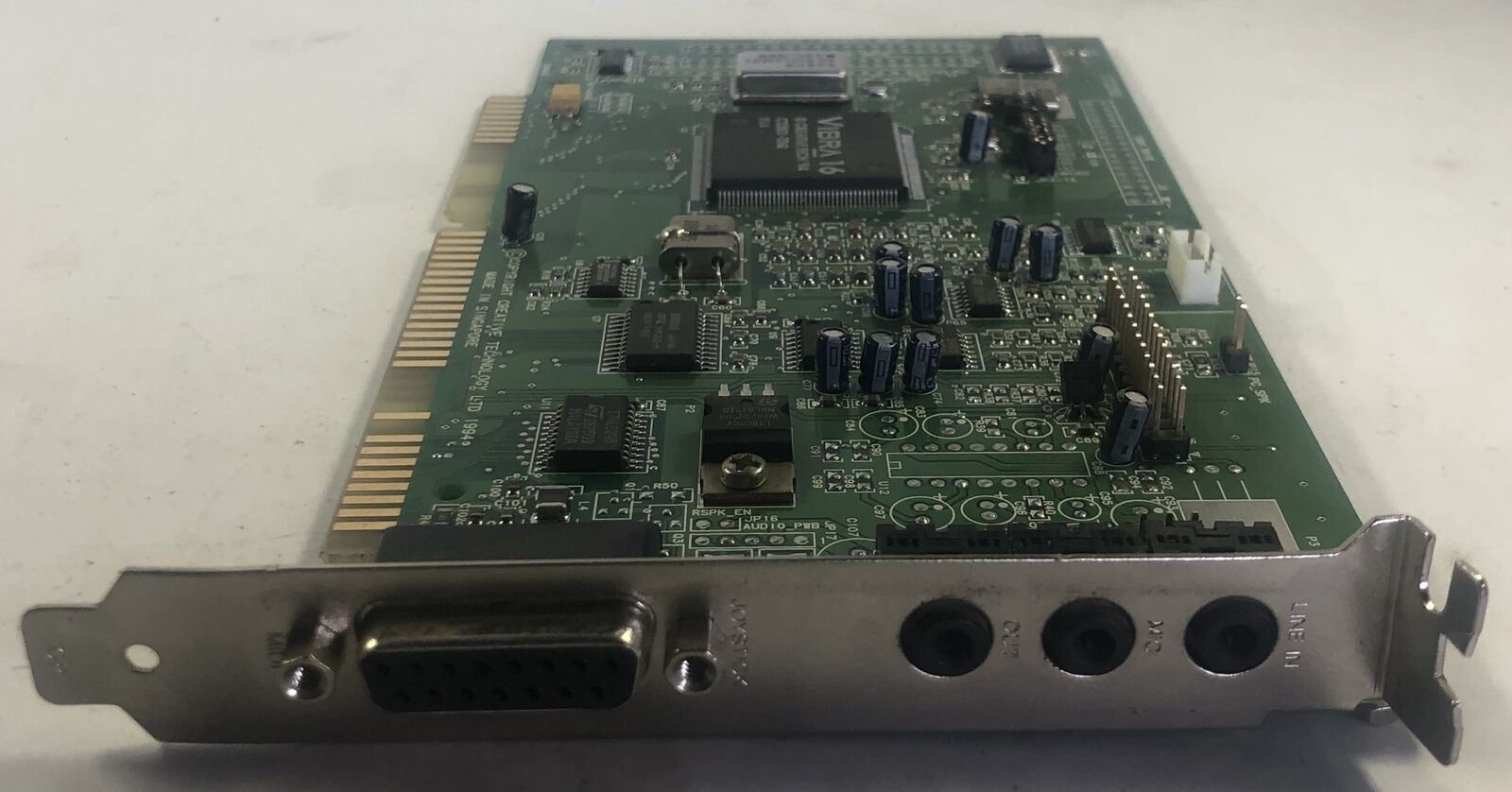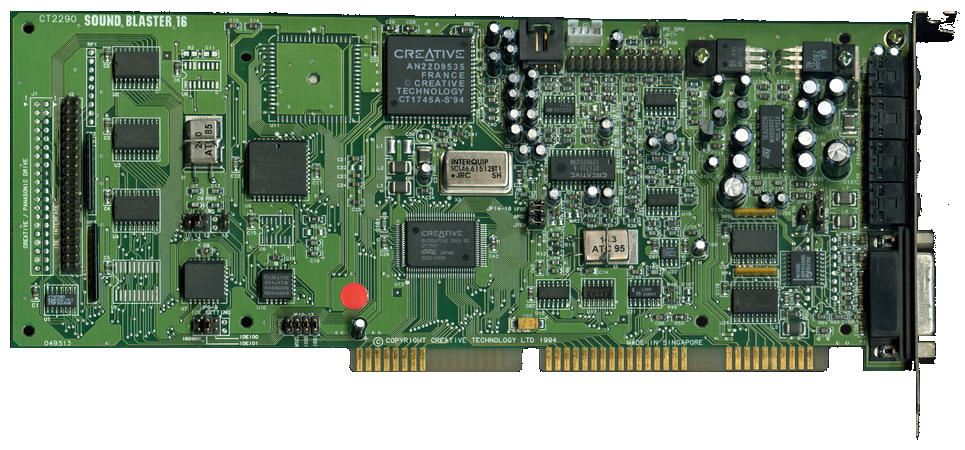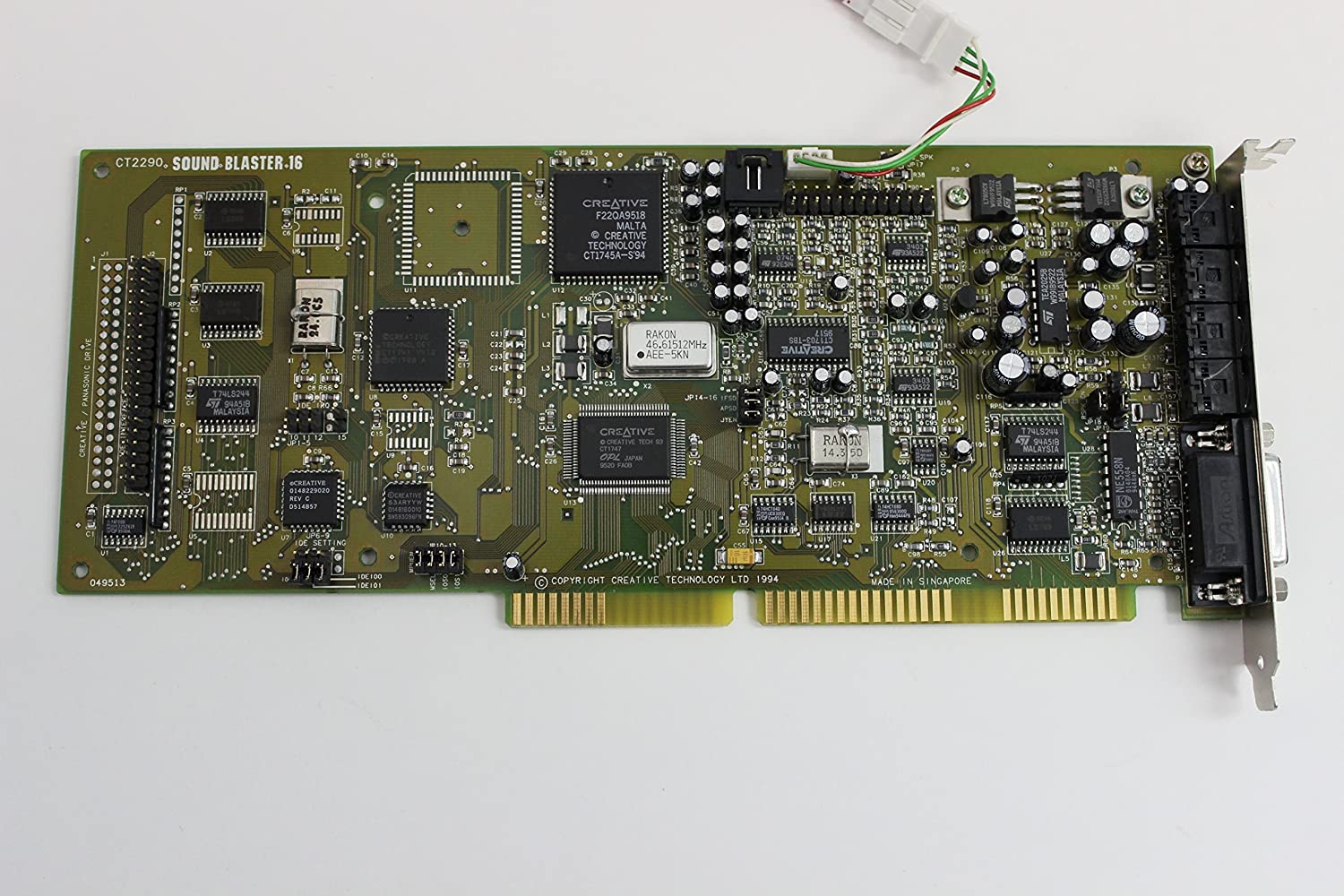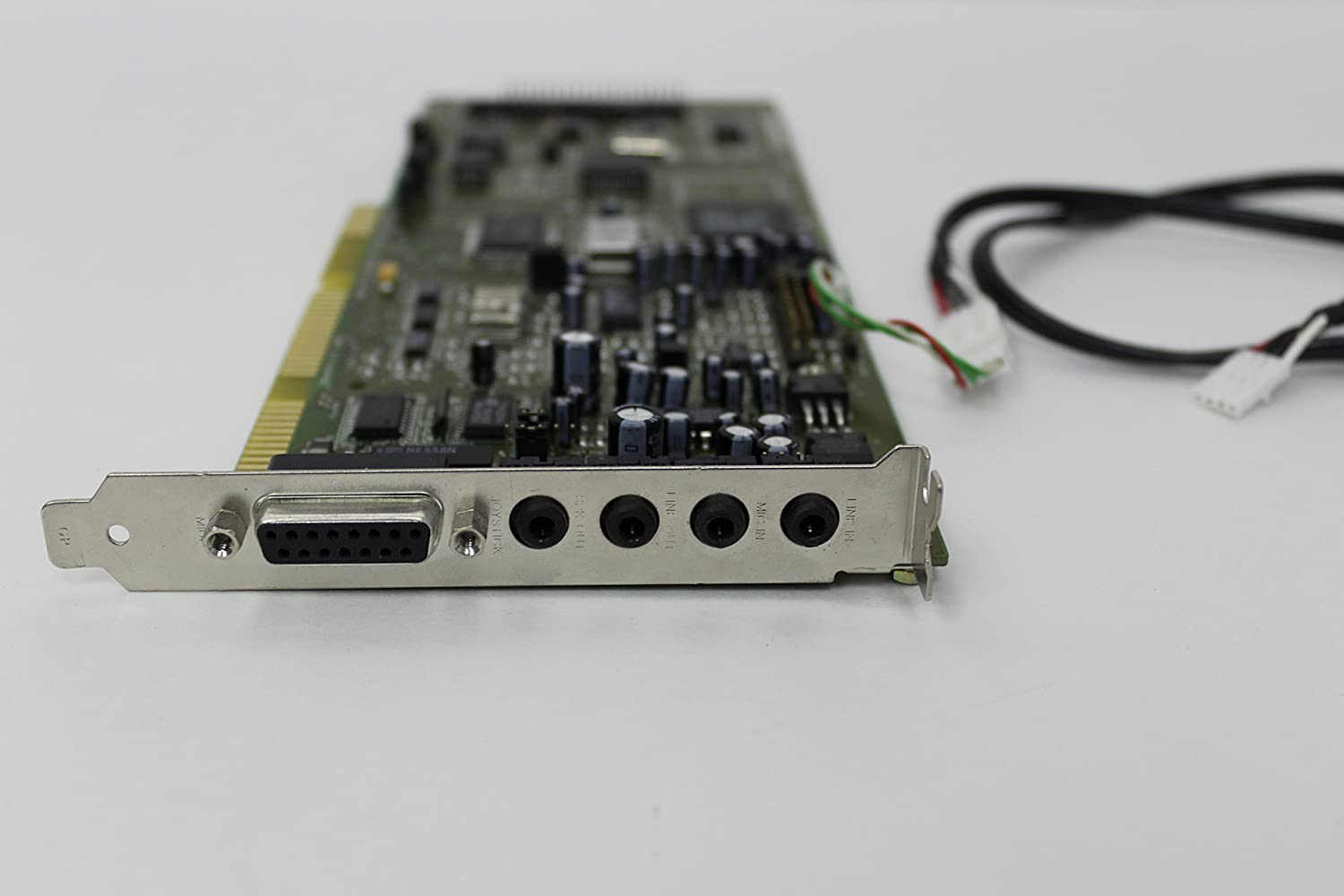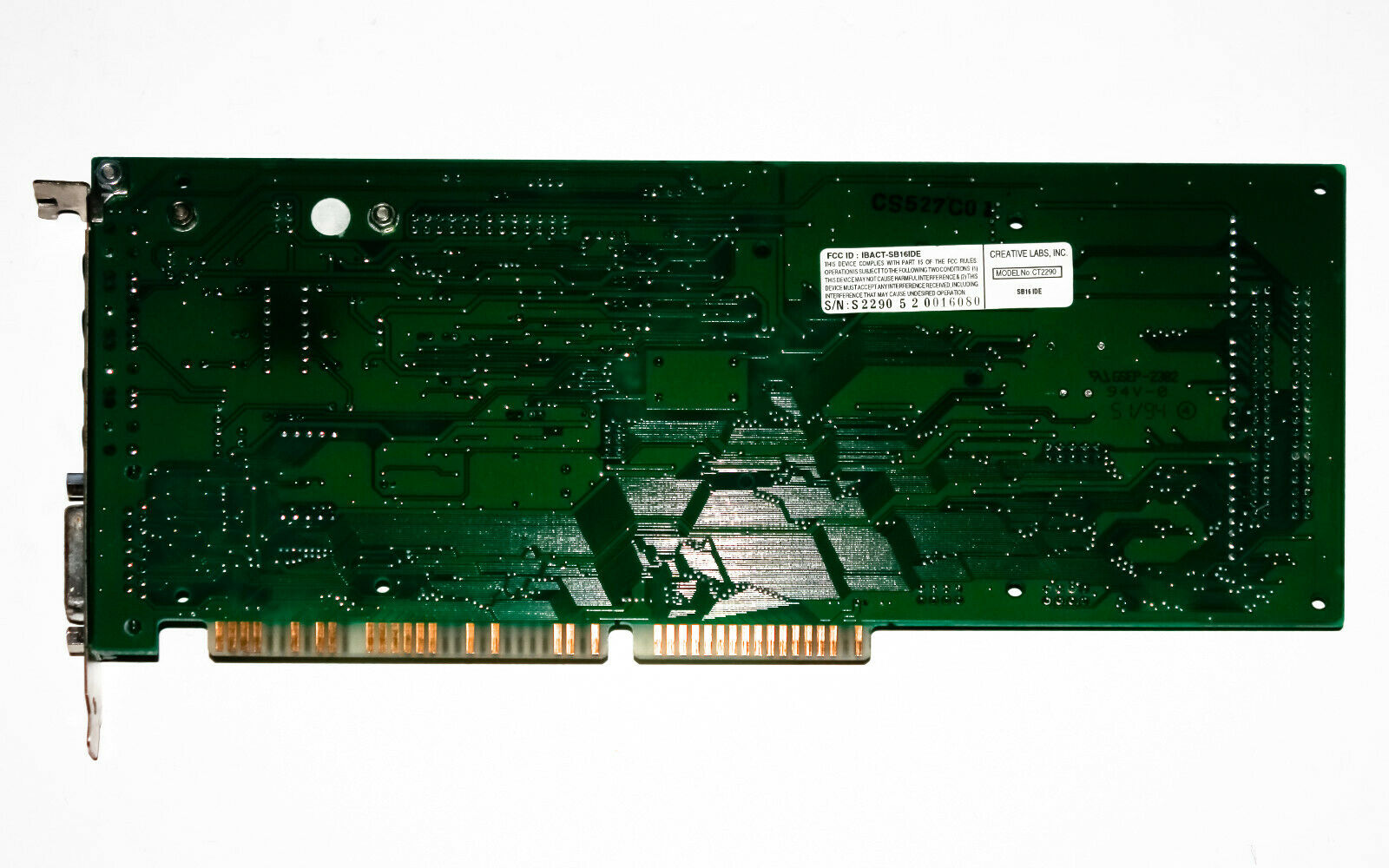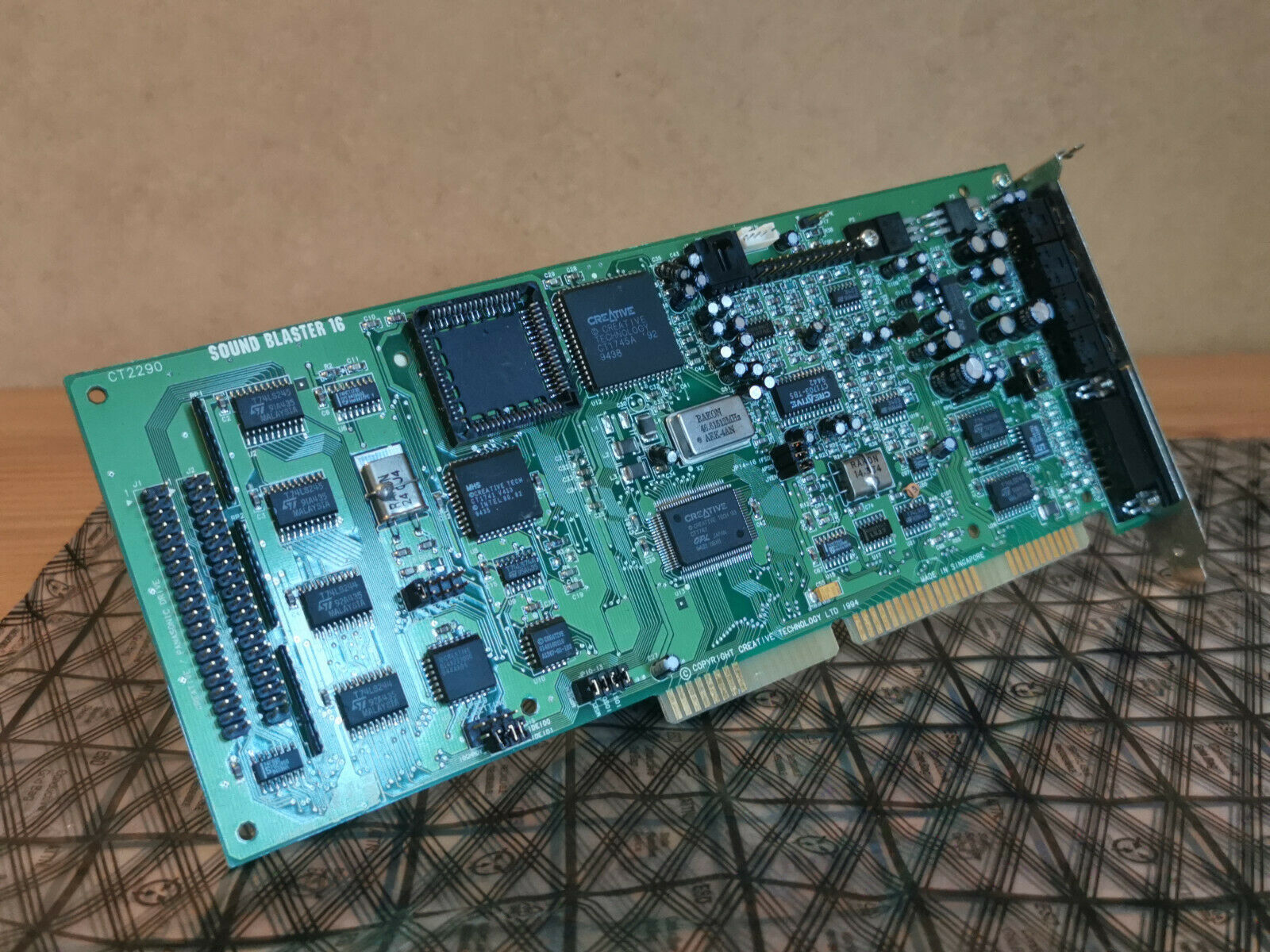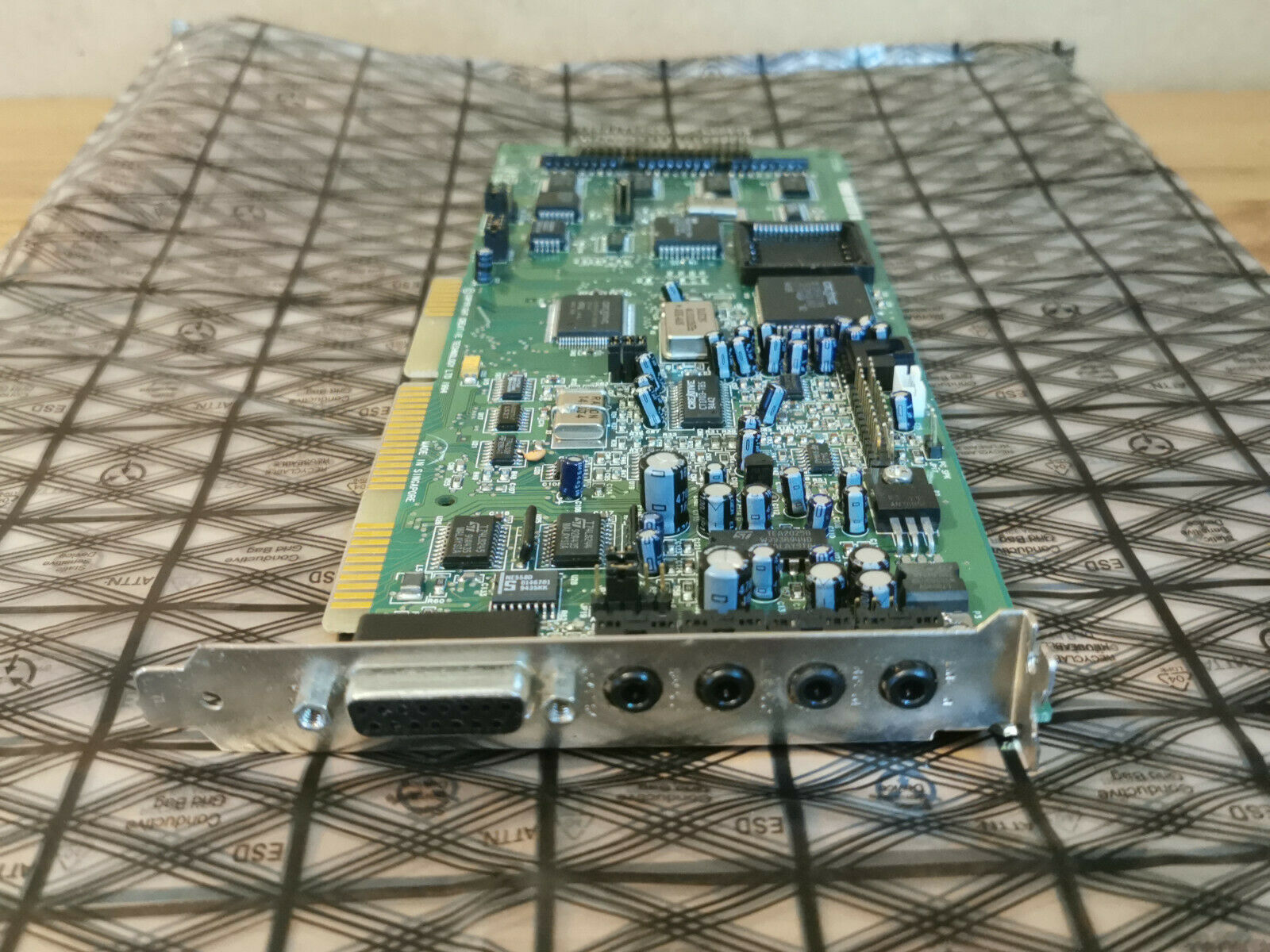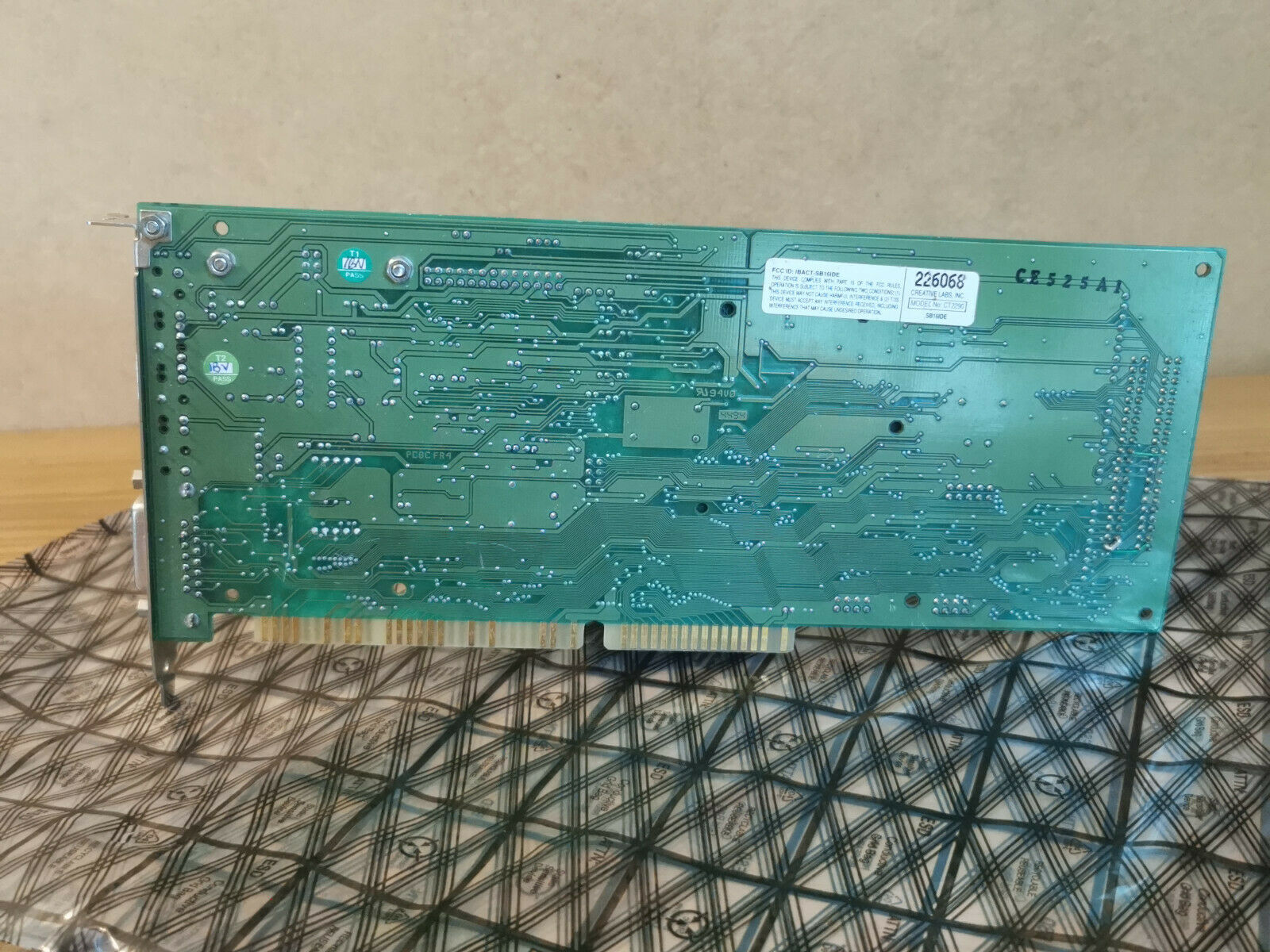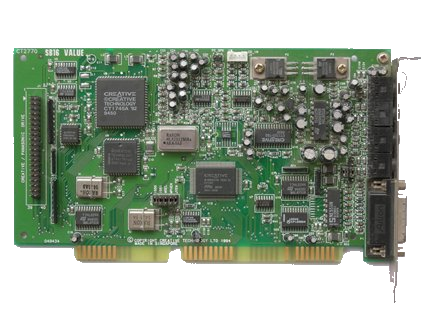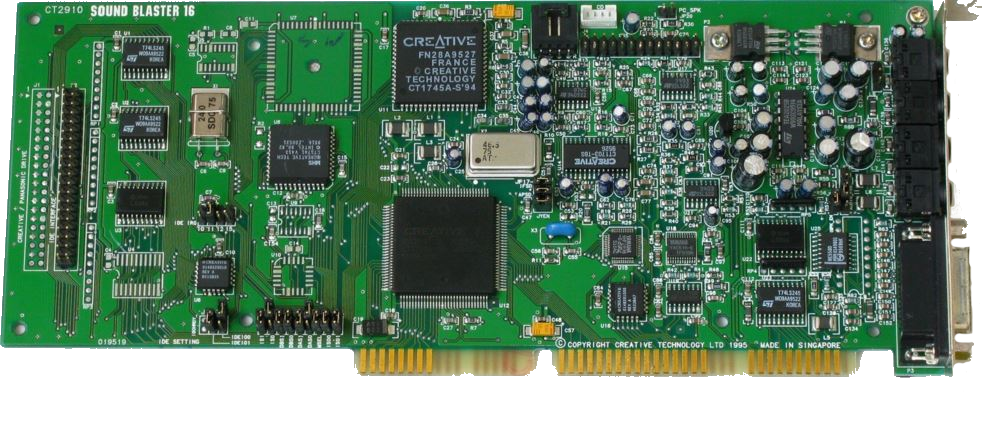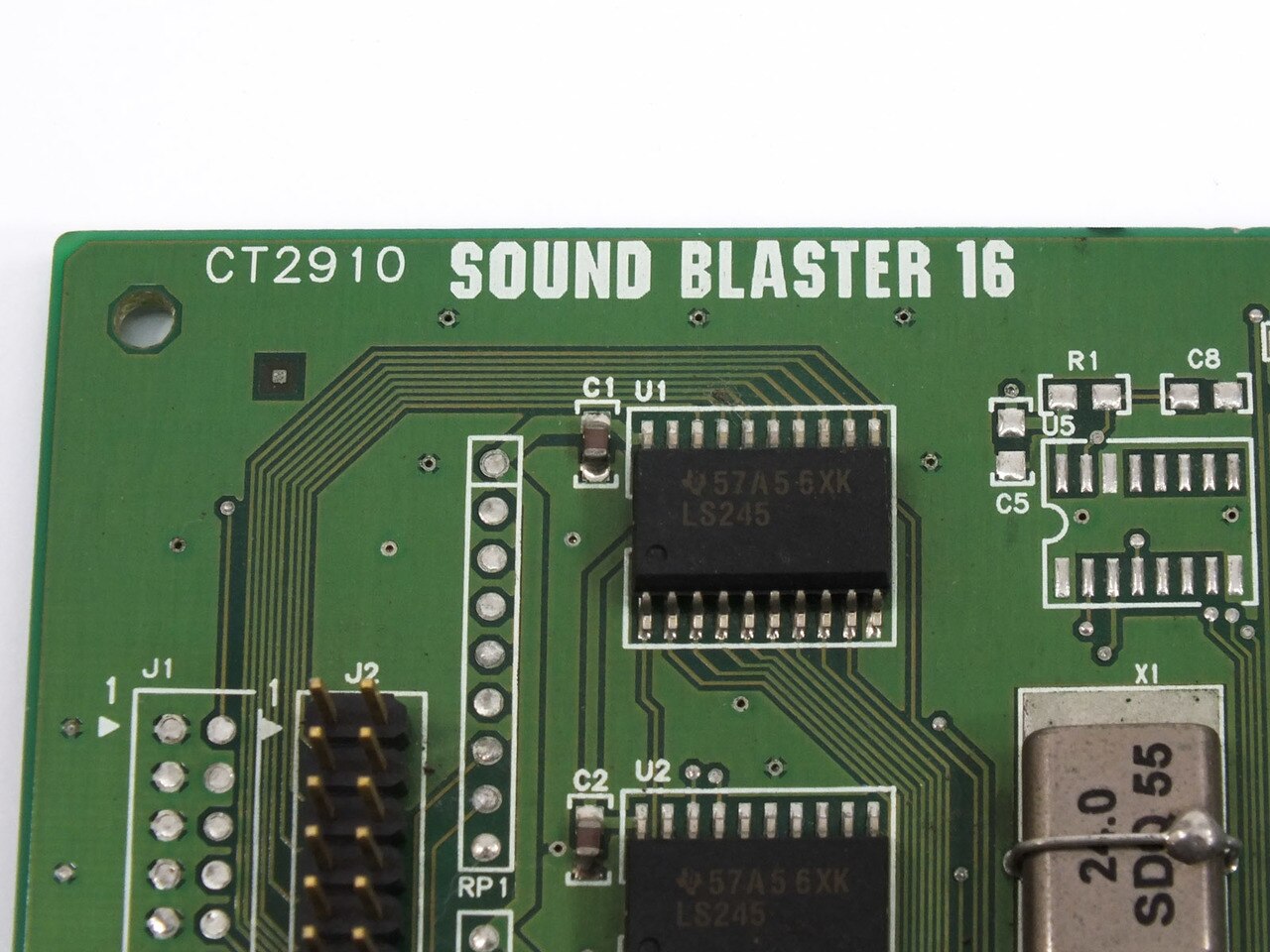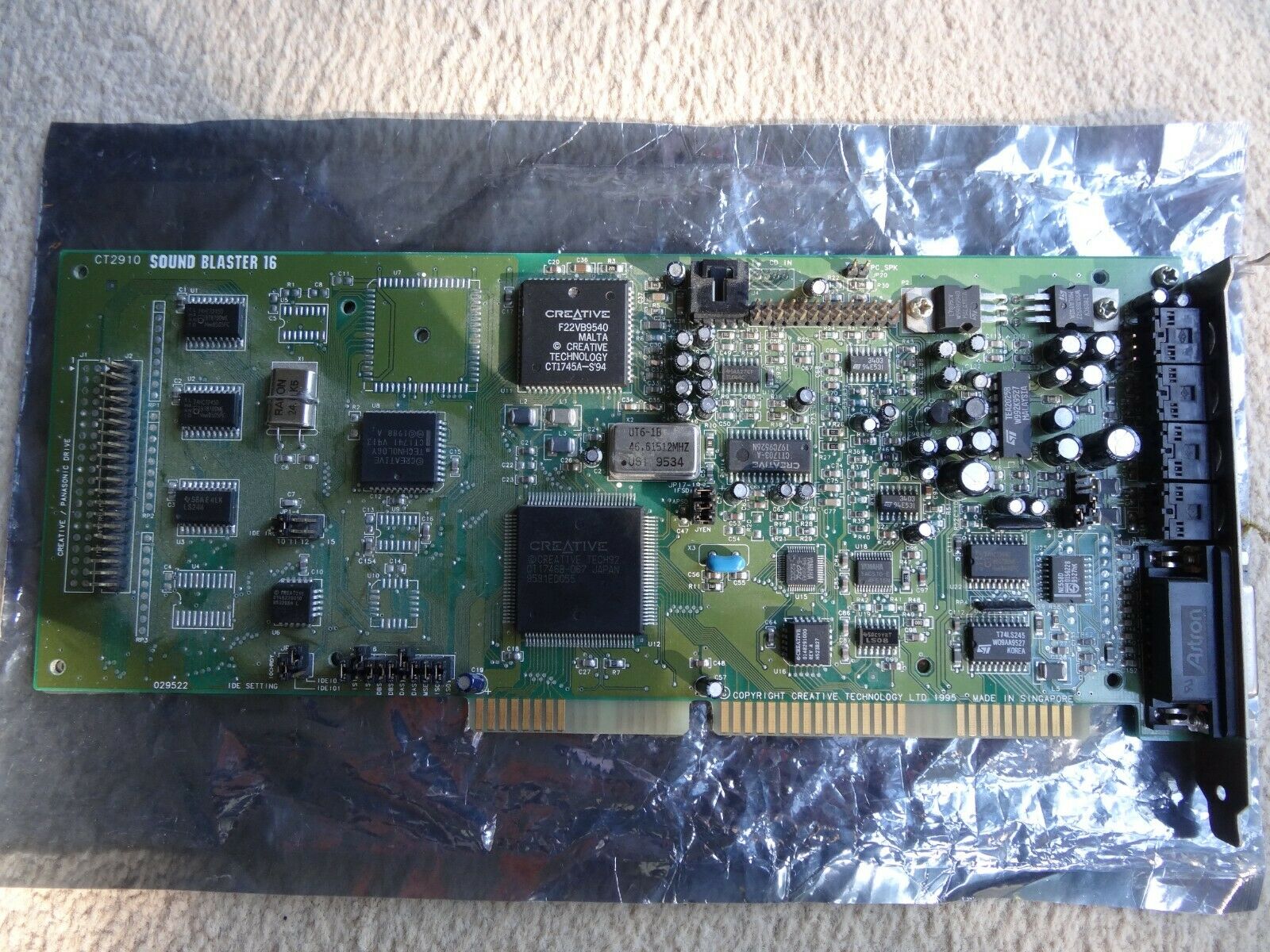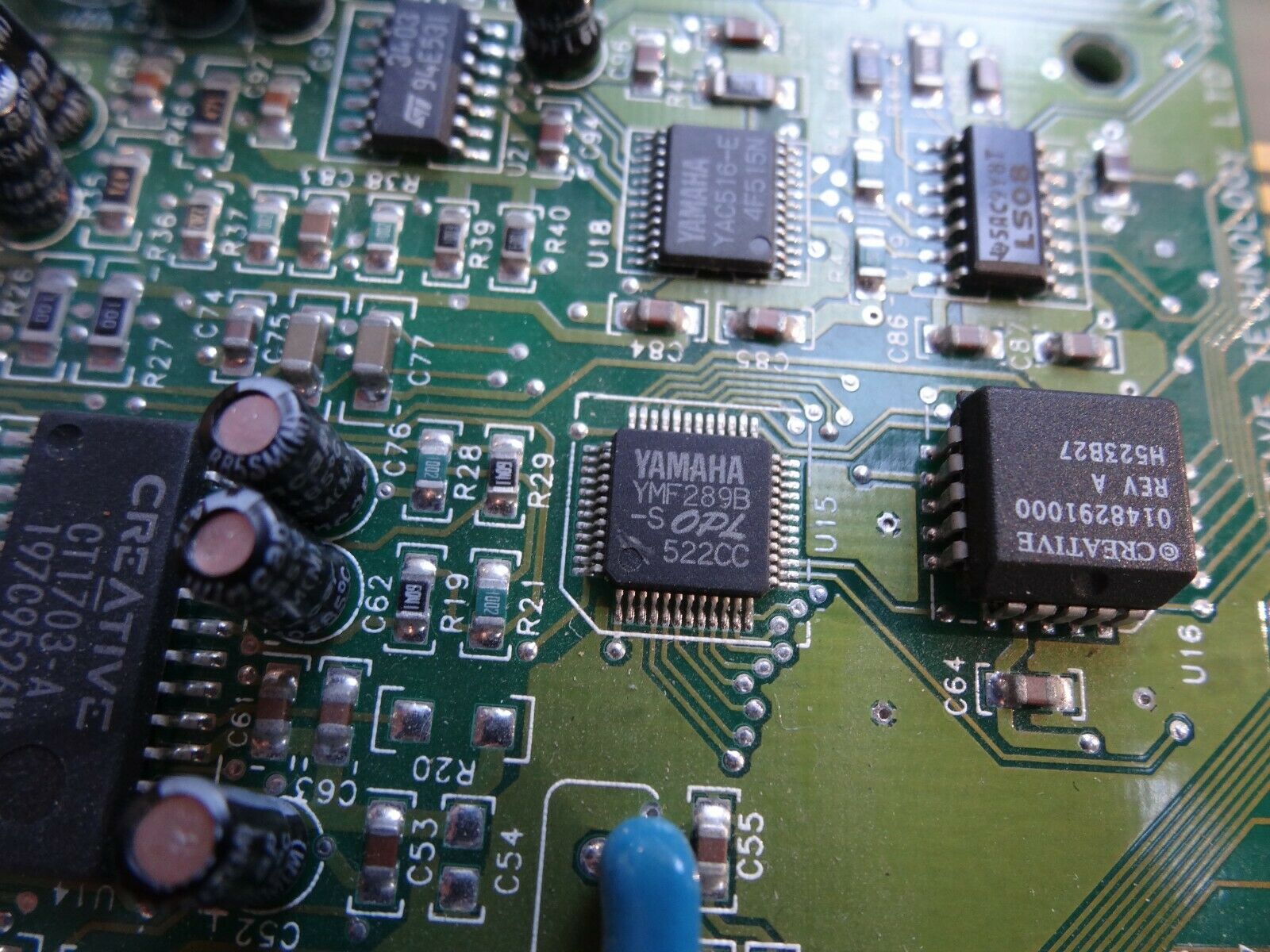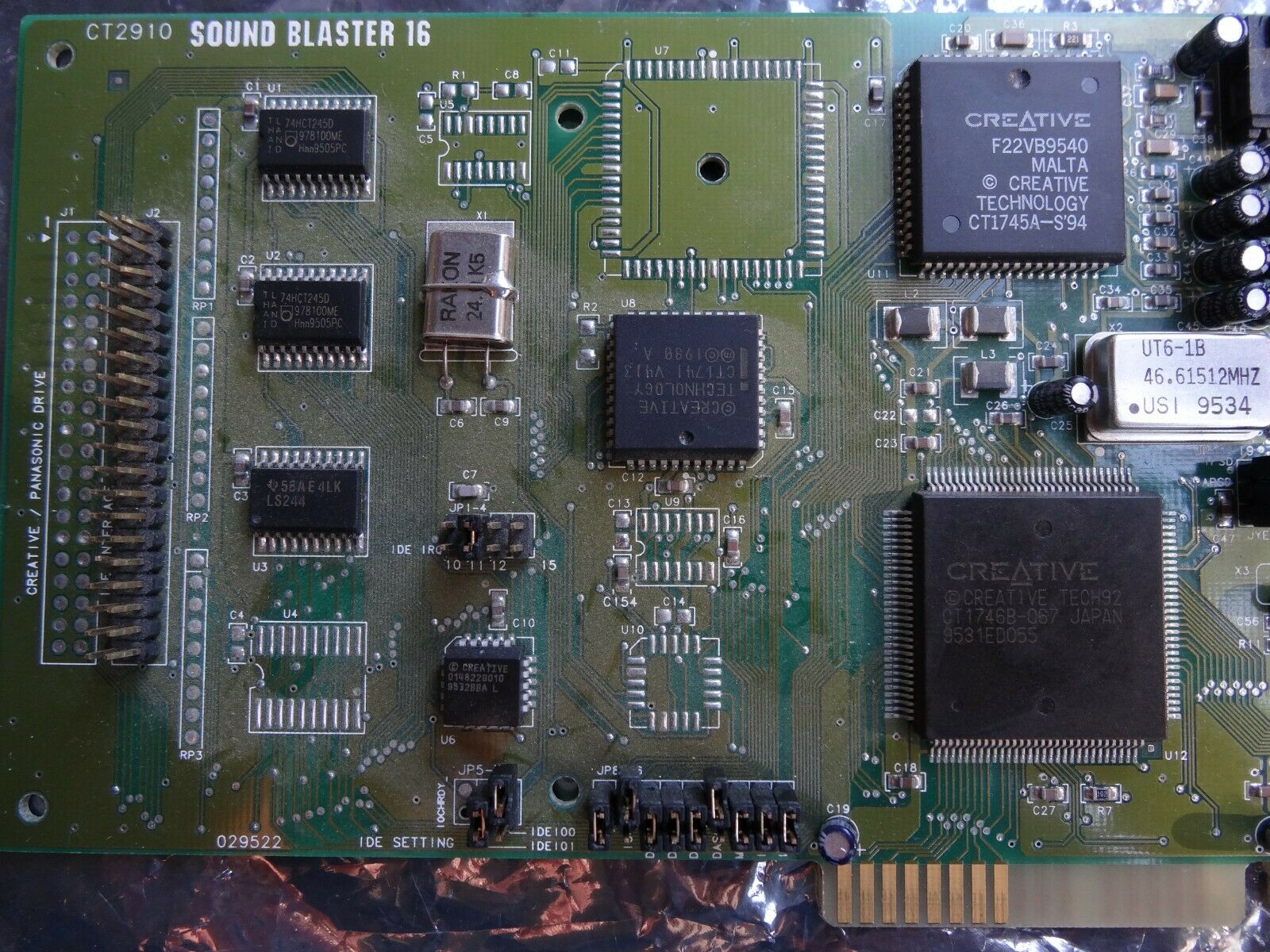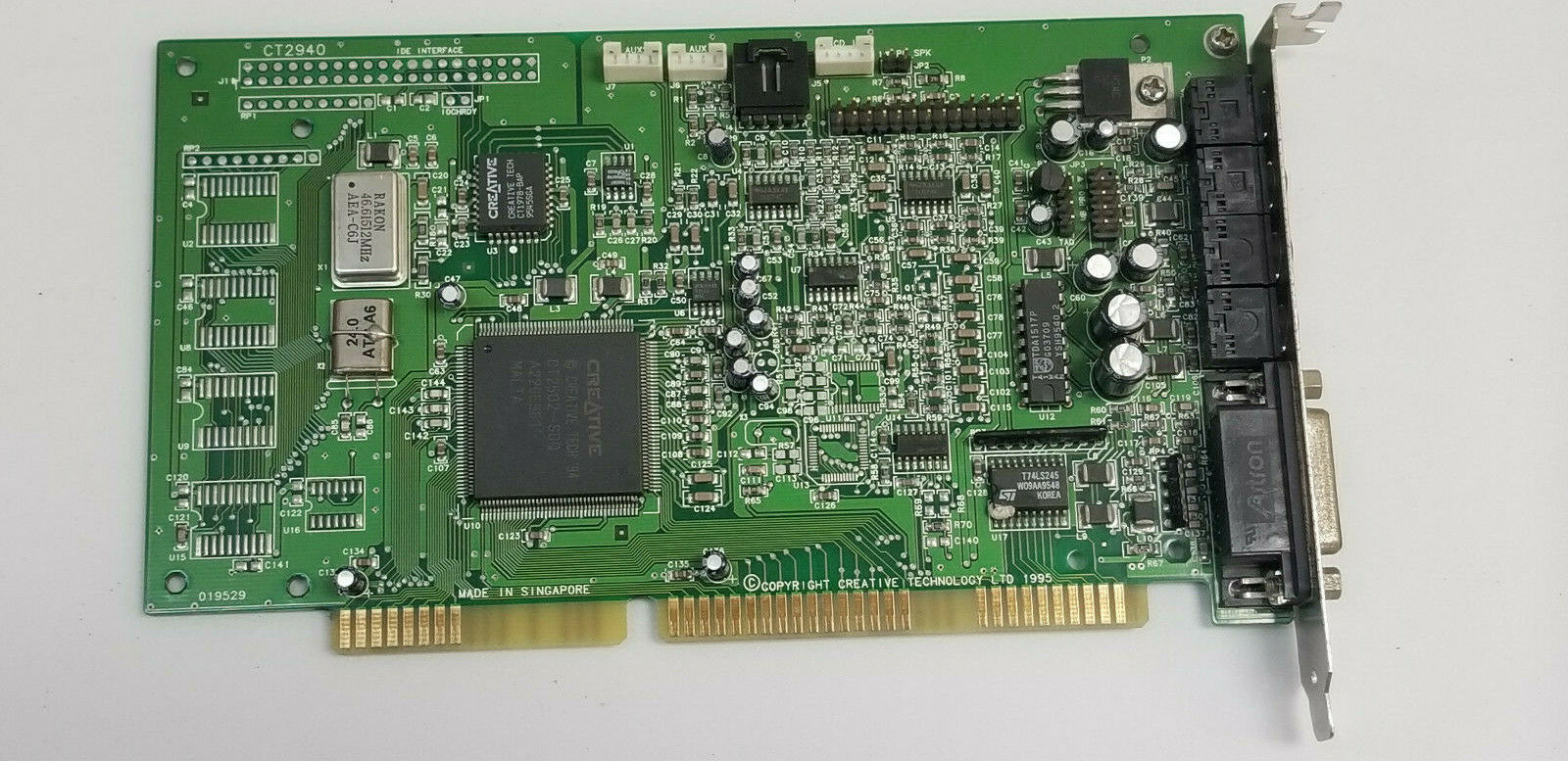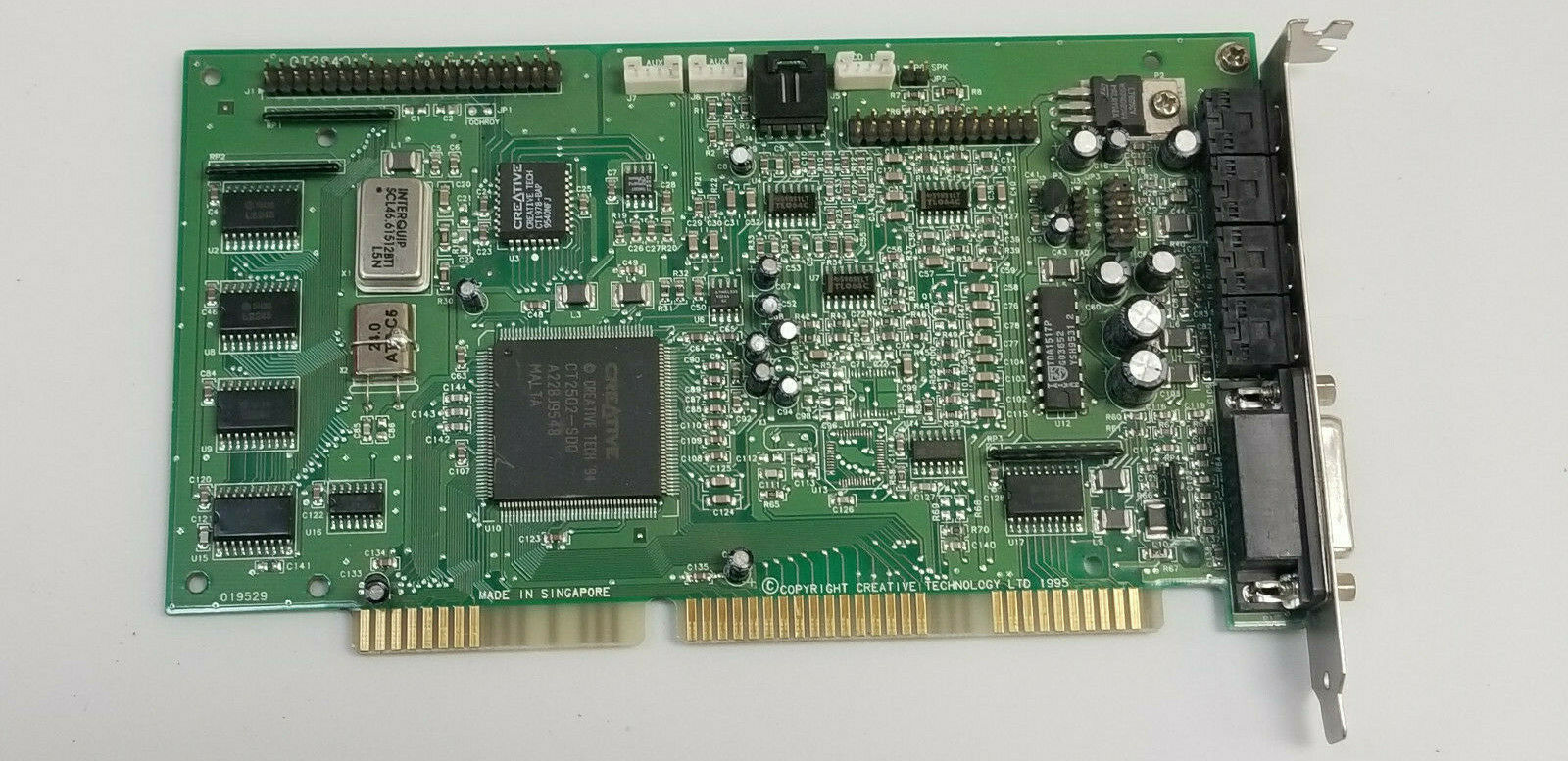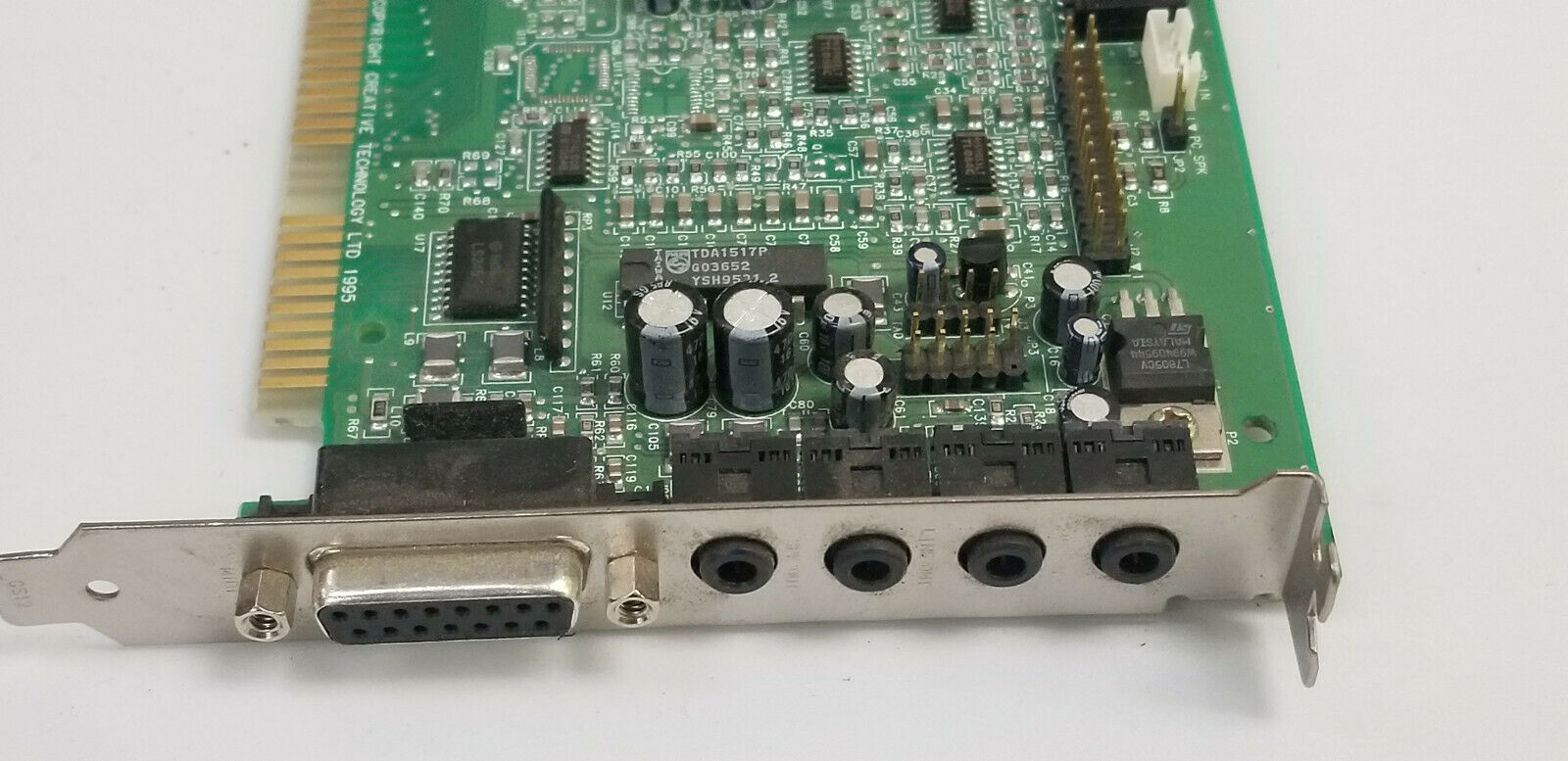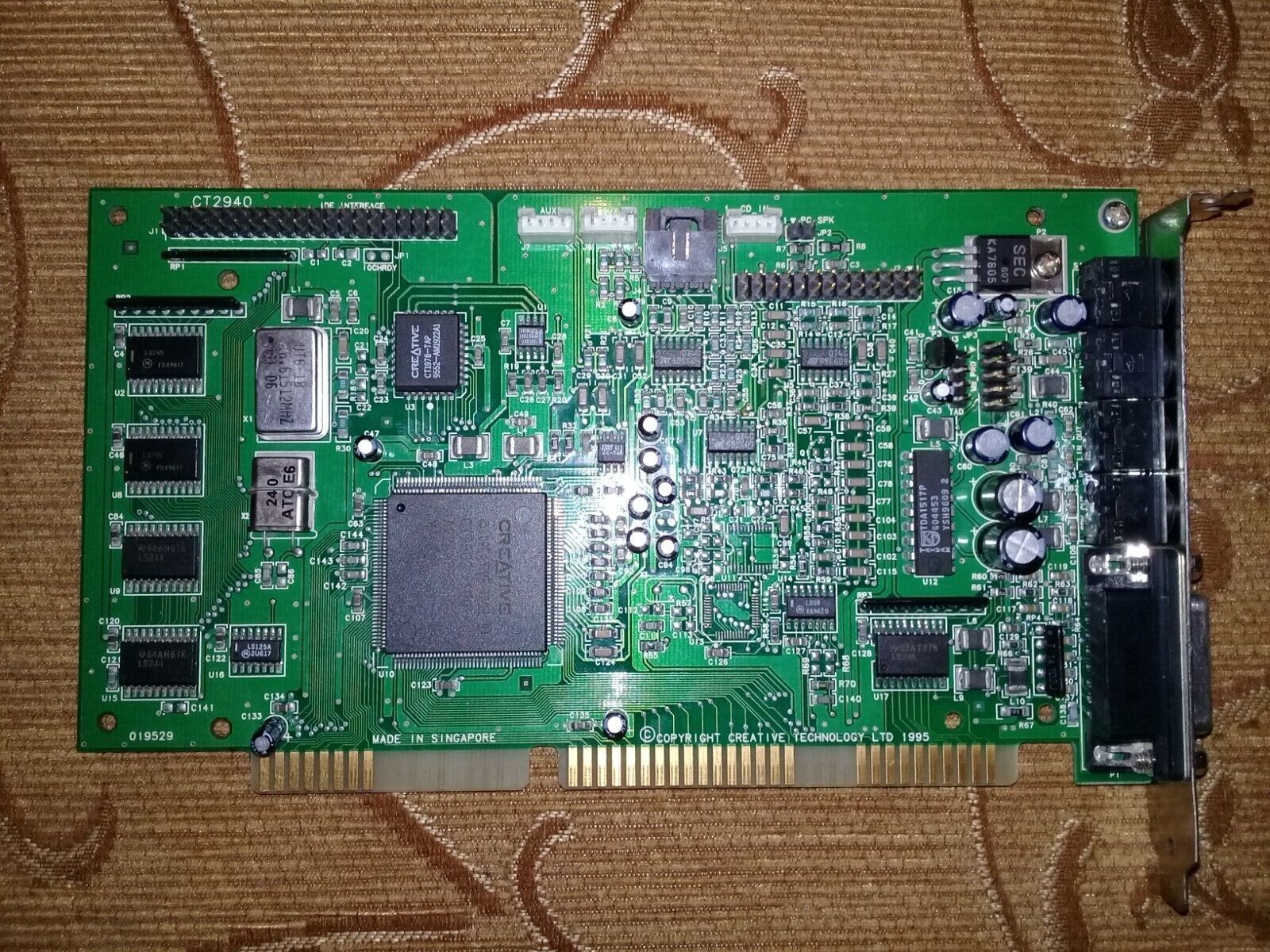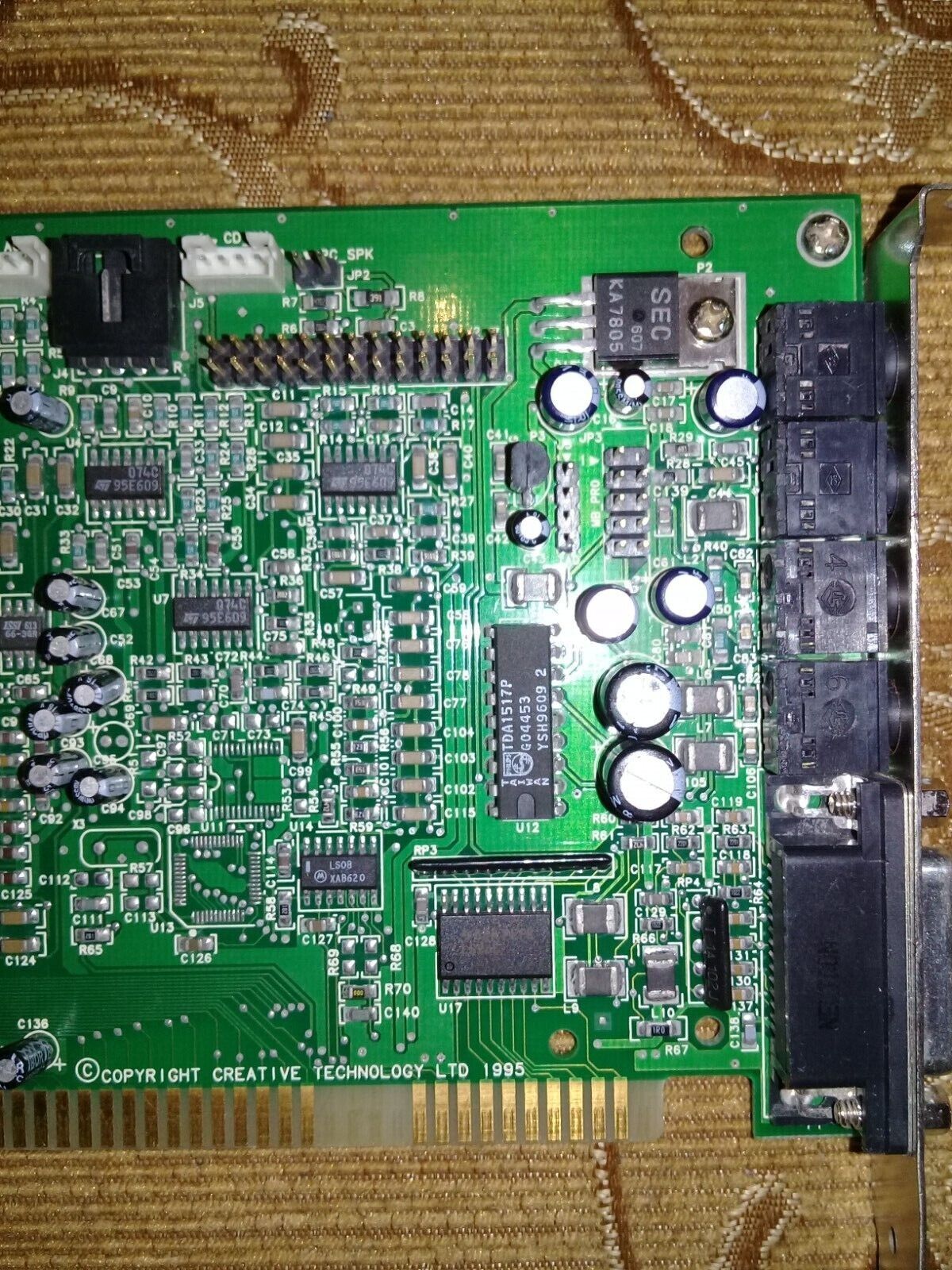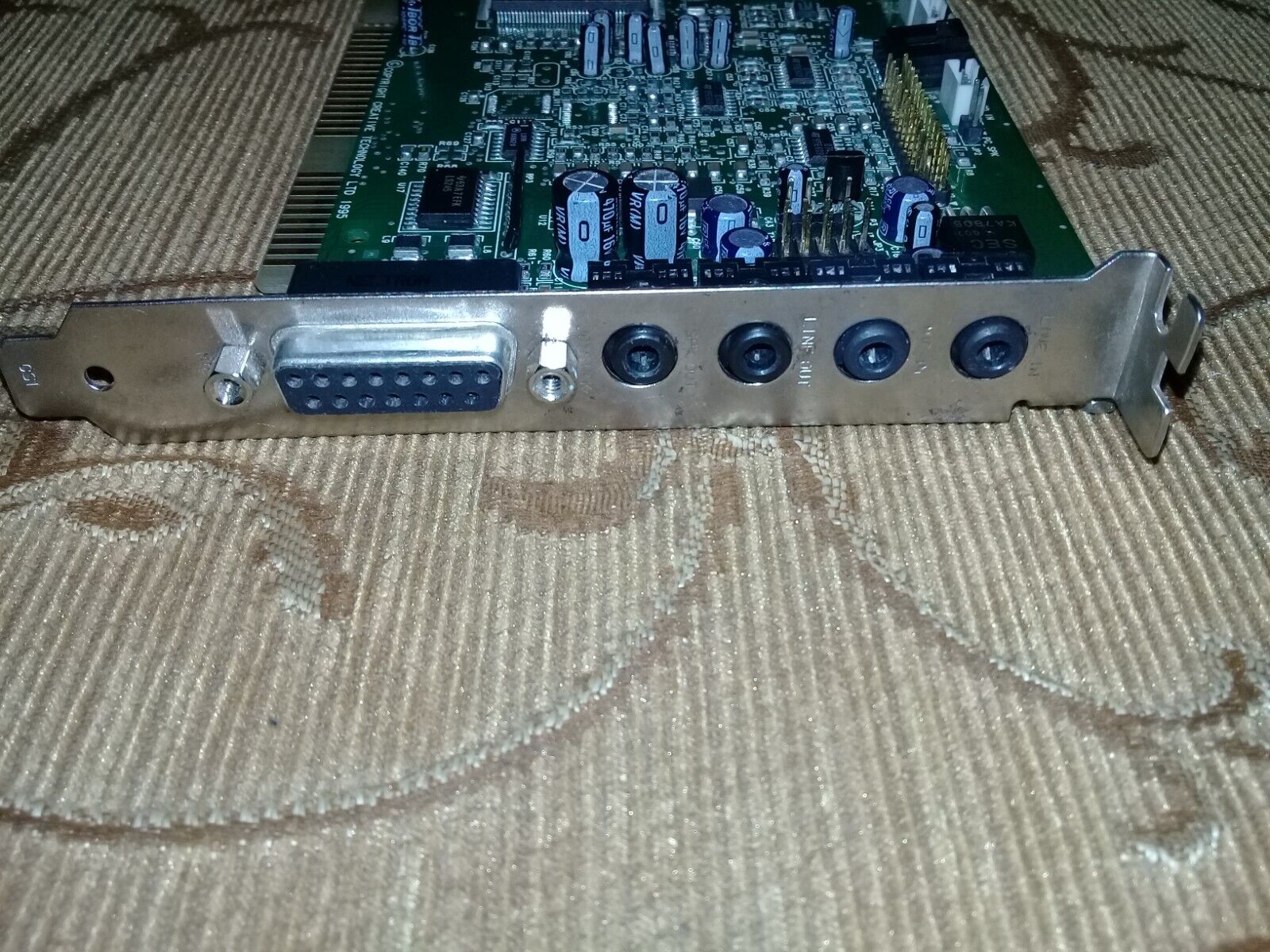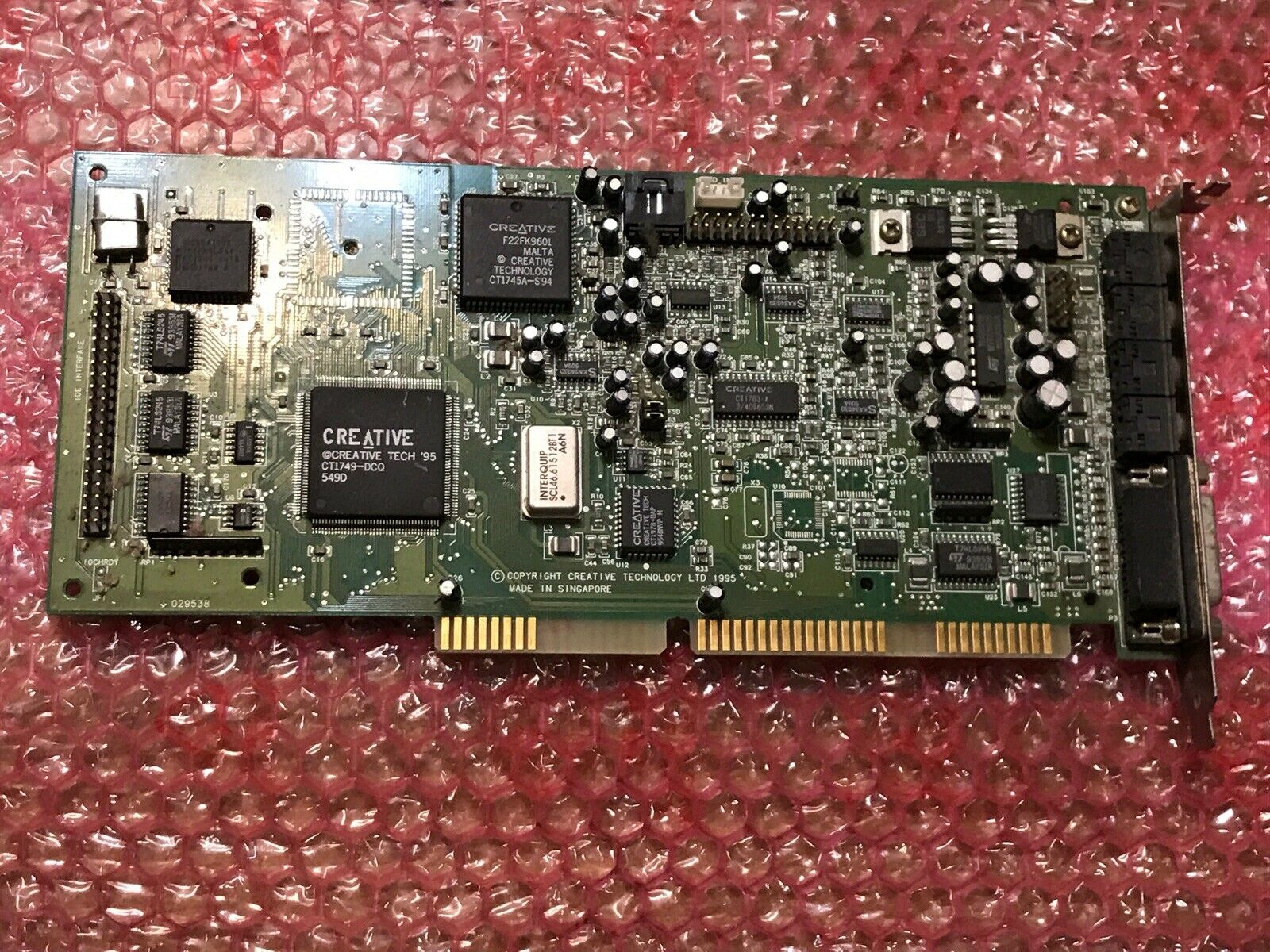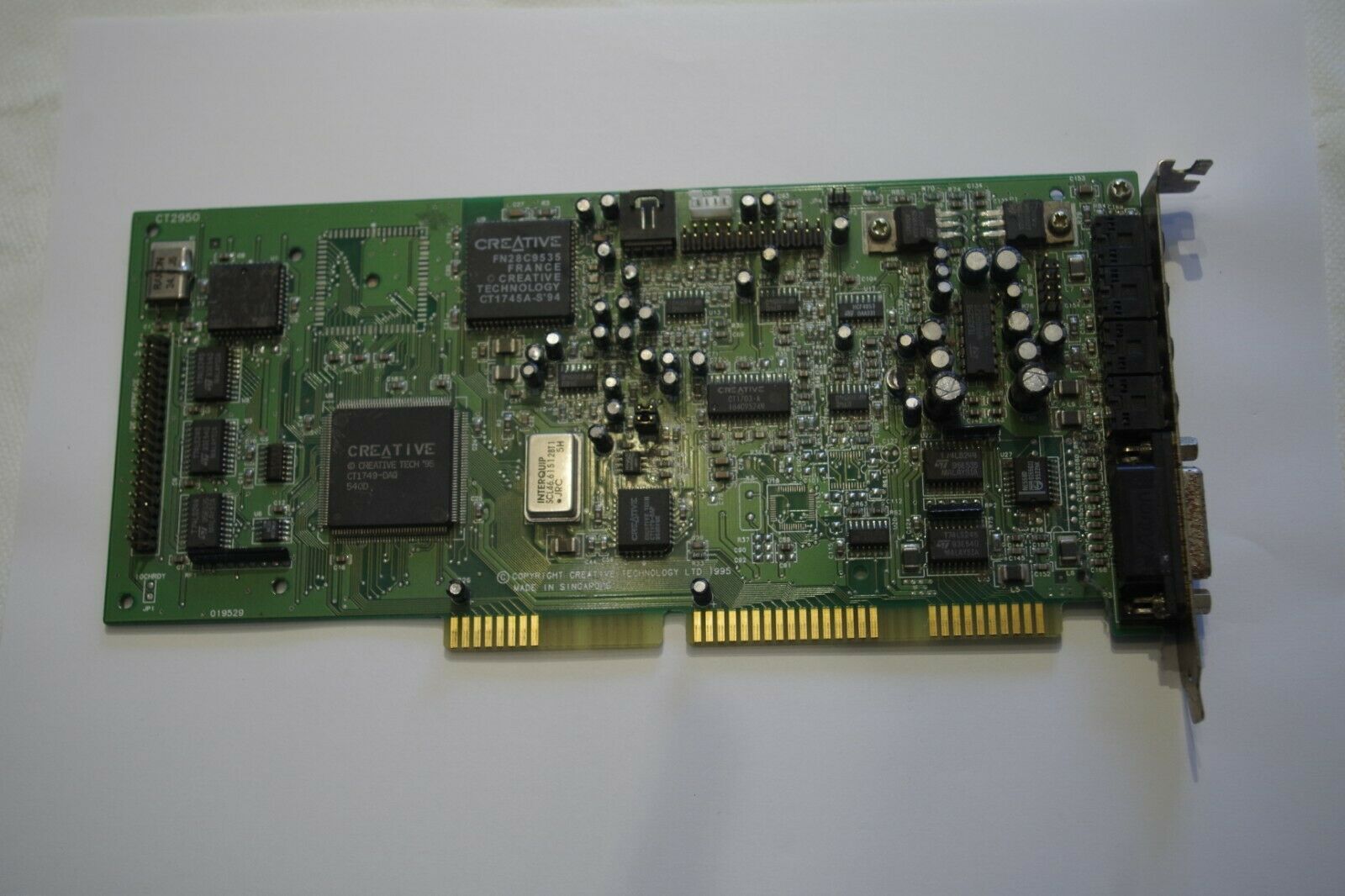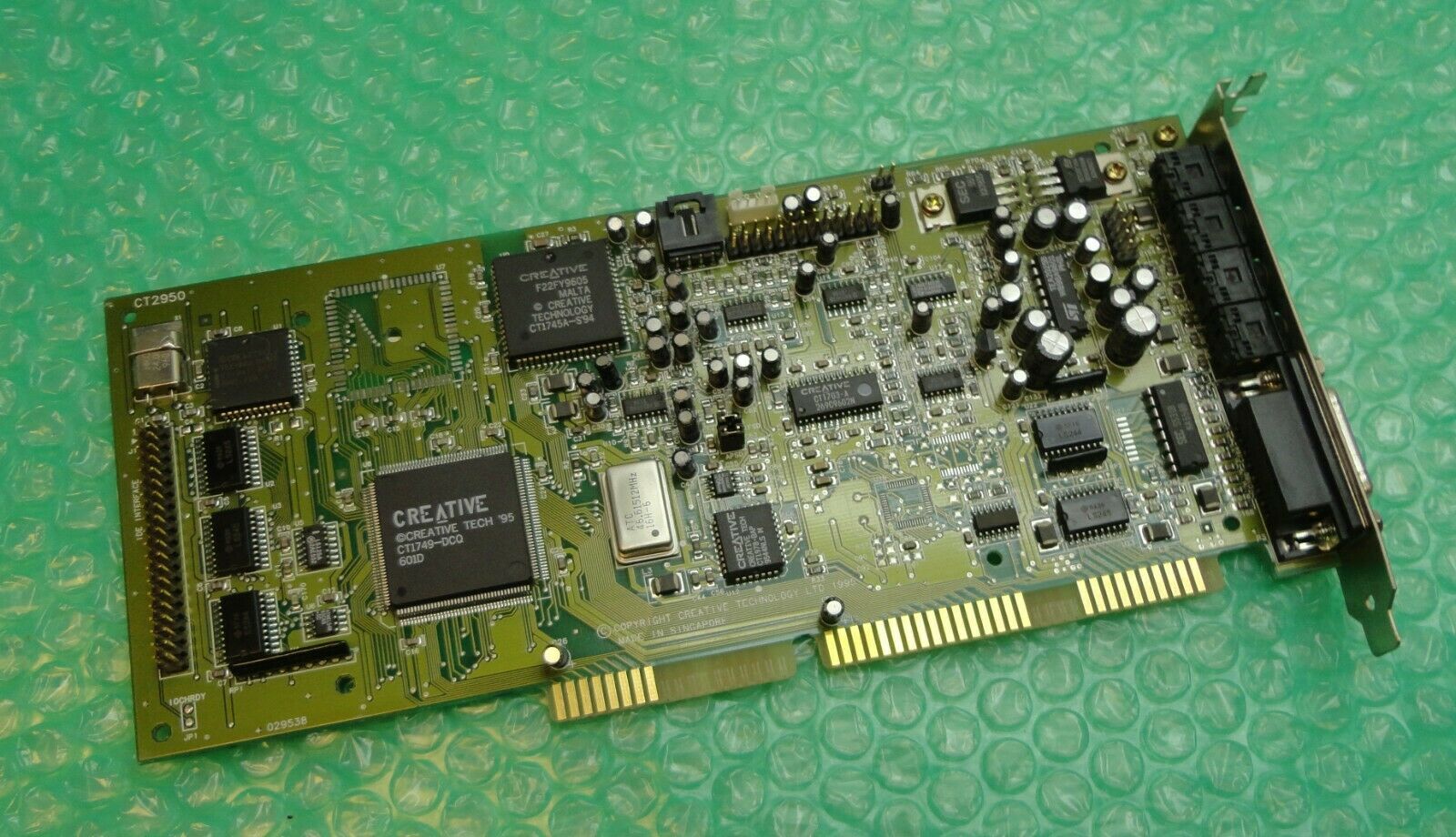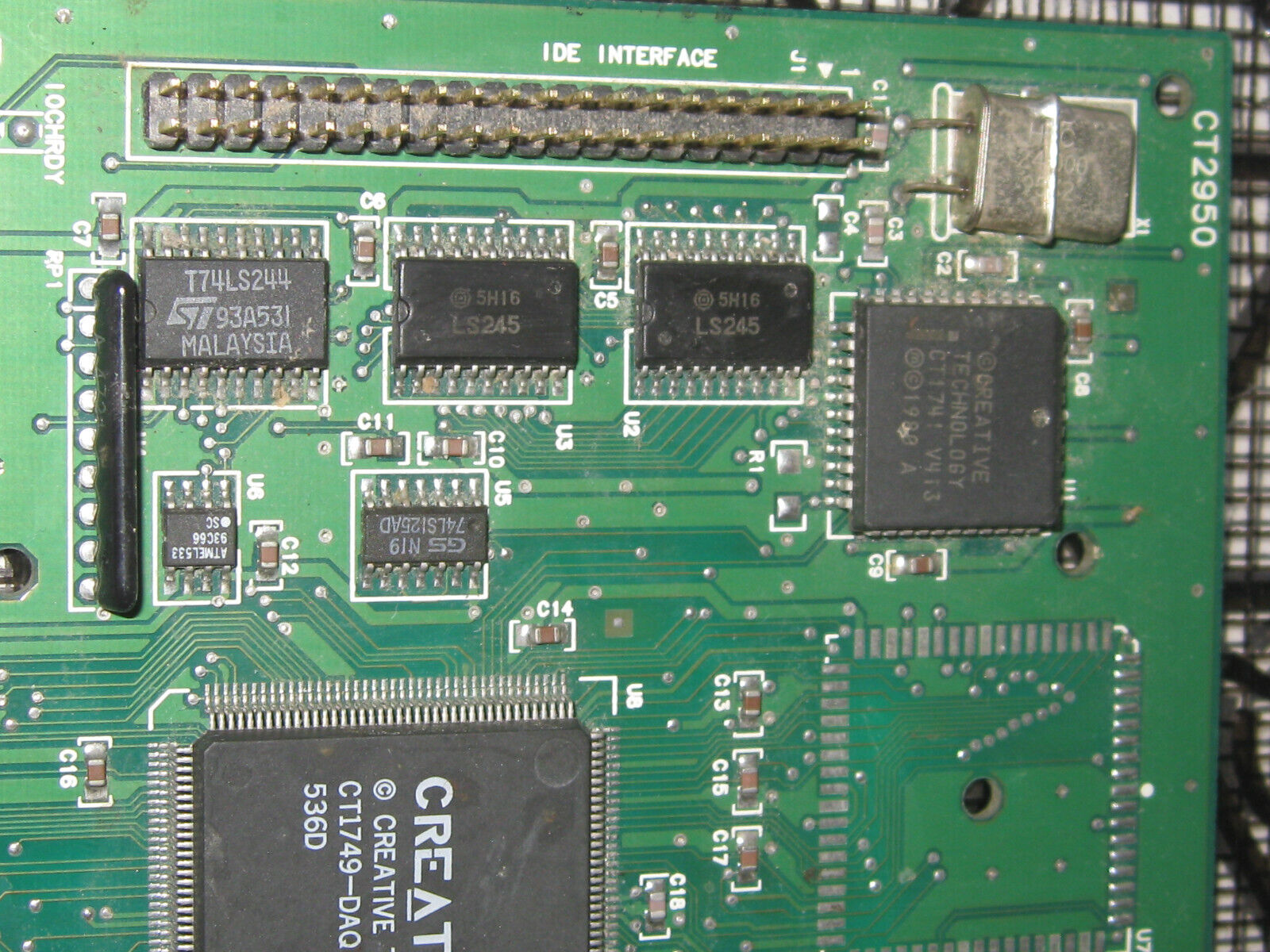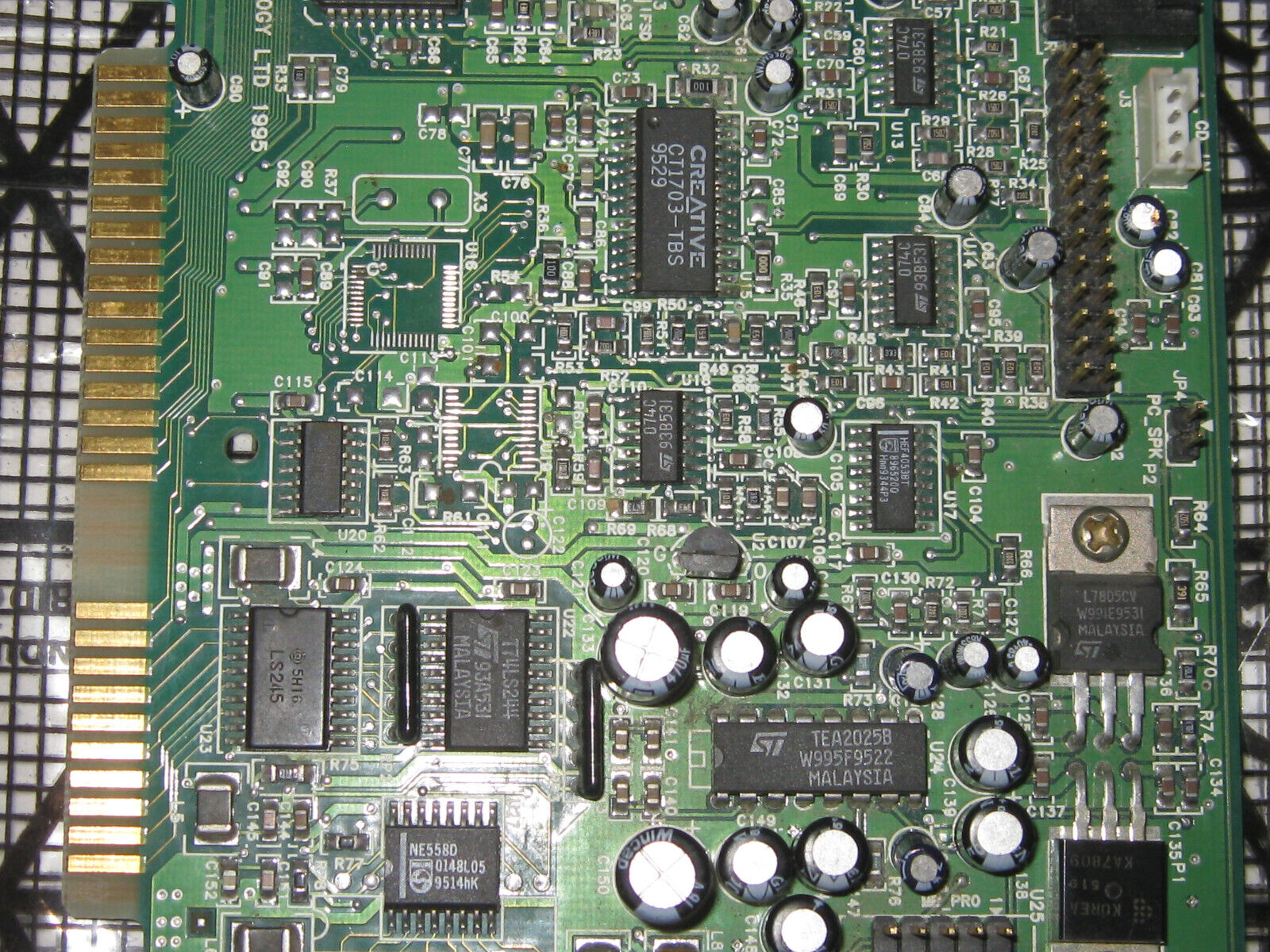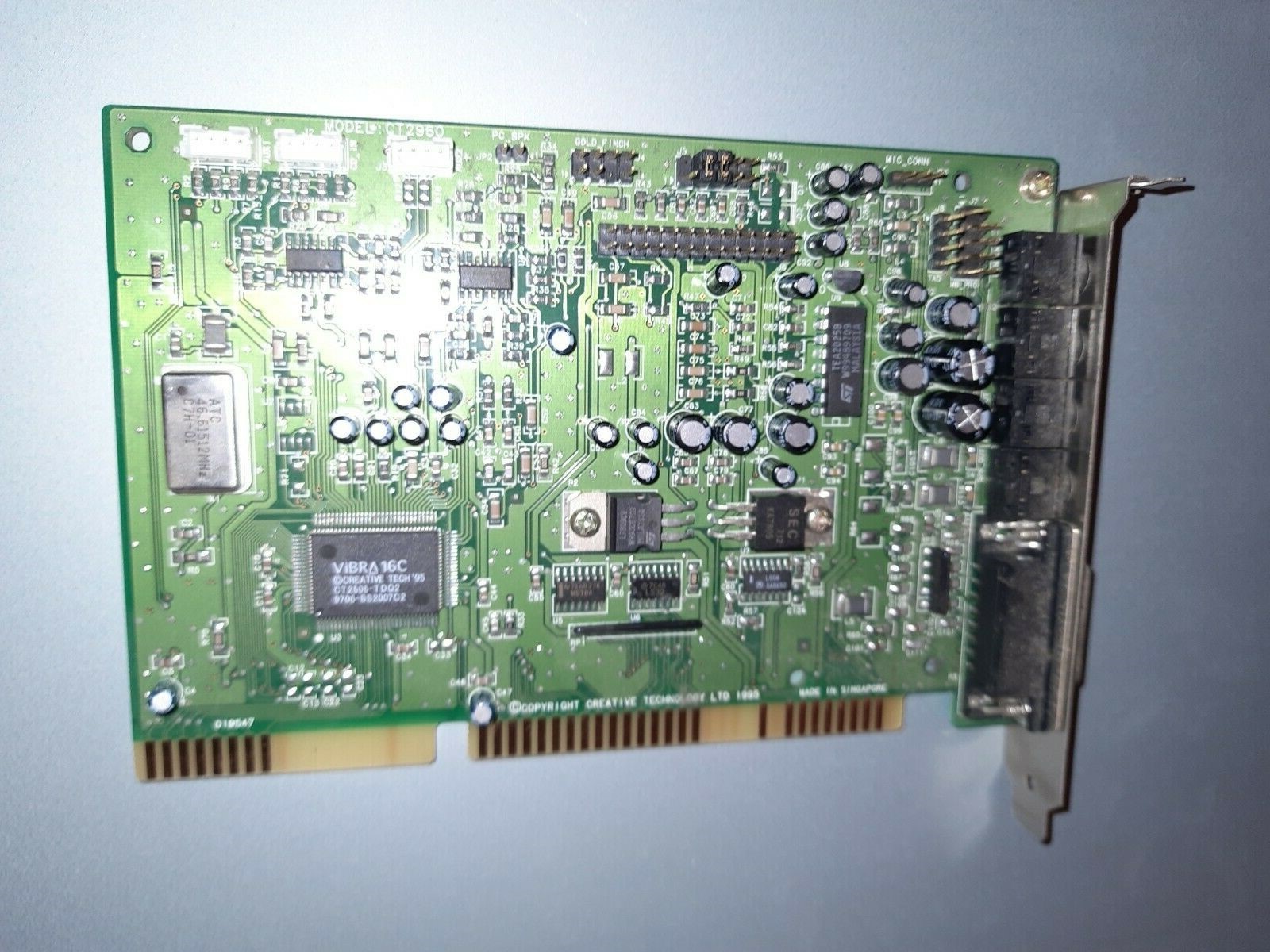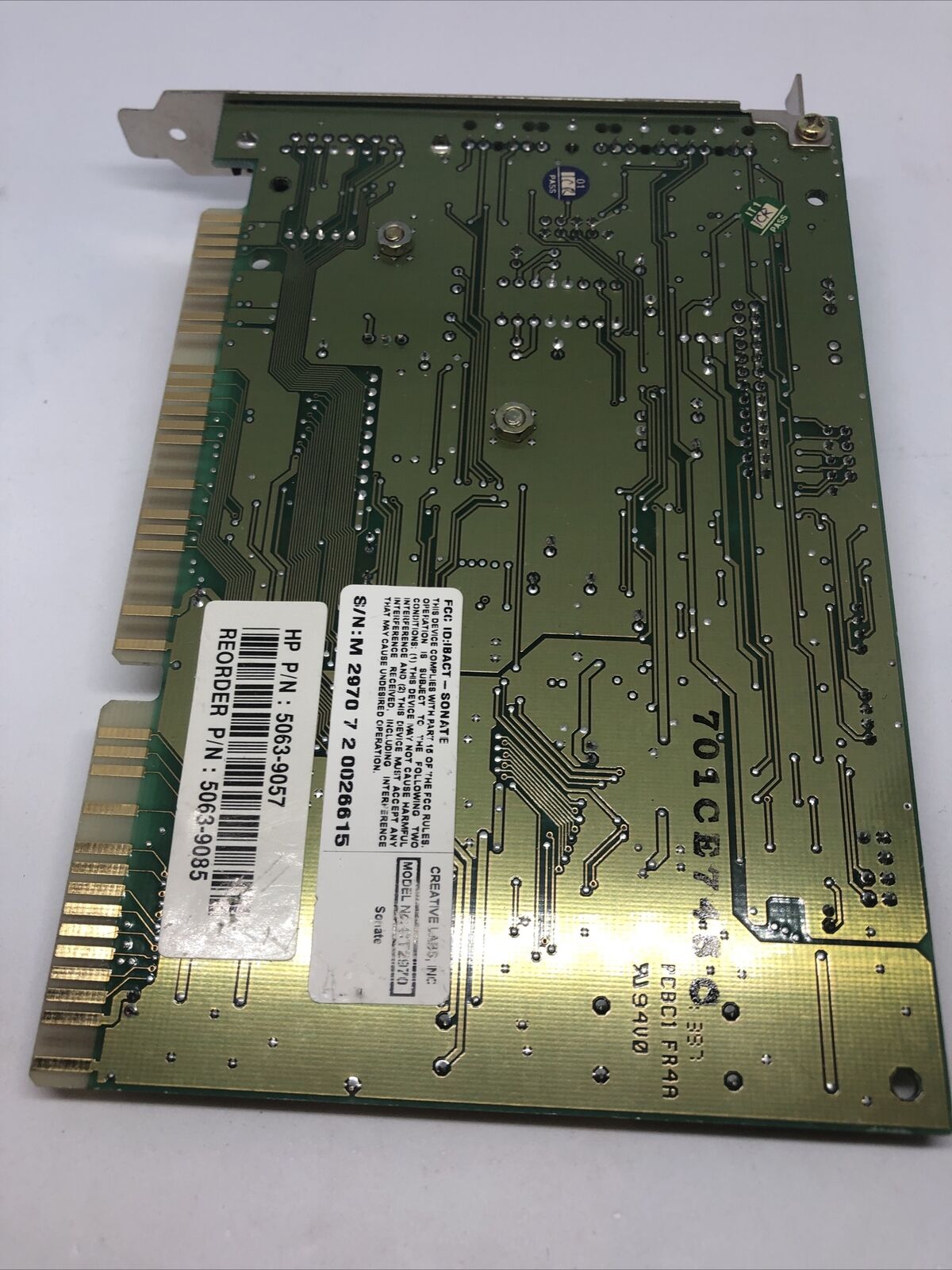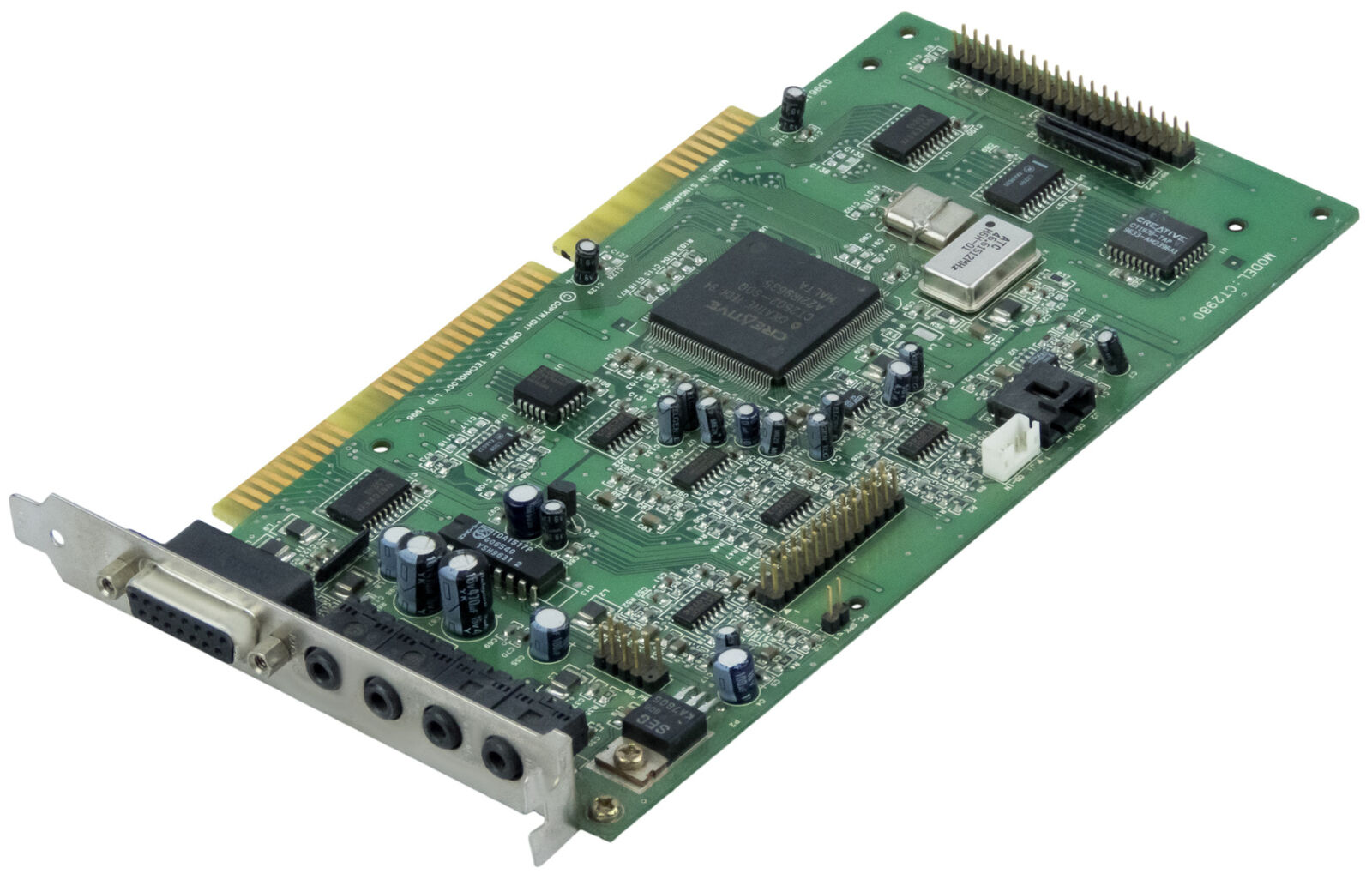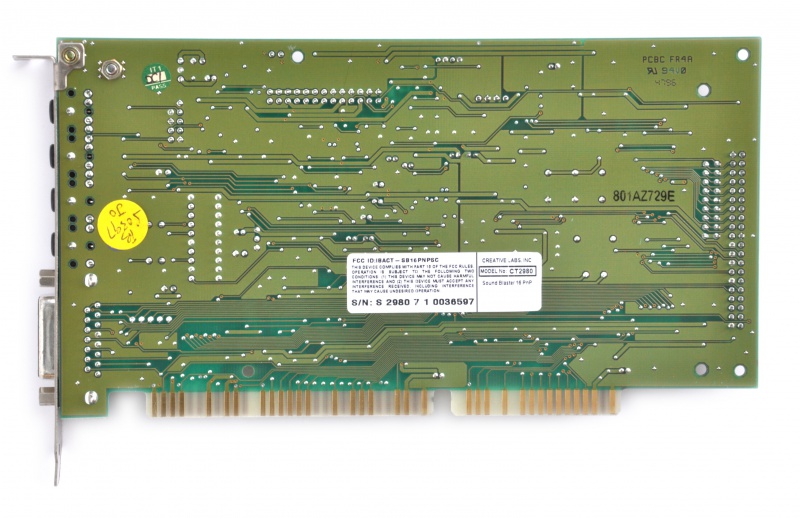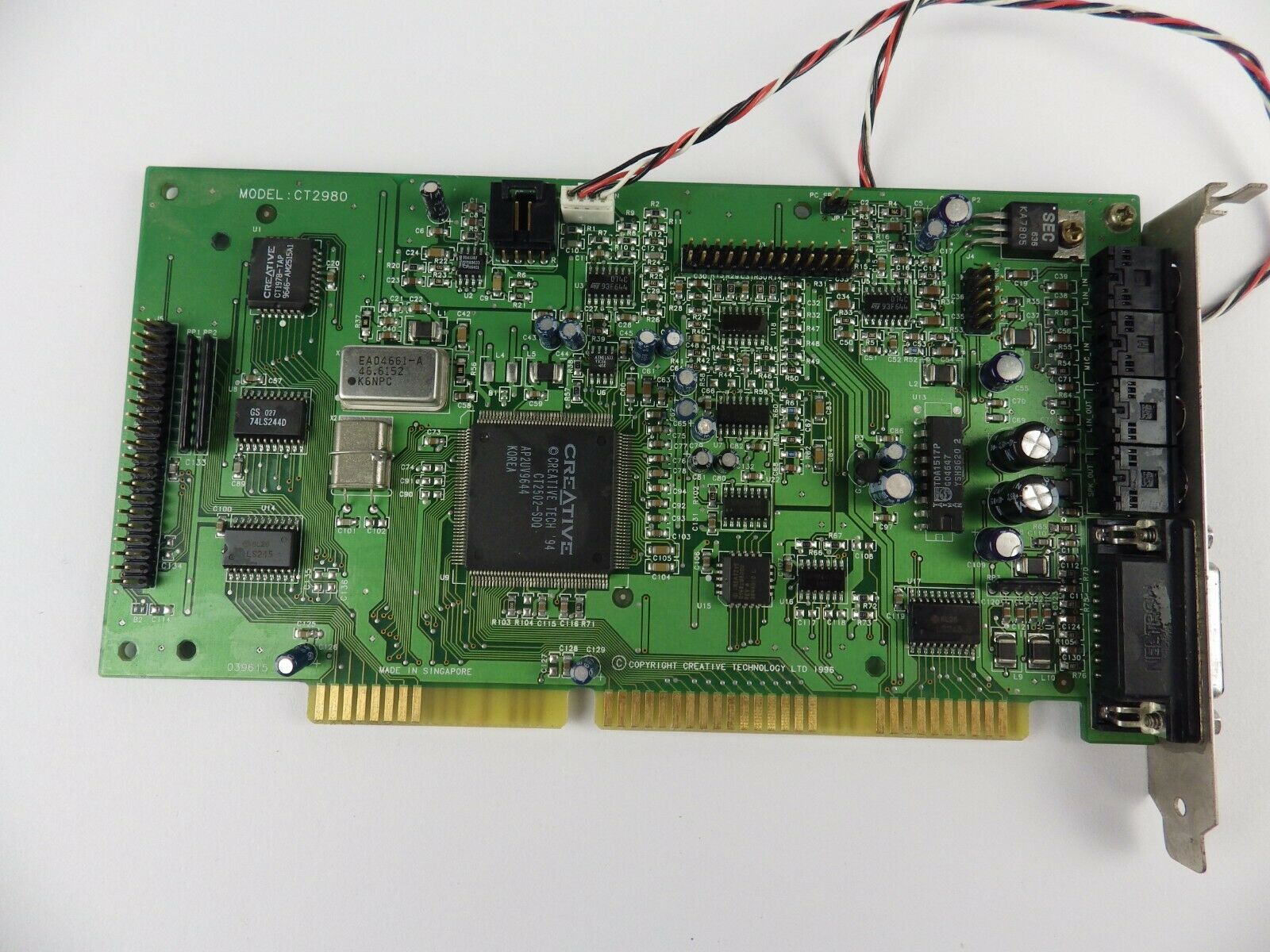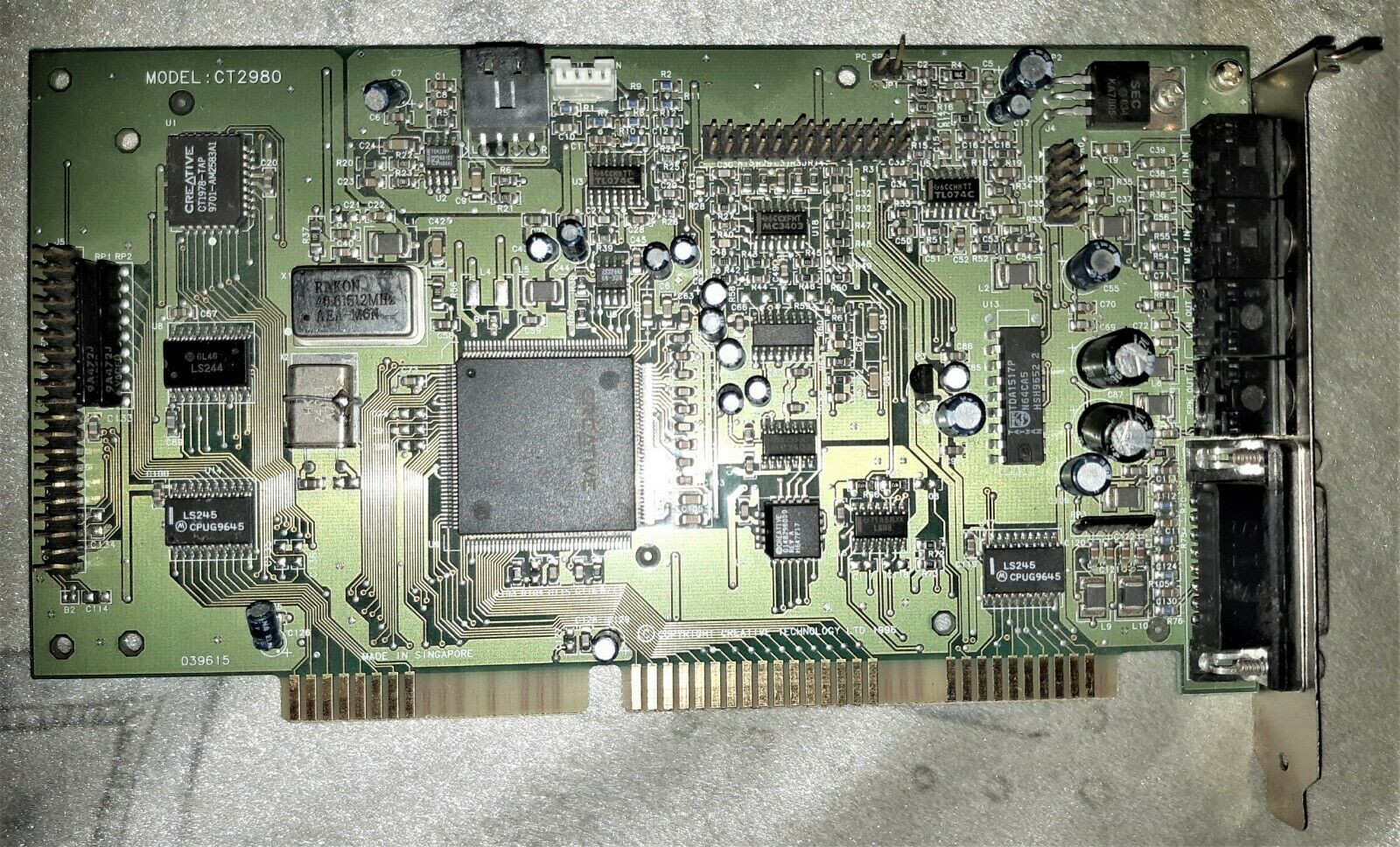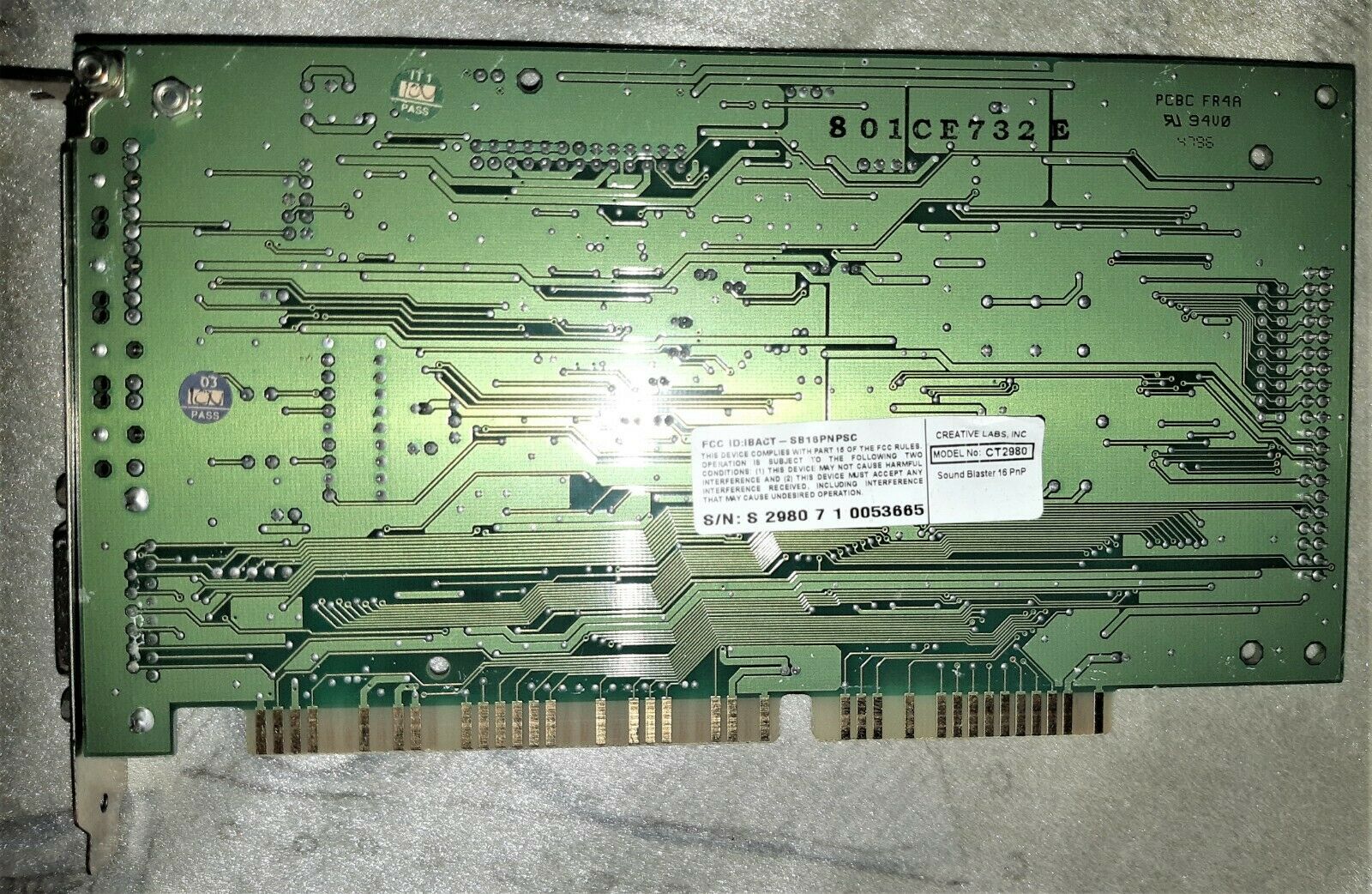 Sound Blaster 16
Sound Blaster 16
In June 1992, the Sound Blaster 16 was introduced as the successor to the Sound Blaster Pro, though the Pro was sold for a number of years alongside the SB16. The first '16' model was CT1740. For the first time you could get a Sound Blaster card with CD-quality (44 kHz) digital audio sampling.
A 1st-gen Sound Blaster 16 (model CT1740)
The Sound Blaster 16 also got a socket for the ASP, or "Advanced Signal Processor" which is chip CT1748A. This was later rebranded CSP, or "Creative Signal Processor" to avoid confusion with Microsoft's Active Server Pages. The SB16 also got a new expansion header for their "Wave Blaster" (CT1910) which was a wavetable daughterboard. "Value" and OEM versions tended to not have the new header nor the ASP/CSP.
In its early stages, Sound Blaster 16 retained the Yamaha OPL3 chip for FM music synthesis, so was still backward-compatible with the original Sound Blaster. Unfortunately, due to a flaw in the initial silicon, the Sound Blaster 16 range do not have proper Sound Blaster Pro compatibility (1 or 2) - so when it ran in "Sound Blaster Pro compatibility mode" (i.e. for all DOS games), it could only support mono playback.
The 16 Pro offers the same high quality sound, plus the facility to upgrade. Also available with advanced signal processing for enhanced sound capability, it features both IDE and Creative/Panasonic CD Rom interface."
- Creative Labs advert in PC Review, September 1995
A PCI version of the Sound Blaster 16 was released, but this lost backward-compatibility with the Sound Blaster due to its lack of DMA for producing sound, so a software driver workaround was provided, although this proved to be less than 100% compatible for many games. In Windows, however, the card worked well.
Creative Labs produced an enormous number of variants of the Sound Blaster 16, which are all listed below. But before we get into the model-by-model breakdown, let's explore a few things that the SB16 range brought, both good and bad...
CSP (Creative Signal Processor) / ASP (Advanced Signal Processor) Chip
The CSP (ASP) chip added some new features to the Sound Blaster line, such as hardware-assisted speech synthesis (through the TextAssist software), "QSound" audio spatialization technology for digital (PCM) wave playback, and PCM audio compression and decompression. Software needed to be written to leverage its unique abilities, yet the offered capabilities lacked compelling applications. As a result, this chip was generally ignored by the market.

The CT1748 Creative Signal Processor chip
Creative renamed ASP to CSP at some point, but they are identical. TFX by Ocean Software is the only game known to support this chip. If your board has a CT1748 chip, either in a socket or soldered to the board, you have the CSP/ASP chip. The chip itself was an SGS-Thomson ST18932 DSP core with 16 KB of program RAM and 8 KB of data RAM built-in.
OPL3 vs CQM
The majority of Sound Blaster 16 cards feature either a discrete Yamaha YMF262 OPL-3 FM synthesizer as used on the Sound Blaster Pro II, or a Creative CT1747 chip which has this synthesizer integrated. Some post-1995 cards (notably the CT2910) feature the fully compatible Yamaha YMF289 FM synthesis chip instead. All of these contain true Yamaha OPL-3 circuitry.

A 2nd-gen Sound Blaster 16 (model CT2940)
Starting in late 1995, Creative designed a cost-reduced replacement for OPL-3 which they called "CQM" (Creative Quadrature Modulation) synthesis, which largely emulated the features of the OPL-3 chip. However, its emulation was far from perfect, producing considerable distortion in FM-synthesized music and sound effects. Click here for a YouTube video that plays the same track using CQM, then on an ESS card using their own OPL-3 compatible "ES-FM" (a good emulation), then from a true OPL3 card. Cards with CQM are to be avoided if you wish to hear true Yamaha FM synthesis as it was originally intended.
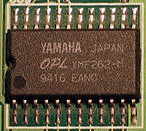
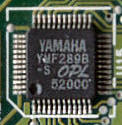

From left: Yamaha YMF262, Yamaha YMF289B, and Creative's CT1978 CQM
The design of the Sound Blaster 16 board, which varied from model to model, could further exacerbate CQM's inaccuracies. Despite its shortcomings, it was much more faithful-sounding than the sample-synthesis simulation that AudioPCI-based sound cards employ. Boards utilizing CQM synthesis have a CT1978 chip, or they may have CQM integrated into another chip, e.g. ViBRA16C/X-based boards.
Hanging MIDI Notes Bug
Cards with DSP version 4.11, 4.12, or 4.13 suffer from hanging notes when digital sounds and MIDI are played at the same time. It does not matter what MIDI device you use (an external device attached to the game/MIDI port or on the Wave Blaster header) - you will get this bug. The best workaround for this is to use a separate card for MIDI. Any card with the Creative CT1747 chip does not suffer from this bug, nor do those with DSP version 4.04, 4.05 or 4.16.

The CT1741 Digital Signal Processor version 4.13
You can check your DSP version by looking at the medium-sized CT1741 chip on the card. it will have a code after the text CT1741, for example "V405" - this would be DSP version 4.05.
Noise Issues
Different DAC chips were used on the Sound Blaster 16, including CT1701, CT1703-T, CT1703-TBS and CT1703-A. The first of these (which is the oldest variant) is rumoured to be the cause of noise on these cards, so if possible, check for a CT1701 or a variant of the CT1703 that is on the card before you buy it.
The CT1703-TBS is apparently decent for noise (low) and is also found on the CT2290, AWE32 and AWE64.
The CT1703-A is the most recent and quietest, and is found on numerous later SB16 cards up to AWE64 Gold. So in order of preference, get a card with the CT1703-A, then the CT1703-TBS, and avoid cards with either the CT1701 or CT1703-T.
Plug & Play or Not
The first generation Sound Blaster 16s
came with the CT1746 bus interface chip - these cards were all non-PnP (configured by jumpers) and no software initialization was required. Second generation Sound Blaster 16s got the CT1747 bus interface chip which included an embedded Yamaha OPL3 chip. These required jumpers to set the I/O range (IOS0 & IOS1), joystick enable/disable (JYEN) and MIDI I/O Select 330/300 (MSEL). However, IRQ and DMA selection were done in software on startup - something Creative called "Auto Init". SBCONFIG.EXE or DIAGNOSE.EXE needed to be loaded in AUTOEXEC.BAT to tell the card which resources to use at boot.
Regardless of whether your card is PnP or not, if you cannot find the original driver disk, or don't want to have the hassle of lots of utilities to initialise your card, you can try UniSound from Vogons member JazeFox - it's a simple utility that detects and initialises your card, making it ready for action. It works on SB16 cards including all the ViBRA-based ones, AWE32, AWE64, as well as many other manufacturers sound cards such as those with OPTi, Crystal, Analog Devices, Yamaha YMF71x, ESS1868/1869, and more! It is designed to work on systems from old 8088/8086 XTs up to Pentium-era and beyond.
So, pros and cons of the Sound Blaster 16 range...
+ CD-quality digital audio
+ On some cards: an MPU-401 compatible game/MIDI port.
+ On some cards: a Wavetable connector for the CT1900/CT1910 "Wave Blaster"
+ On some early cards: a true Yamaha OPL3 chip for best FM music quality
- "Hanging MIDI notes" bug on many cards
- Loss of full Sound Blaster Pro backward compatibility (mono only, not stereo)
-
"noisy" audio
The CT2230 and CT2290 seem to be the most loved SB16s because they offer the lowest noise output of all the SB16 cards and are not Plug & Play. This is good because we retro gamers like to have our choices at the hardware level! Plug & Play was in its infancy in 1994, and would make configuring your card almost impossible outside of Windows.
The table below summarises the various Sound Blaster 16 models, in order of generation. Note that the CSP column qualifies as a 'yes' even if the card only has solder pads for the CSP/ASP chip:
First Generation (CT1xxx)
The CT1740 and CT1750 are the least hassle Sound Blaster 16s to buy (across all the generations). DSP versions 4.05 and lower don't have the hanging MIDI note bug (avoid later CT1750s with 4.11 and 4.12), they output genuine Yamaha FM audio, require no software initialisation, and don't take up any extra system resources.
Unfortunately, some refer to these as "noise blasters", since everything will sound noisy on these cards. Most 8-bit digitized sound has an audible layer of hiss surrounding the sample playback. This hiss is not observed when playing back FM music. Mixing the audio from the Wave Blaster connector will also sound muffled. When 8-bit digital samples play there are often pops and clicks in the audio output.
|
|
|
|
|
CT2700
|
Second Generation (CT2xxx)
Creative Labs introduced the 2nd generation of Sound Blaster 16 cards in 1994, starting with the CT2230. The key difference from the 1st generation is that the Yamaha YMF262 was now gone as a discrete chip. Instead Creative Labs integrated the YMF262 into their own chip called "CT1747". These chips got the official "OPL" logo stamped on them, as they did contain the Yamaha circuitry inside. Also sadly gone was the hardware thumbwheel volume control.
The CT1745A mixer chip from 1992 got an upgrade during this 2nd generation to CT1745-S (1993) and later to CT1745A-S (1994), though the first CT2230 cards still came with the original CT1745A.
They all supported the following sound standards:
- Ad Lib
- Sound Blaster
- Sound Blaster Pro (in mono only)
- Sound Blaster 16
The MPU-401 interface on the 15-pin game/MIDI port continued to be non-standard (the pinouts differ from the Roland standard).
The noise, pops and clicks associated with the first generation were now fully gone when paired with the later CODEC of the second generation. The IRQ and DMA selection was now done by software settings on startup. The settings that still required jumpers were the I/O address selection, the MIDI interface enable/disable and address selection, and the joystick enable/disable, so I would say this is "semi Plug & Play", and doesn't fully conform to the PnP standard.
The least noisy of the Sound Blaster 16 second-gen cards are the CT2940 and CT2980 with an embedded Yamaha YMF chip. These have the CT2502 (ViBRA) chips and are Plug & Play.
|
||
|
||
|
||
|
||
|
||
|
More Images
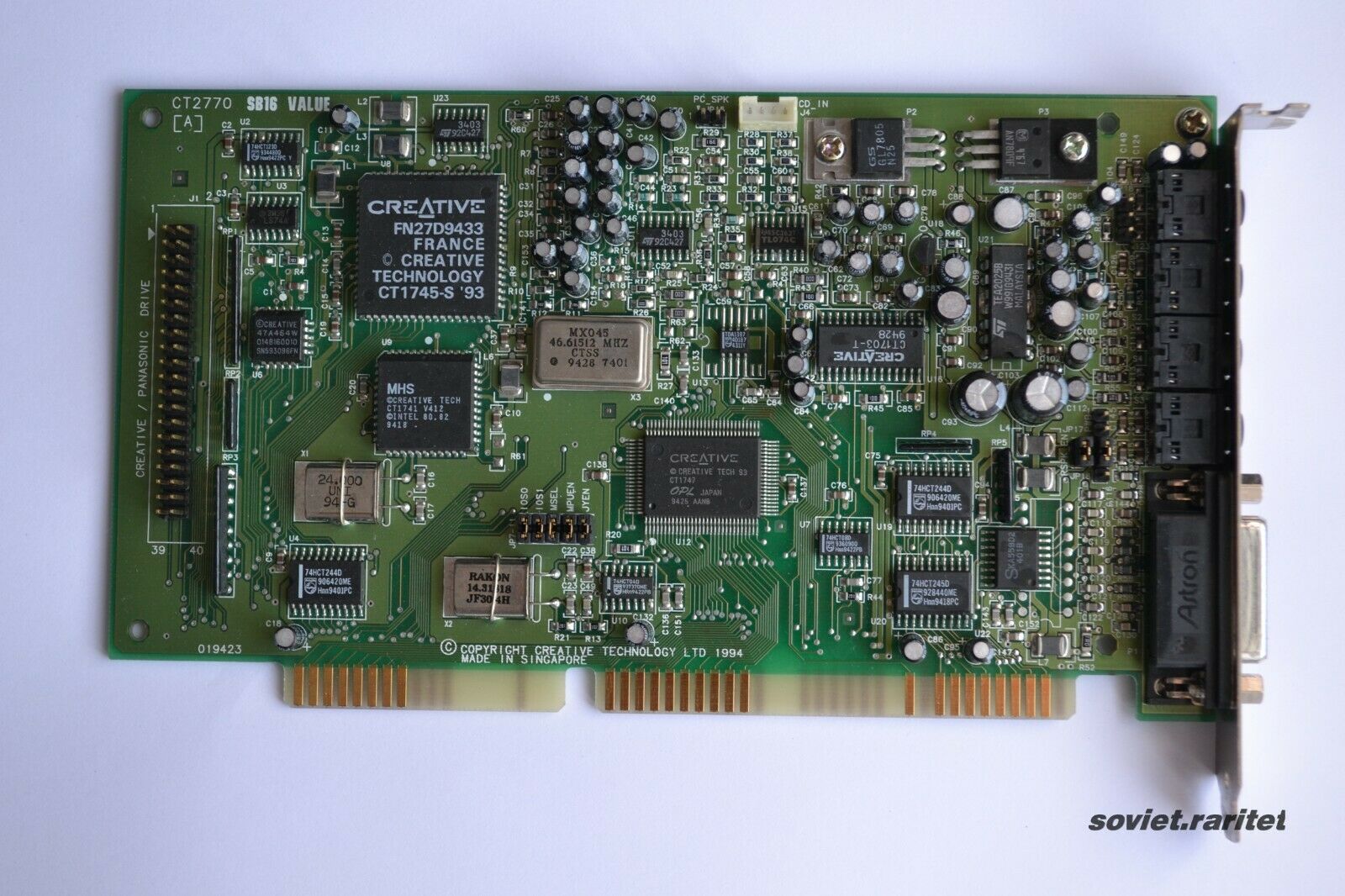

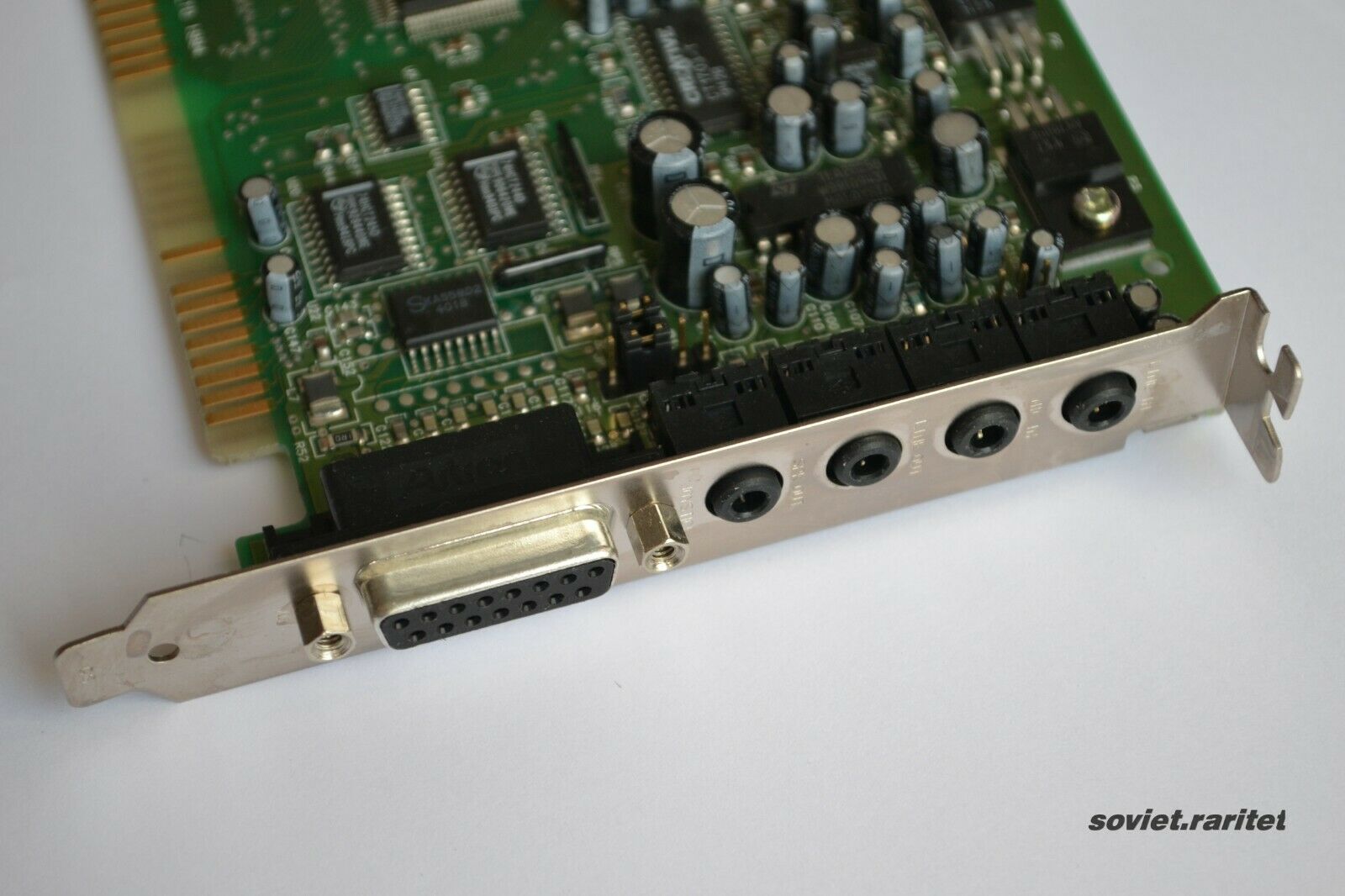
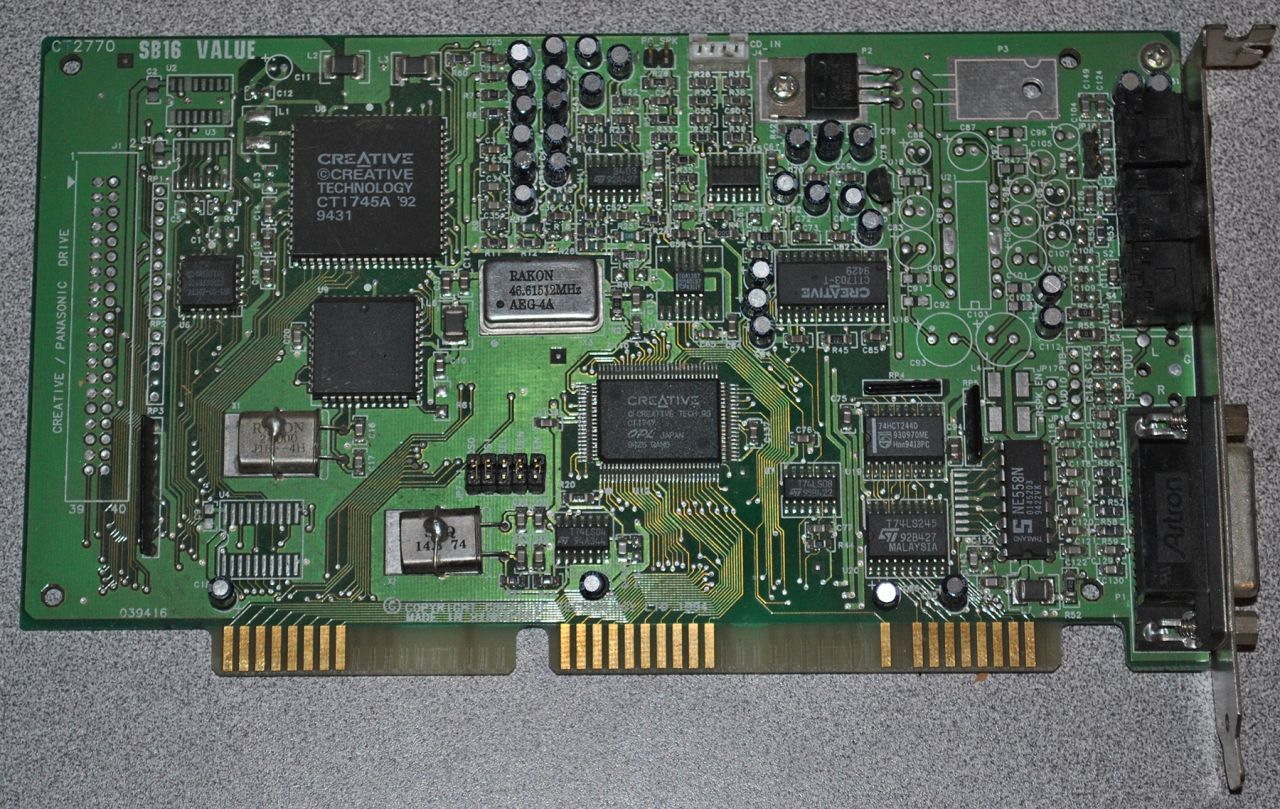

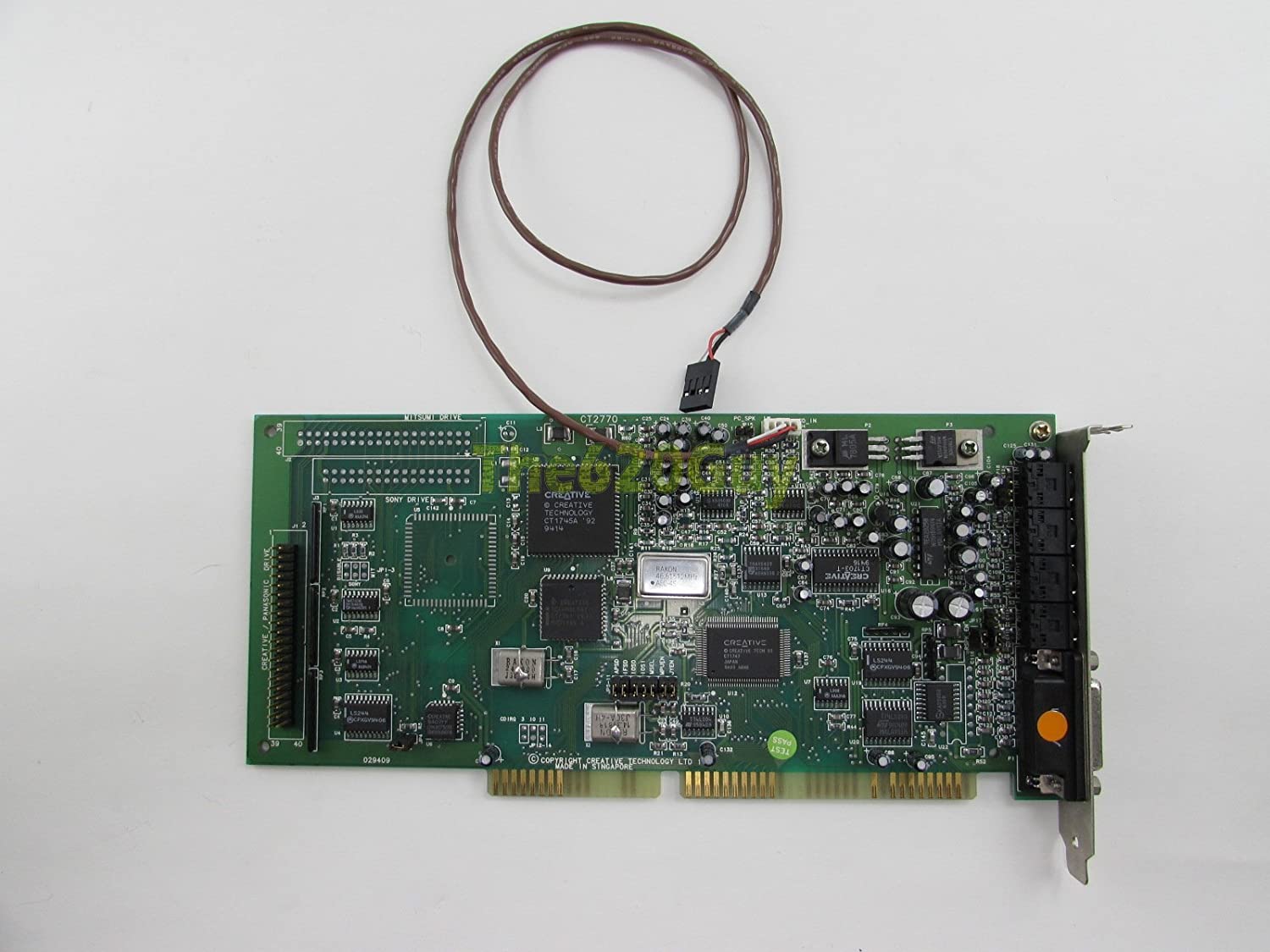
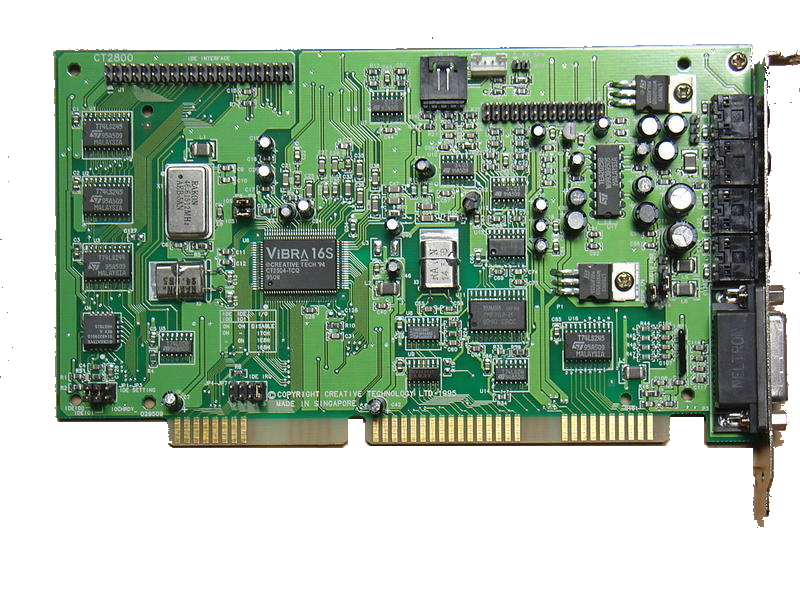 CT2800
CT2800
Launched: 1995
FM Synth: Yamaha YMF262 (OPL3)
Plug & Play: Yes?
Wavetable Header: Yes
CSP/ASP Chip: No
Known DSP Versions: 4.13 (hanging notes bug)
Known Board Revisions: 29809, 49517
FCC ID:
IBACT-SBV16S
Following the success of the CT2260 and its first ViBRA-16 card, the CT2800 or Sound Blaster Vibra 16S, uses an updated chip - the ViBRA 16S (CT2504). Early ViBRA 16S models still had the Yamaha OPL3 FM synthesizer chip onboard as in the image above, whereas later ViBRA 16S, ViBRA 16C and ViBRA 16XV cards all have the CQM (Creative Quadrature Modulation) chips instead. These were Creative's own take on the Yamaha OPL and are generally considered to be sub-par compared to the Yamaha.
The CT2800 got an IDE CD-ROM interface and a wavetable connector.
Some boards with revision 49517 removed the Line Out socket on the backplate as well as the IDE interface connector. This must have been an unknown submodel of the CT2800, e.g. CT2801 or CT2809, though still kept the base model CT2800 code on the silkscreen (which was standard behaviour with Creative's sound cards).
A later board revision, 49517, was found on Dell OEM versions of the CT2800. This removed the IDE interface connector but kept the Line Out socket.
More Images

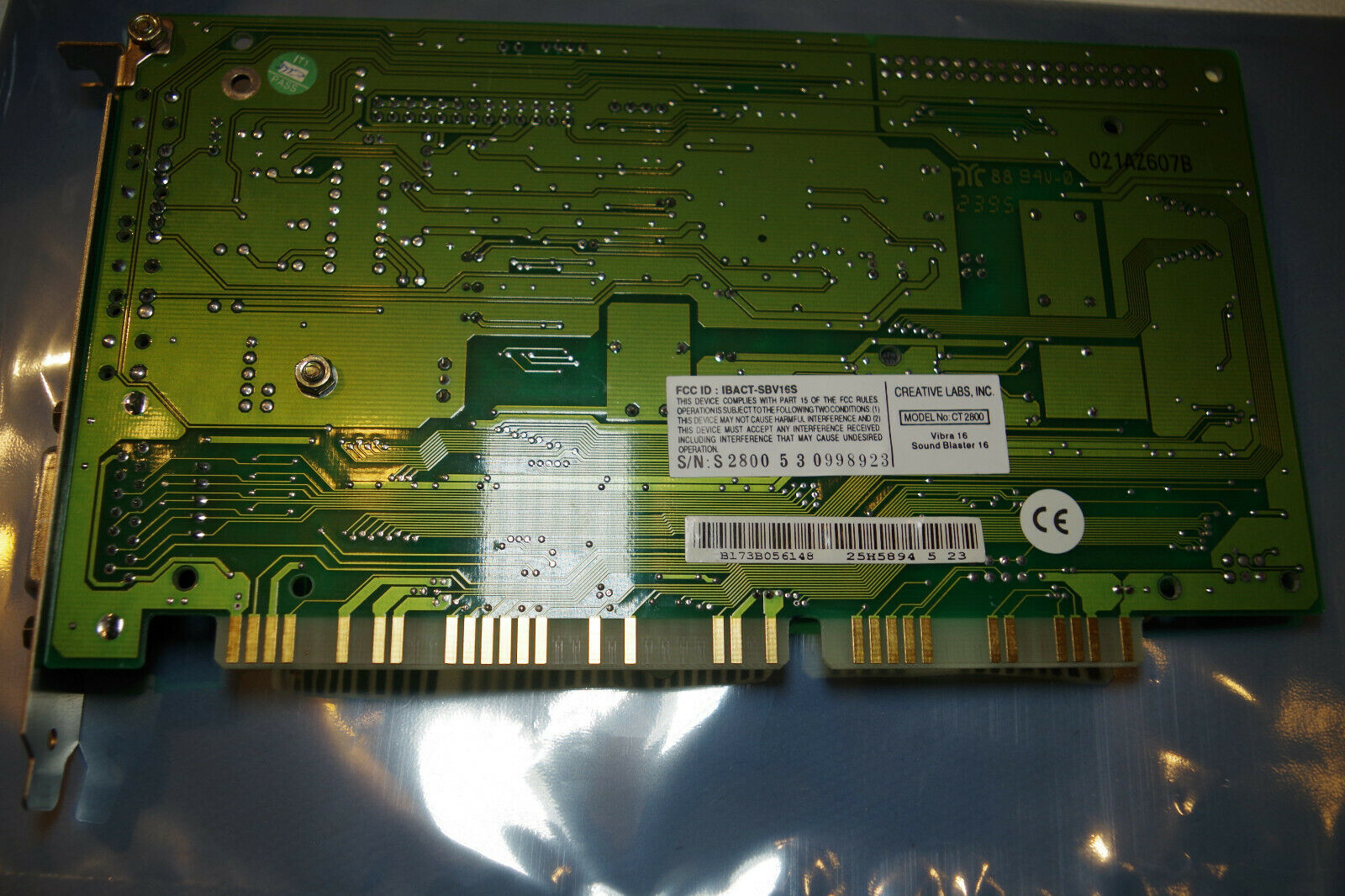



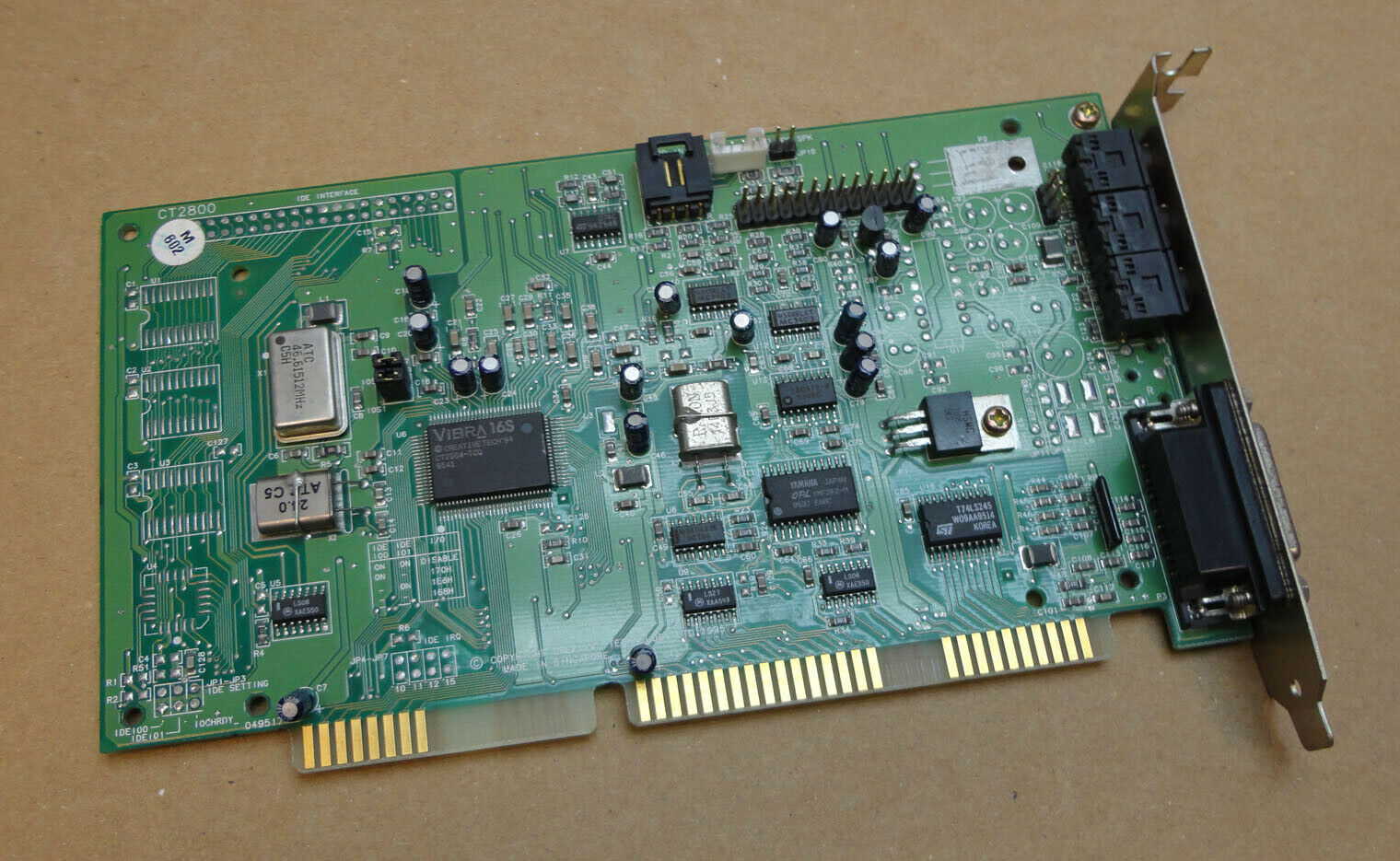
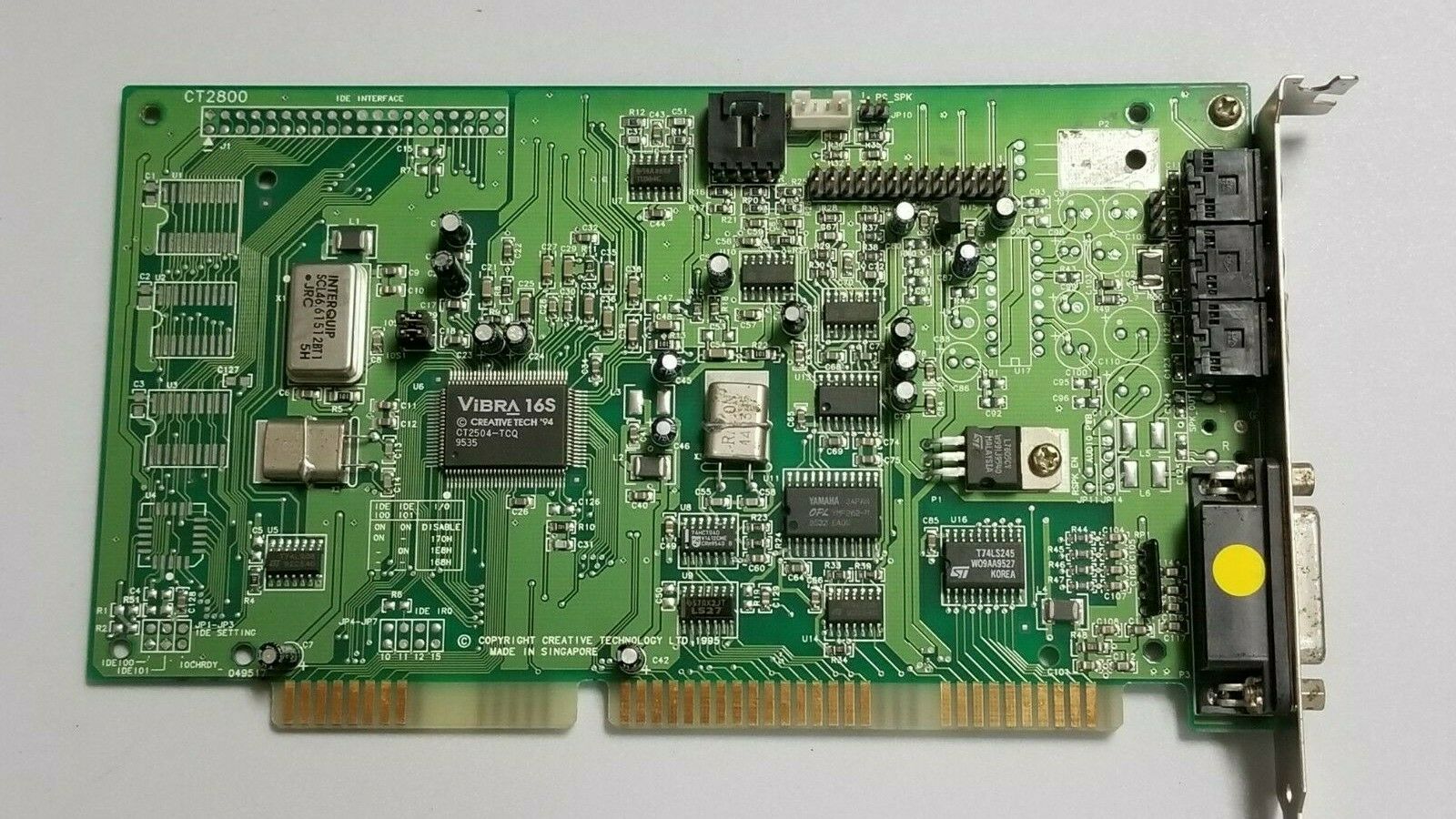

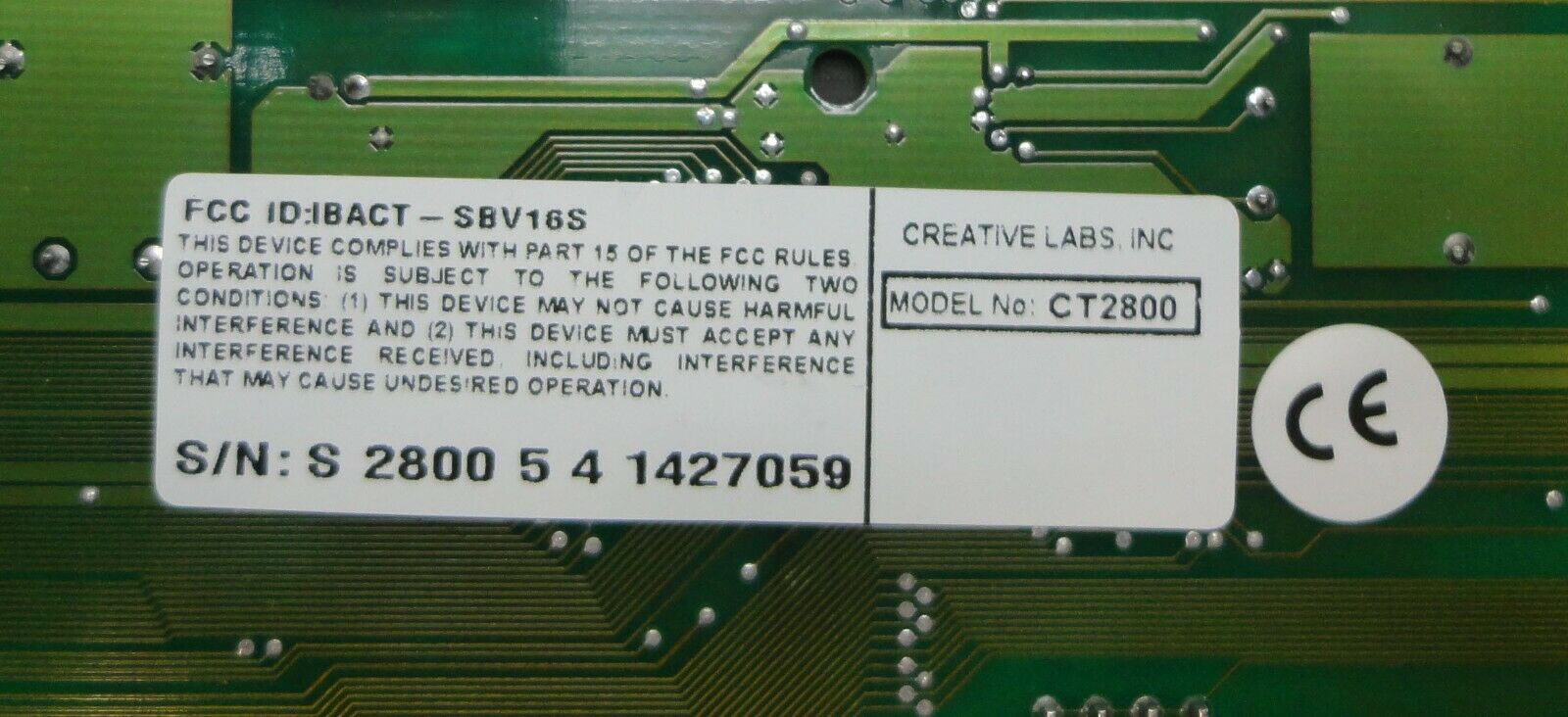
 CT2810
CT2810
Launched: 1994
FM Synth: Yamaha YMF262 (OPL3)
Plug & Play: Yes?
Wavetable Header: Yes
CSP/ASP Chip: No
Known DSP Versions: (unknown)
Known Board Revisions: 019449
FCC ID:
IBACT-SBV16IDE
The CT2810 is another strange card in that it shares its FCC ID with the CT2290 range, but has the ViBRA-16 chip the same as the CT2260. But unlike the CT2260, the CT2810 gets an IDE CD-ROM interface.
It was produced for the OEM market.
 CT2830 / CT2839
CT2830 / CT2839
Launched: 1995
FM Synth: Yamaha YMF262 (OPL3)
Plug & Play: No
Wavetable Header: Yes
CSP/ASP Chip: Yes, soldered-in or socketed
Mixer Chip: CT1745A
DSP Chip: CT1741
Bus I/F Chip: CT1746B
DAC Chip: CT1701-T or Asahi Kasei AK4501-VS
Known DSP Versions: 4.12 and 4.13 (hanging note bug)
Known Board Revisions: 29508
FCC ID:
IBACT-SB16IDE46
CT2830 is similar to the CT2700 and even the original CT1740 Sound Blaster 16, in that it has a real Yamaha OPL3 chip, has the same DSP and even still supports a CSP/ASP chip. It comes with an IDE CD-ROM interface.
For this card, read the Noise Issues section further up this page.
Interestingly for a 2nd-generation SB16 card, this is the only one that is not Plug & Play. This confirms this card is really the same as a 1st-gen CT2700 / CT1740 but was released during the 2nd-gen period. You can configure the base address with jumpers IOS0/IOS1, the IRQ with jumpers IS0/IS1, and low/high DMA channels with jumpers DAS0/DAS1 and DBS0/DBS1.
Marc Sven Schulte informed me of the fact the DAC chip on these cards is sometimes the AK4501-VS by Asahi Kasei Microelectronics (AKM) and not the Creative-branded CT1701-T. It's possible Creative simply took this third-party DAC and got permission to rebrand it.
More Images
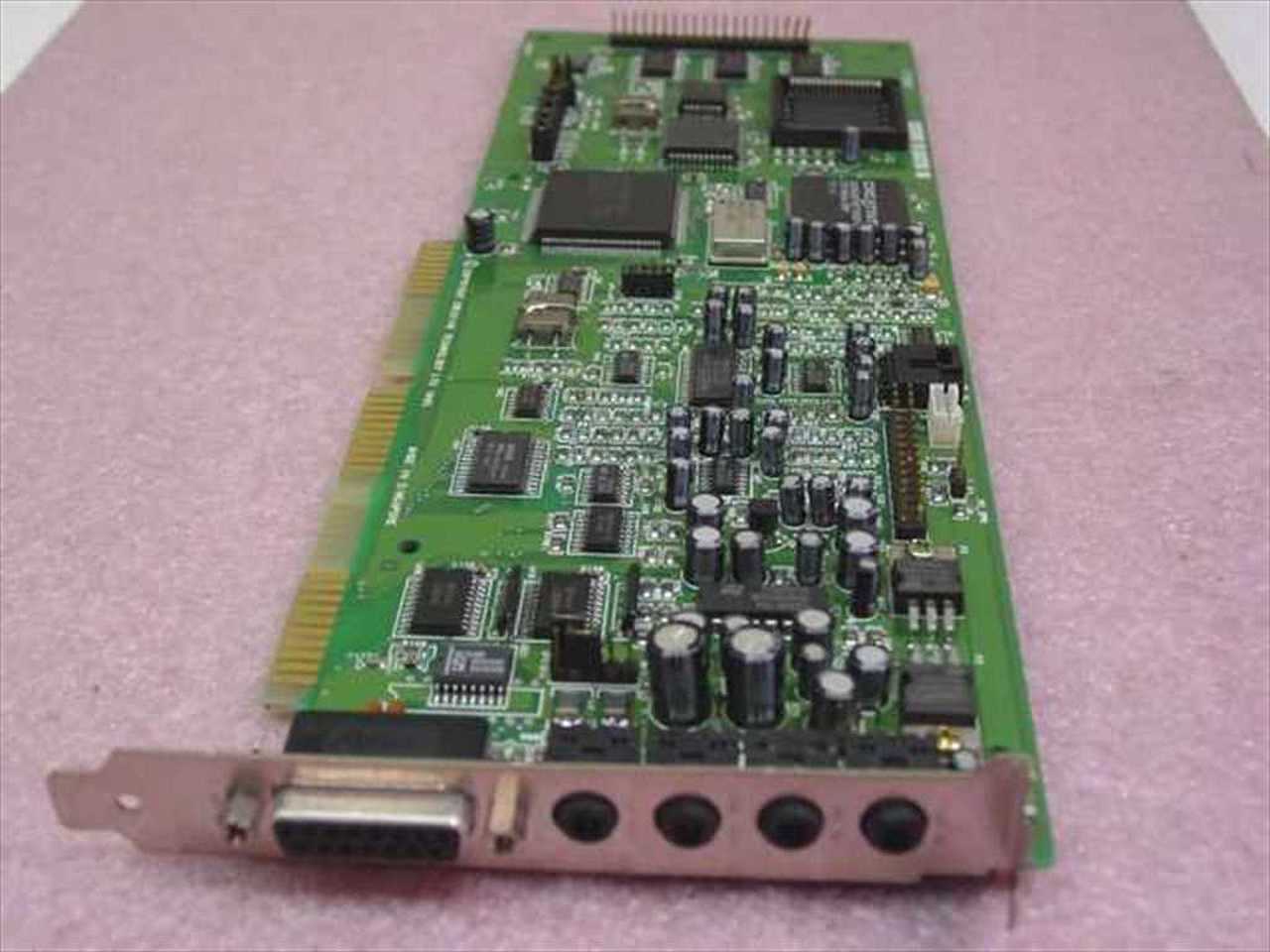
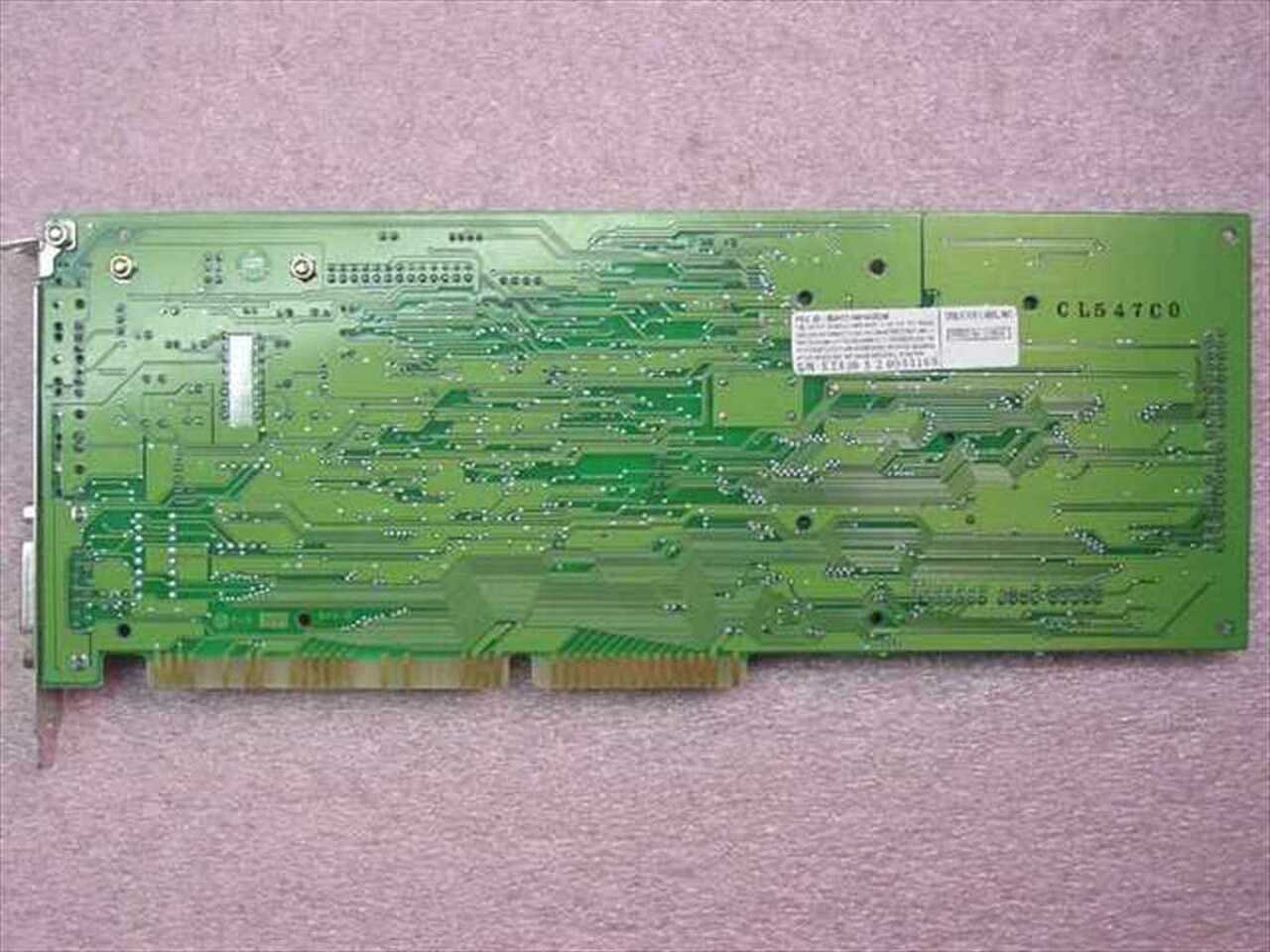



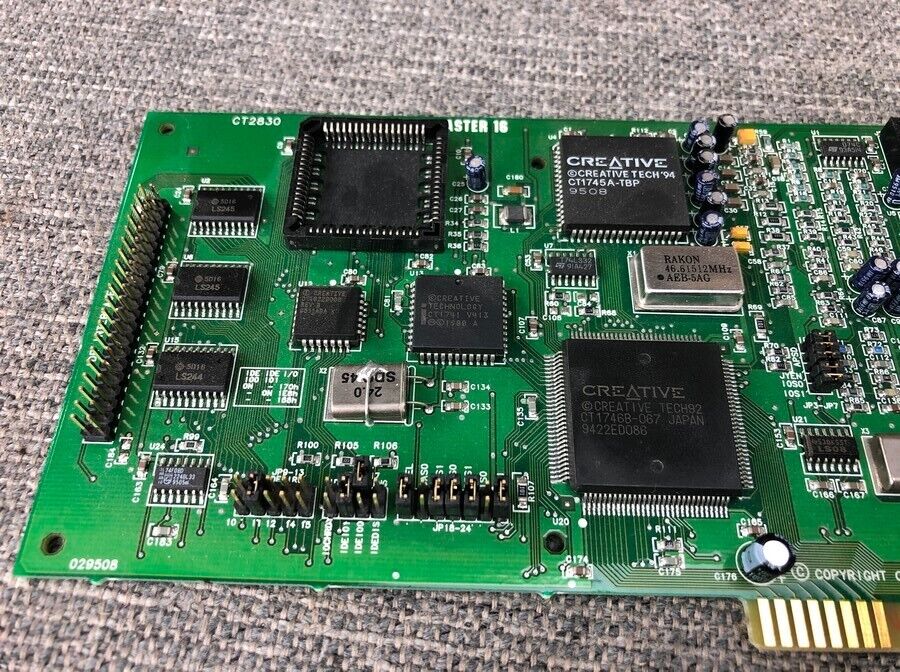
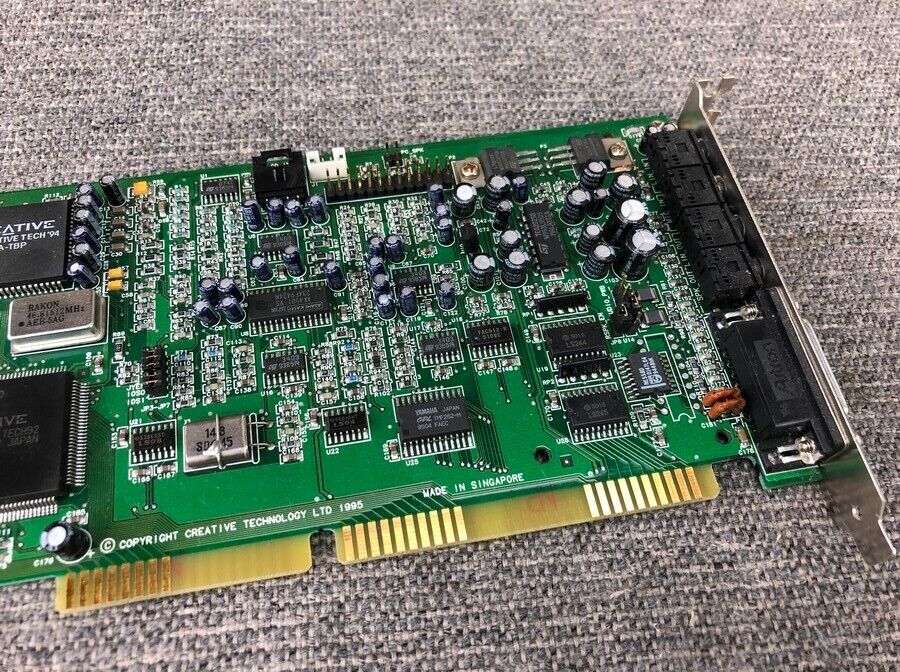
Marc Sven Schulte's CT2830 with all caps replaced:
.jpg)
 CT2840
CT2840
Launched: 1995
FM Synth: CT1747 (integrated Yamaha YMF262 OPL3)
Plug & Play: No
Wavetable Header: No
CSP/ASP Chip: No
Mixer Chip: CT1743-CAP
DSP Chip: CT1741
Known DSP Versions: 4.13 (hanging note)
Known Board Revisions: 19526
FCC ID:
IBACT-SB16M1
The CT2840 was a "Value Edition" card. It was the OEM version of a CT2291.
It came with an IDE interface.
This card is known for its low noise.
More Images



 CT2860
CT2860
Launched: 1995
FM Synth: Yamaha YMF262 (OPL3)
Plug & Play: Yes
Wavetable Header: Yes
CSP/ASP Chip: No
Known DSP Versions: ?
Known Board Revisions: 19518, 29528
FCC ID:
IBACT-MENUET
Value edition. Vibra 16S chipset.
OEM version of CT2291 for the HP Menuet.
No CD-ROM interface.
More Images


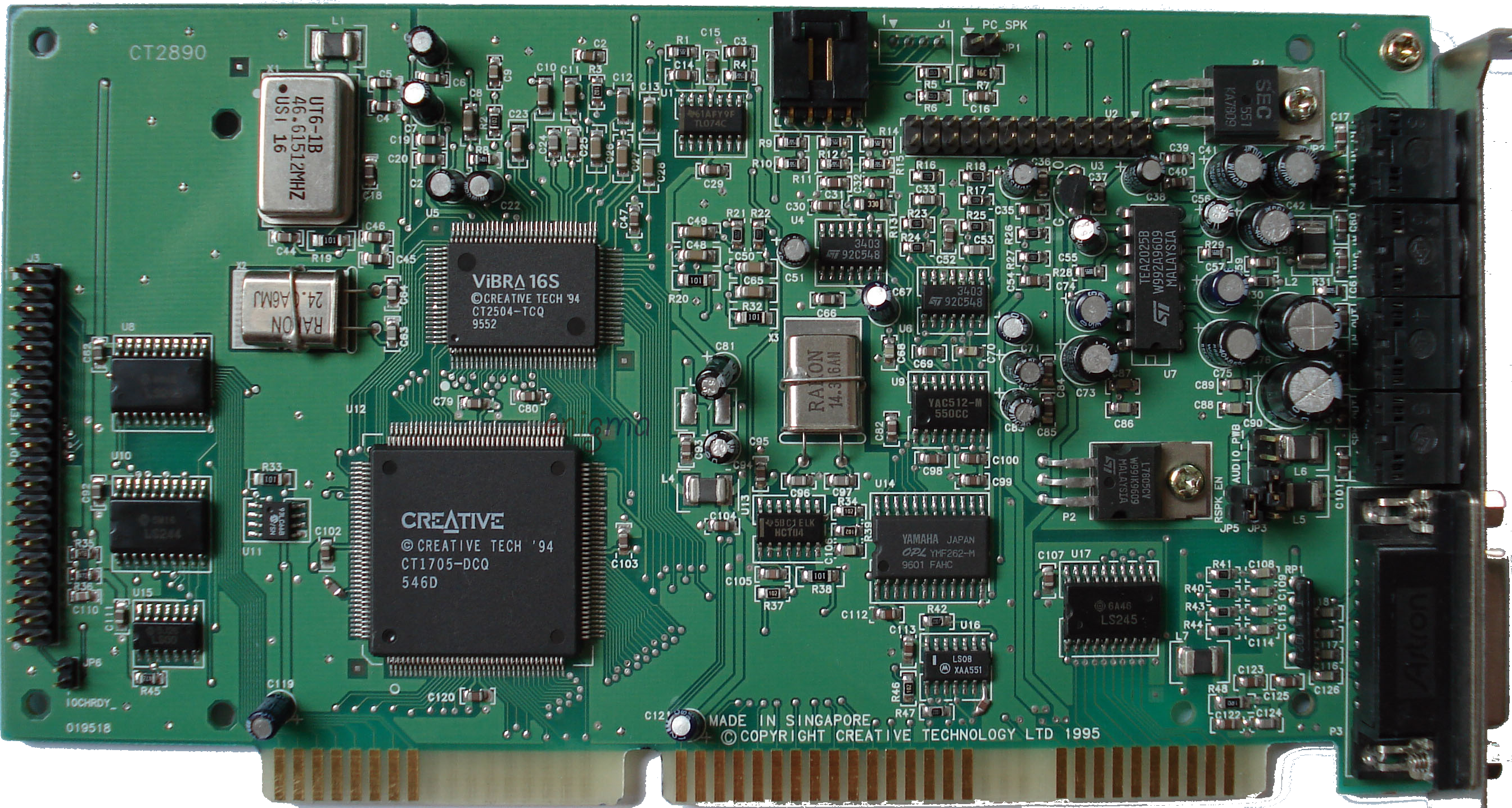 CT2890
CT2890
Launched: 1995
FM Synth: Yamaha YMF262 (OPL3)
Plug & Play: Yes
Wavetable Header: Yes
CSP/ASP Chip: No
Bus I/F Chip: CT1705-DCQ
Known DSP Versions: (unknown)
Known Board Revisions: 19518, 29610
FCC ID: IBACT-V16SPNP
This is a Value edition card and is the OEM version of a CT2959. It has the ViBRA 16S chipset and a real full-size Yamaha YMF262 (OPL3) chip. This was the first Creative card to use their new CT1705 bus interface chip which provided it with full Plug & Play capability. Most other 2nd-generation SB16s had the bus interface logic embedded in the CT1747 chip or in the ViBRA chip (CT2501 or CT2504) on ViBRA cards.
No clicking noises in Prince of Persia.
Ringing in Tyrian, Descent, MPXPlay, all in SBPro Stereo (high-speed) mode.
Distortion in high volumes which can NOT be fixed with the mixer.
OPL3 sounds good.
Good balance between FM and PCM.
75 SNR (great).
Buggy MPU-401, hanging notes and stuttering Duke3D.
More Images
Third Generation (CT29xx)
Most third-generation cards come with the Creative Labs CQM chip instead of true OPL3 Yamaha chip, but there are cases where a Yamaha chip is present. The vast majority of these cards are jumper-free and are fully ISA Plug & Play.
|
||
CT2920 PnP For this card, read the Noise Issues section further up this page. |
||
CT2929Value edition. |
||
|
More Images
 CT2950
CT2950
Launched: 1995
FM Synth: Creative CT1978 (CQM)
Plug & Play: Yes
Wavetable Header: Yes
CSP/ASP Chip: No
Mixer Chip: CT1745A-S
Known DSP Versions: 4.13 (hanging note bug)
Known Board Revisions: 19529, 29538
FCC ID: IBACT-SB16PROP49
Value Edition. For this card, read the Noise Issues section further up this page.
In September 1995, SB16 Value cards would be bundled with 10 EA games for just £110. The games bundle would likely be on a single CD-ROM, and would comprise some good games like Wing Commander, PGA Tour Golf and Indianapolis 500, but largely pretty poor ones. If you didn't want the games bundle the card alone would retail for £85.
More Images
CT2959
Value edition.
PnP.
 CT2960
CT2960
Introduced: 1995
Plug & Play: Yes
FM Synth Chip: CT2505
with integrated Creative CT1978 (CQM)
DSP Versions: 4.16
Known Board Revisions: 19547
FCC ID: IBACT-SBPRELUDE
Value edition. OEM version.
The ViBRA 16C chip was more commonly used on motherboards to provide embedded audio.
This card has been reported to have the hanging note bug, but the only cards I have seen have DSP v4.16 which does not suffer this.
More Images
CT2961
Basic edition.
PnP.
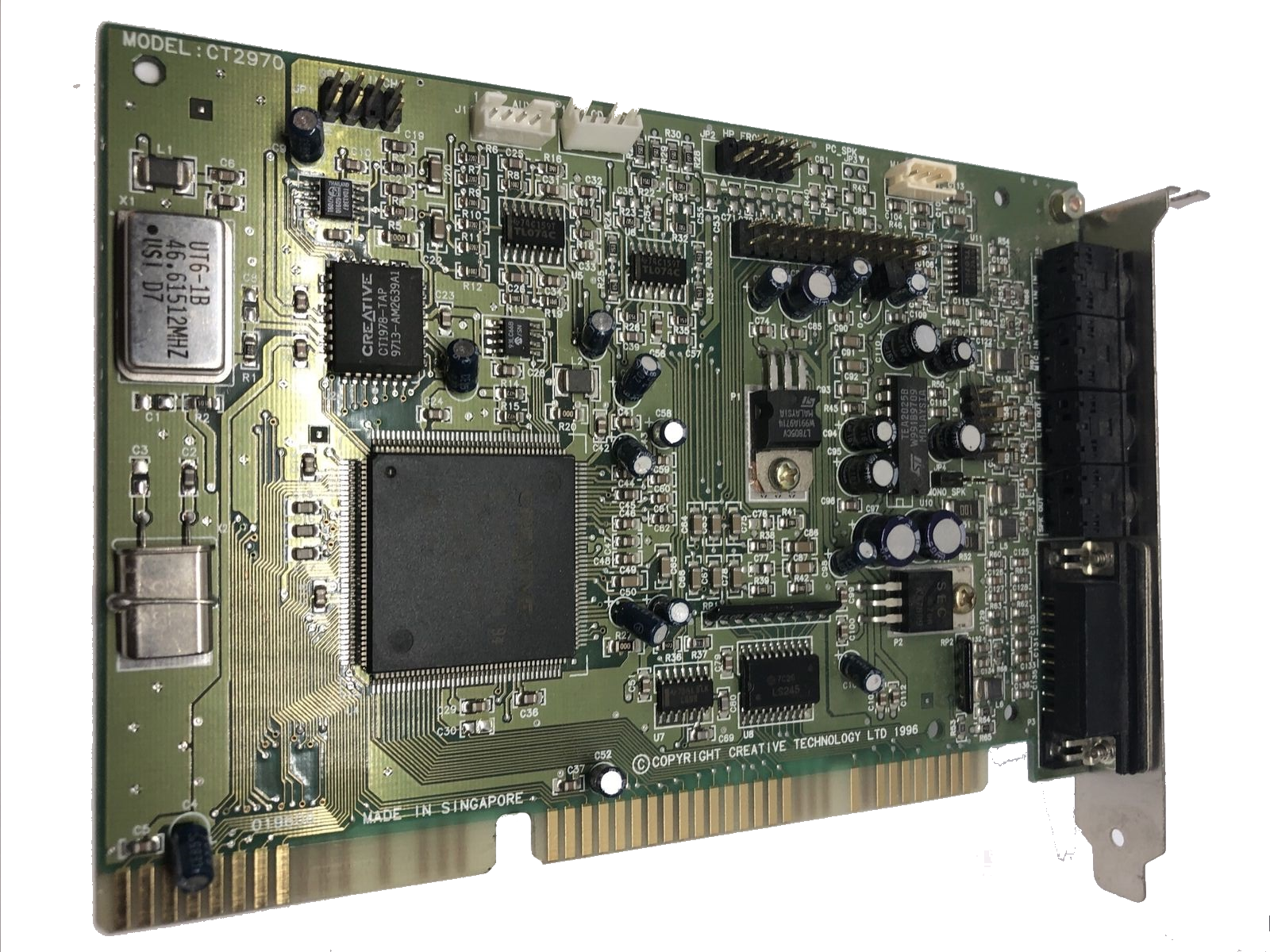 CT2970
CT2970
Introduced: 1996
FM Synth: Creative CT1978-TAP (CQM)
Plug & Play: Yes
Wavetable Header: Yes
CSP/ASP Chip: No
Known DSP Versions: (unknown)
Known Board Revisions: 19606
FCC ID: IBACT-SONATE
The CT2970 was an OEM version for Hewlett-Packard. These have the CT2502 (ViBRA) chips and are Plug & Play.
More Images
 CT2980
CT2980
Introduced: 1996
FM Synth: Yamaha YMF298 (OPL3) or Creative CT1978-TAP (CQM)
Plug & Play: Yes
Wavetable Header: Yes
CSP/ASP Chip: No
Known DSP Versions: (unknown)
Known Board Revisions: 39615
FCC ID: IBACT-SB16PNPBC, IBACT-SB16PNPSC
Sound Blaster 16 Value edition. Most of these have the CT1978 CQM FM synthesizer chip which is almost universally considered poorer quality than a true Yamaha OPL3 chip (some CT2980 cards have the original Yamaha chip which is preferable). If it has the Yamaha chip instead, this is one of the lowest-noise SB16 cards you will find.
Has an IDE CD-ROM header.
More Images
Drivers and Install Disks
Original Sound Blaster 16 DOS Installation disks
Sound Blaster 16 Drivers
Sound Blaster 16 Value Edition - Drivers and Application disks
Original and Basic Edition floppy disks for CT1730
CT1730 Windows 95 Drivers and Applications disks
CT1730 Creative CR-563 and IDE CD-ROM Drivers Disk for Windows 95 (UPG-W95-01-ENG)
CT1730 Sound Blaster 16/AWE32 Drivers Disk for Windows NT 3.5 (revision 1)
CT2260 ViBRA16 Driver
CT2770 SB16 Value Edition floppy disks
CT2940 Installation Program Loader for SB16/AWE32/AWE64
Init utility to get some Sound Blaster PnP cards running on an XT or 286


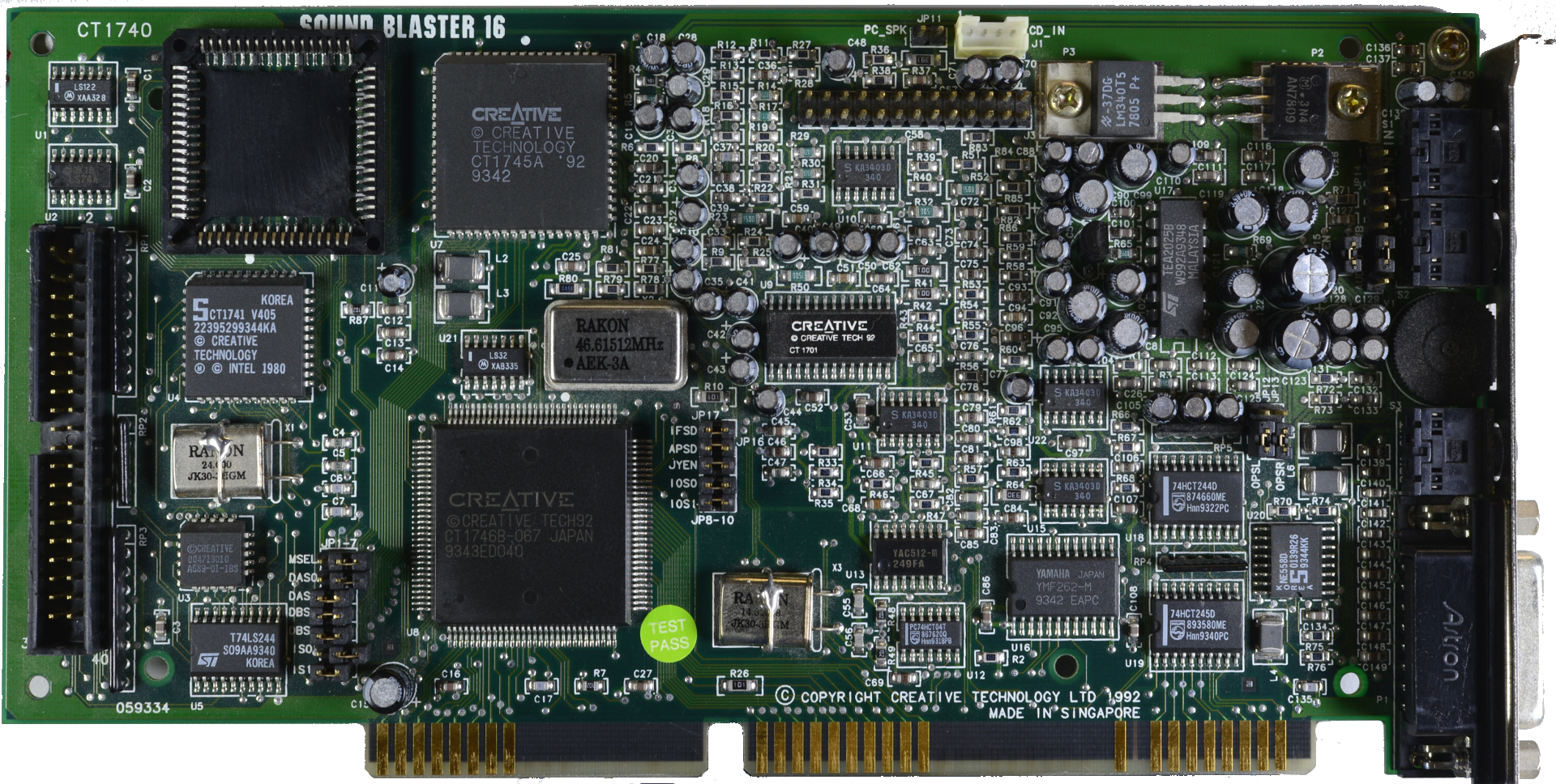
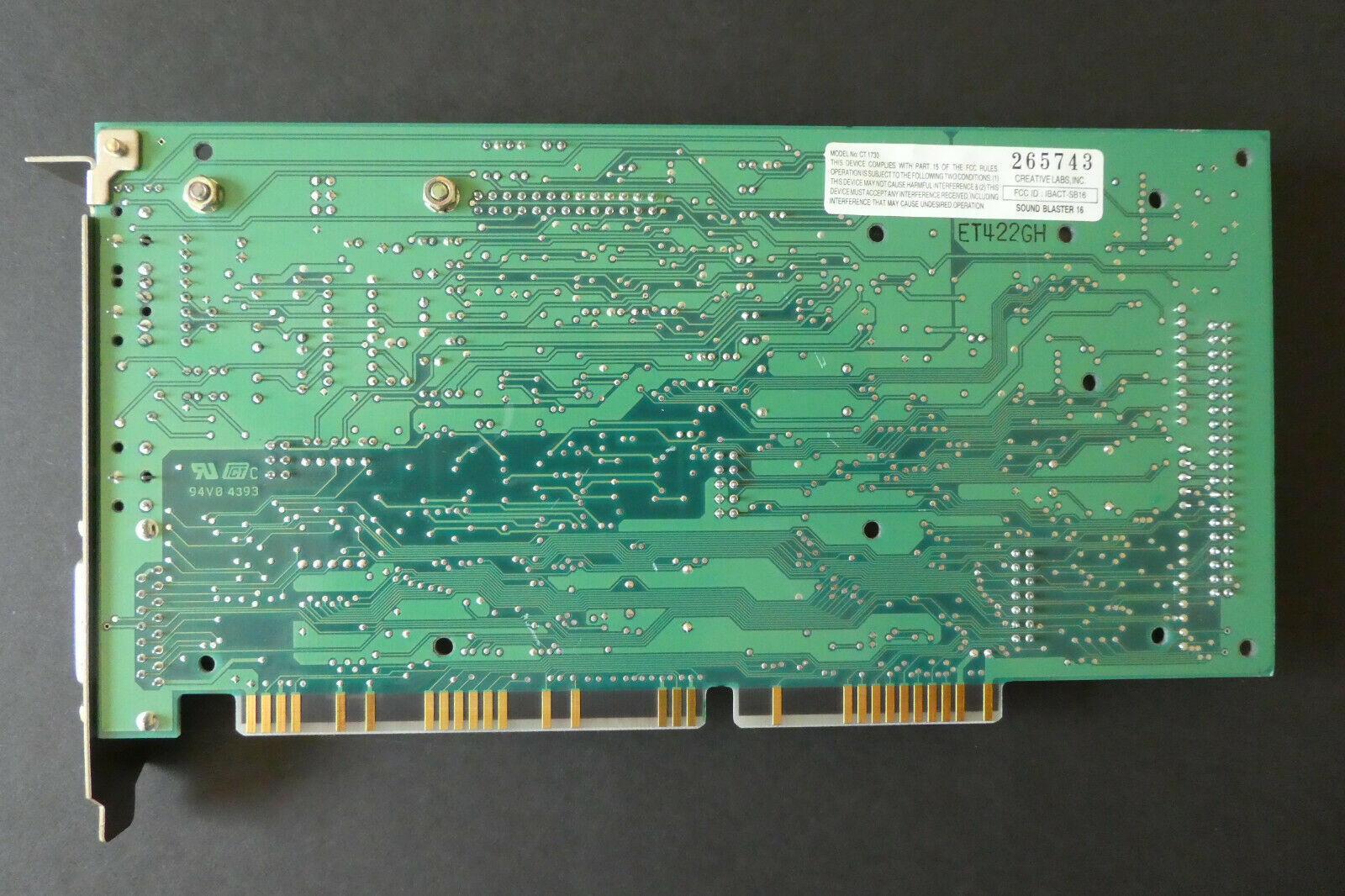

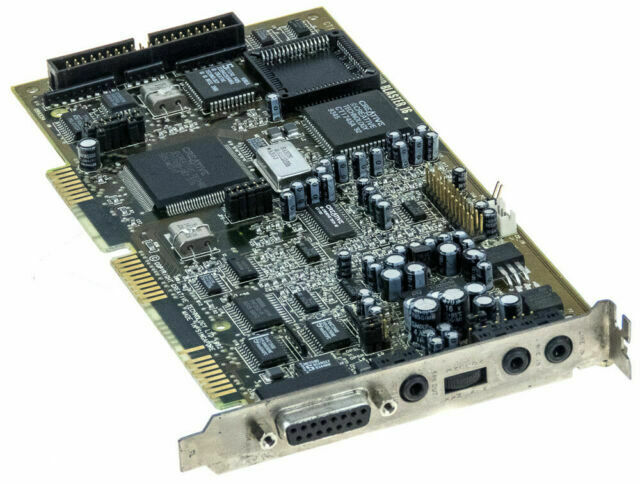



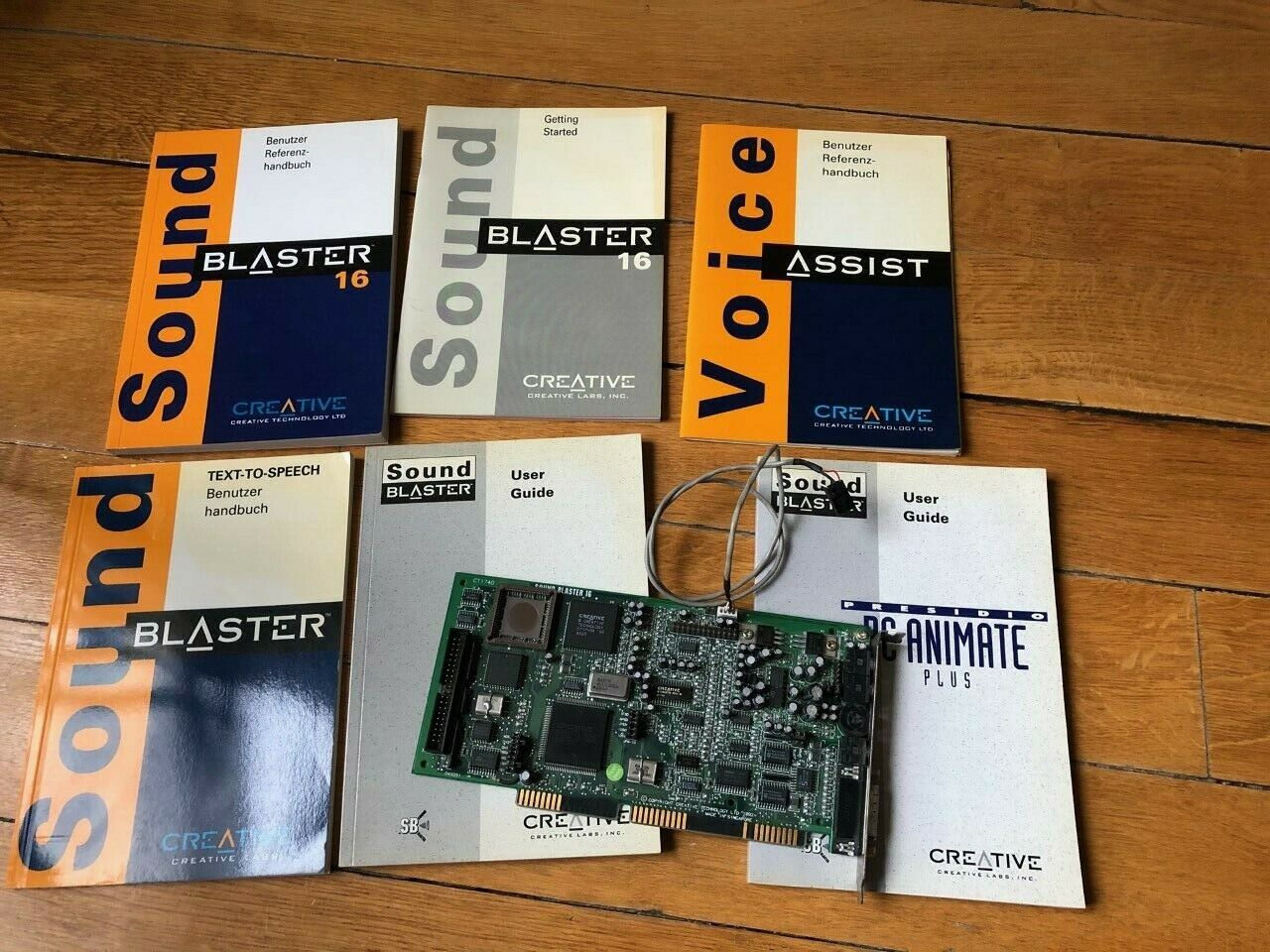
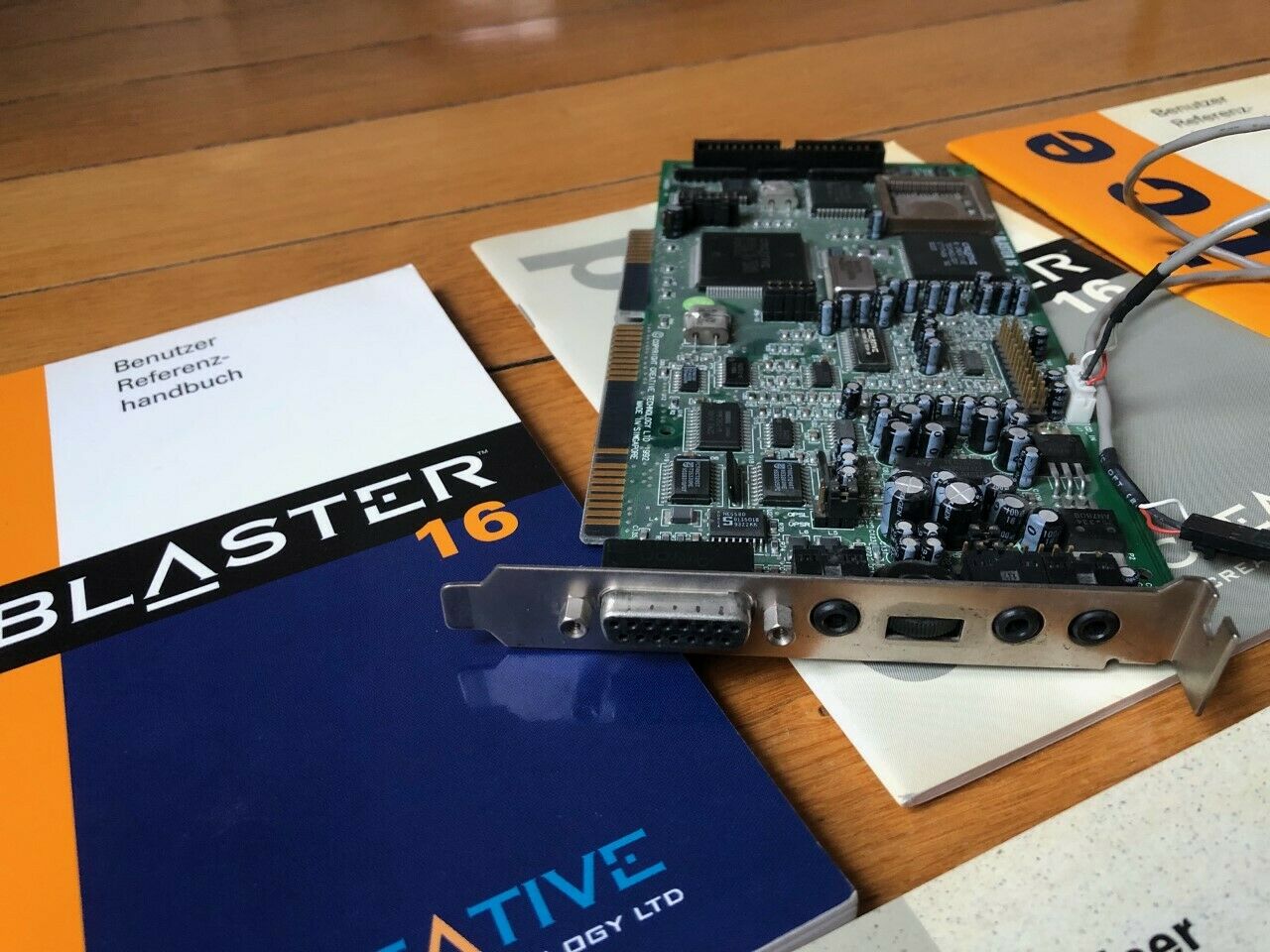

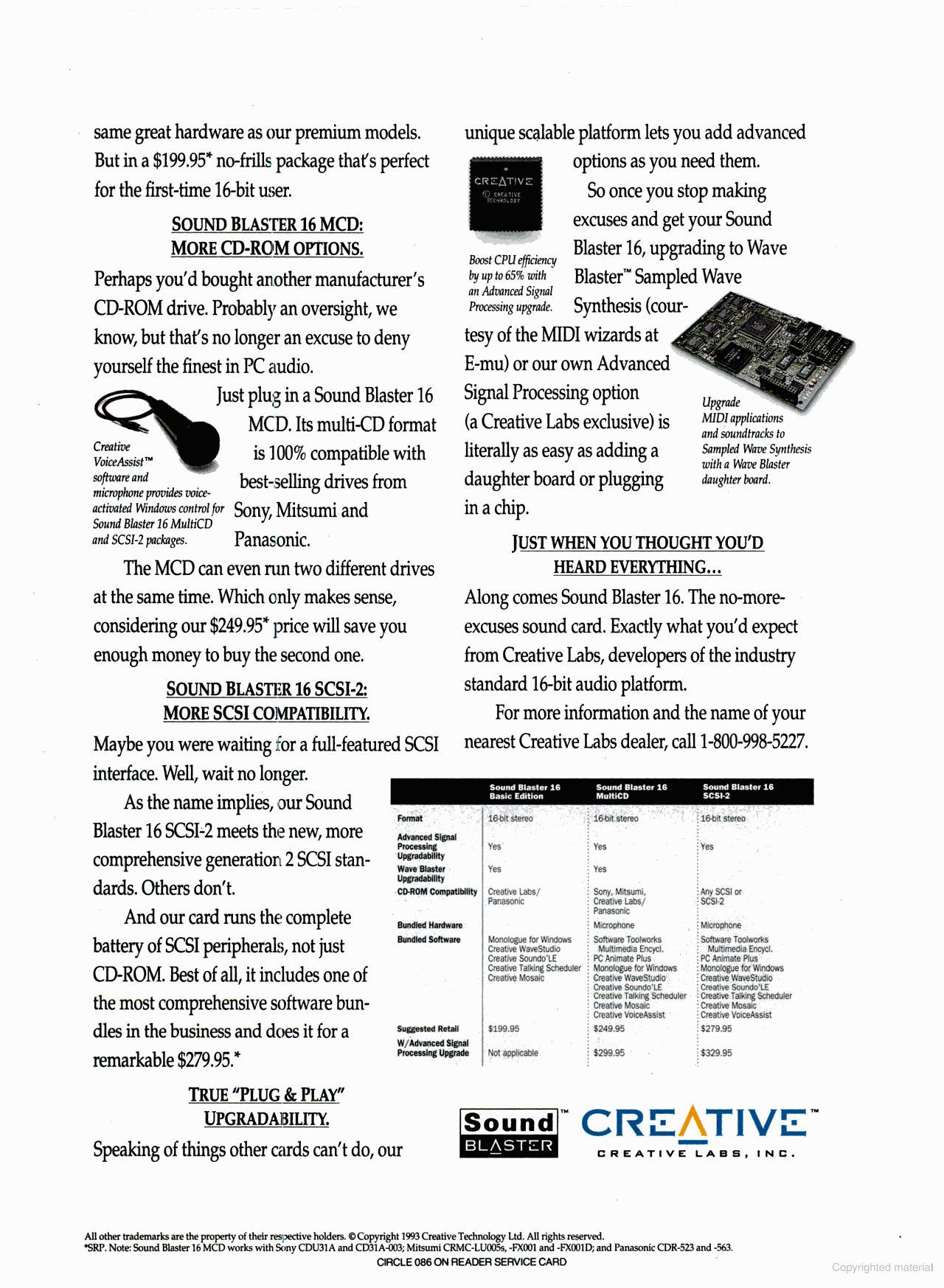
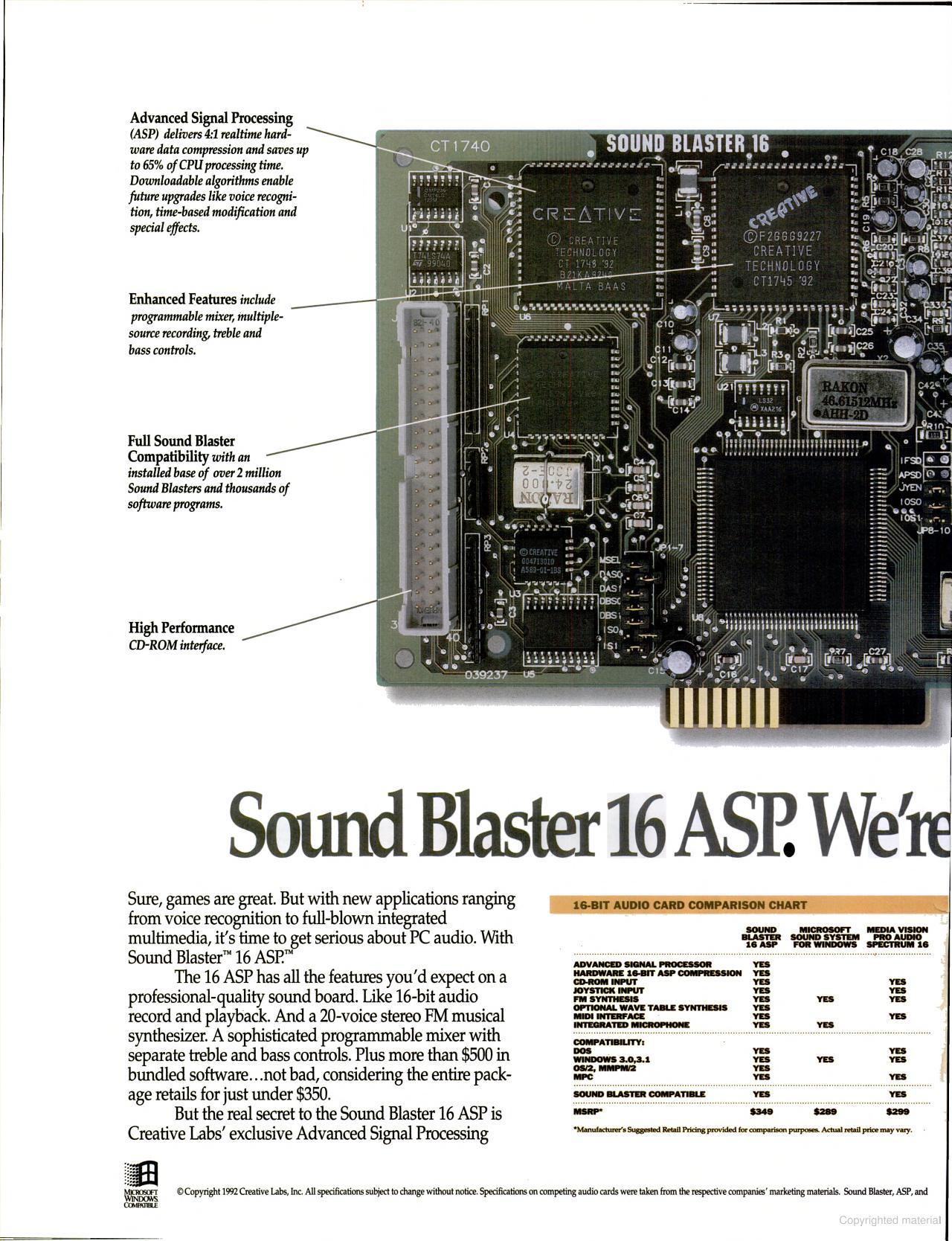

.jpg)
.jpg)
.jpg)
.jpg)
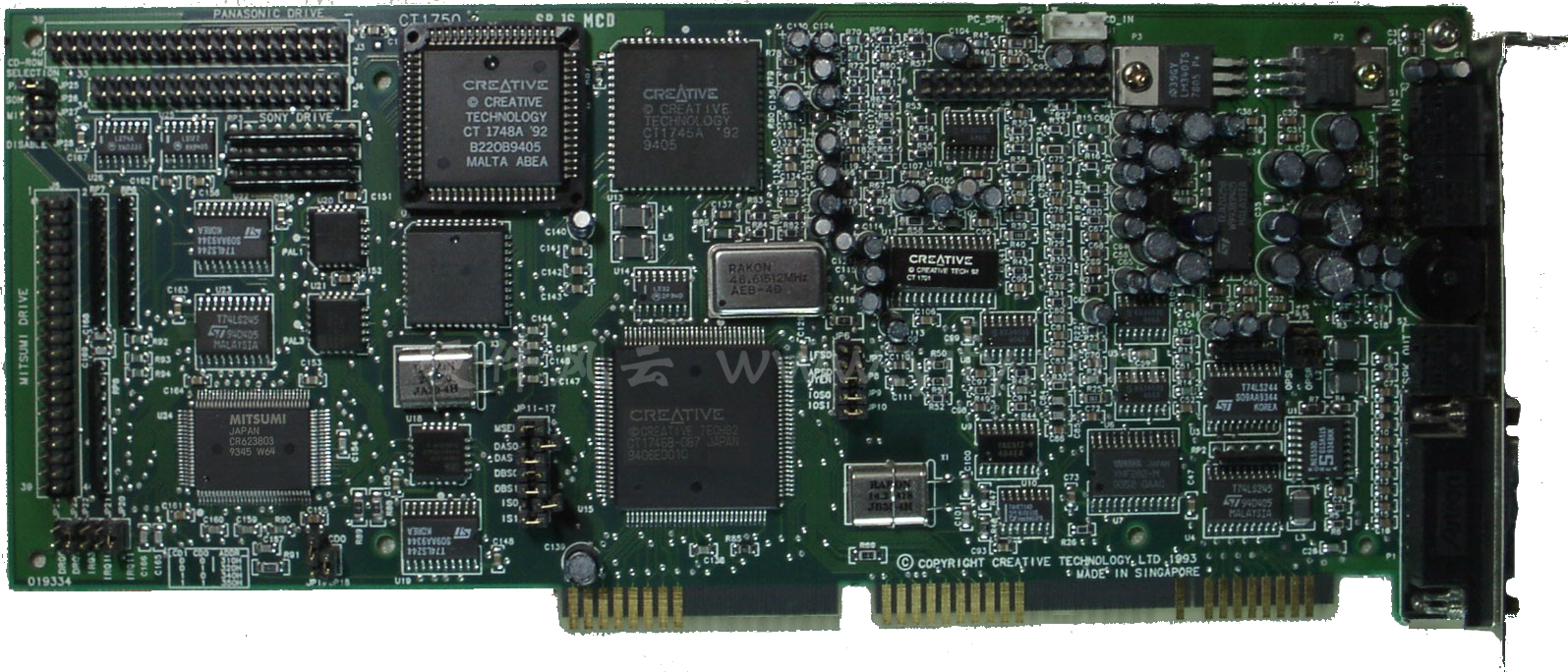

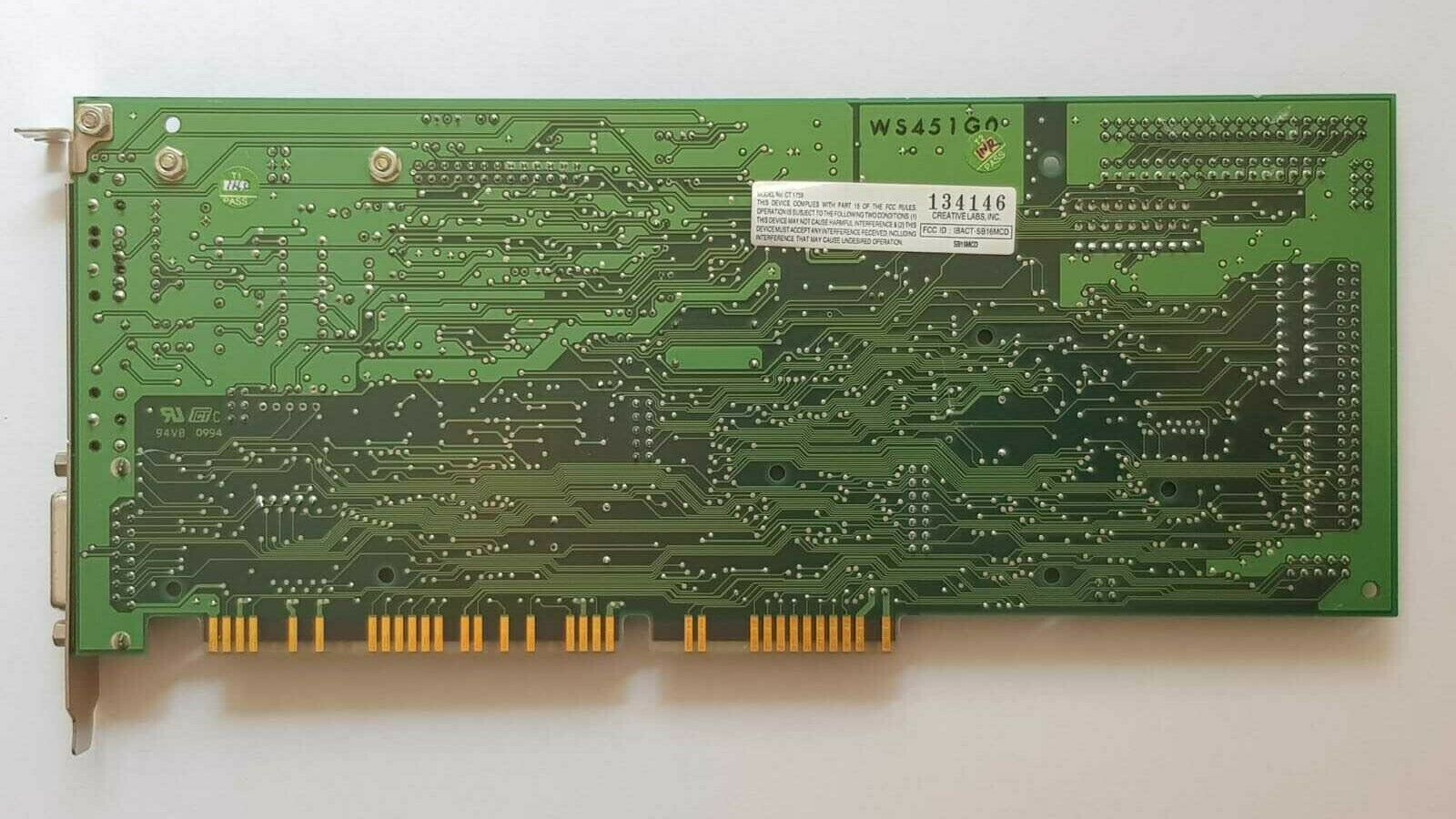
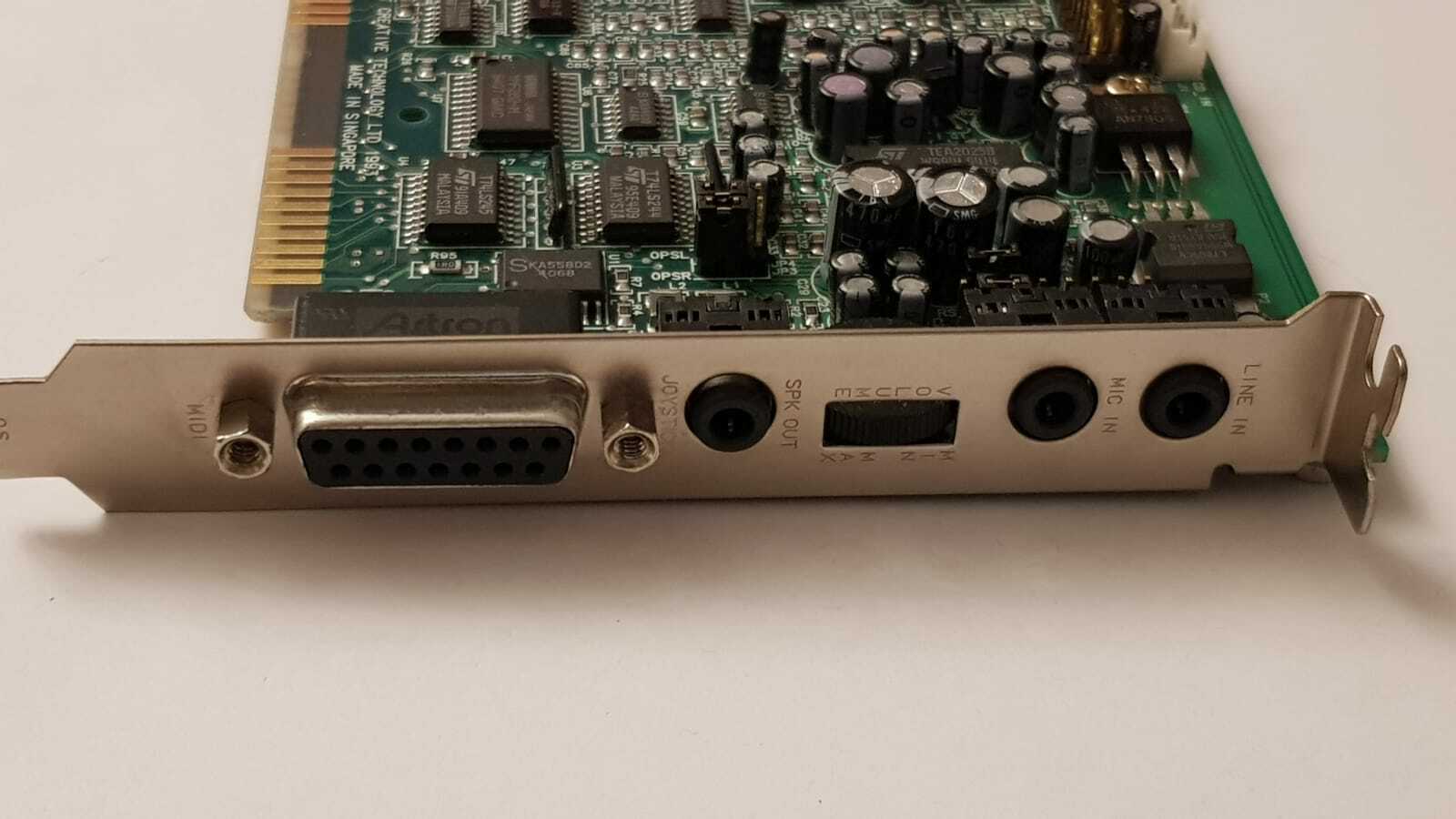

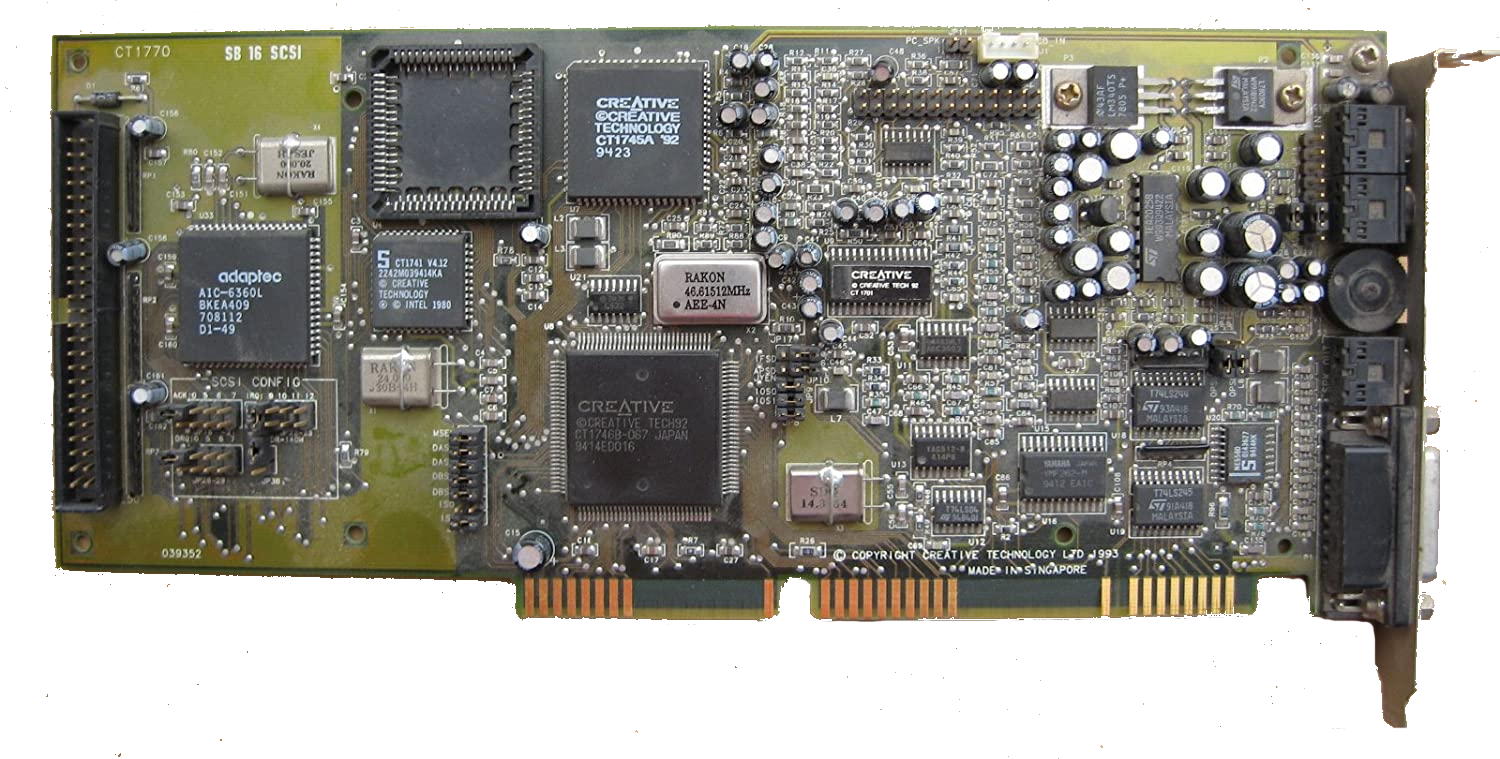
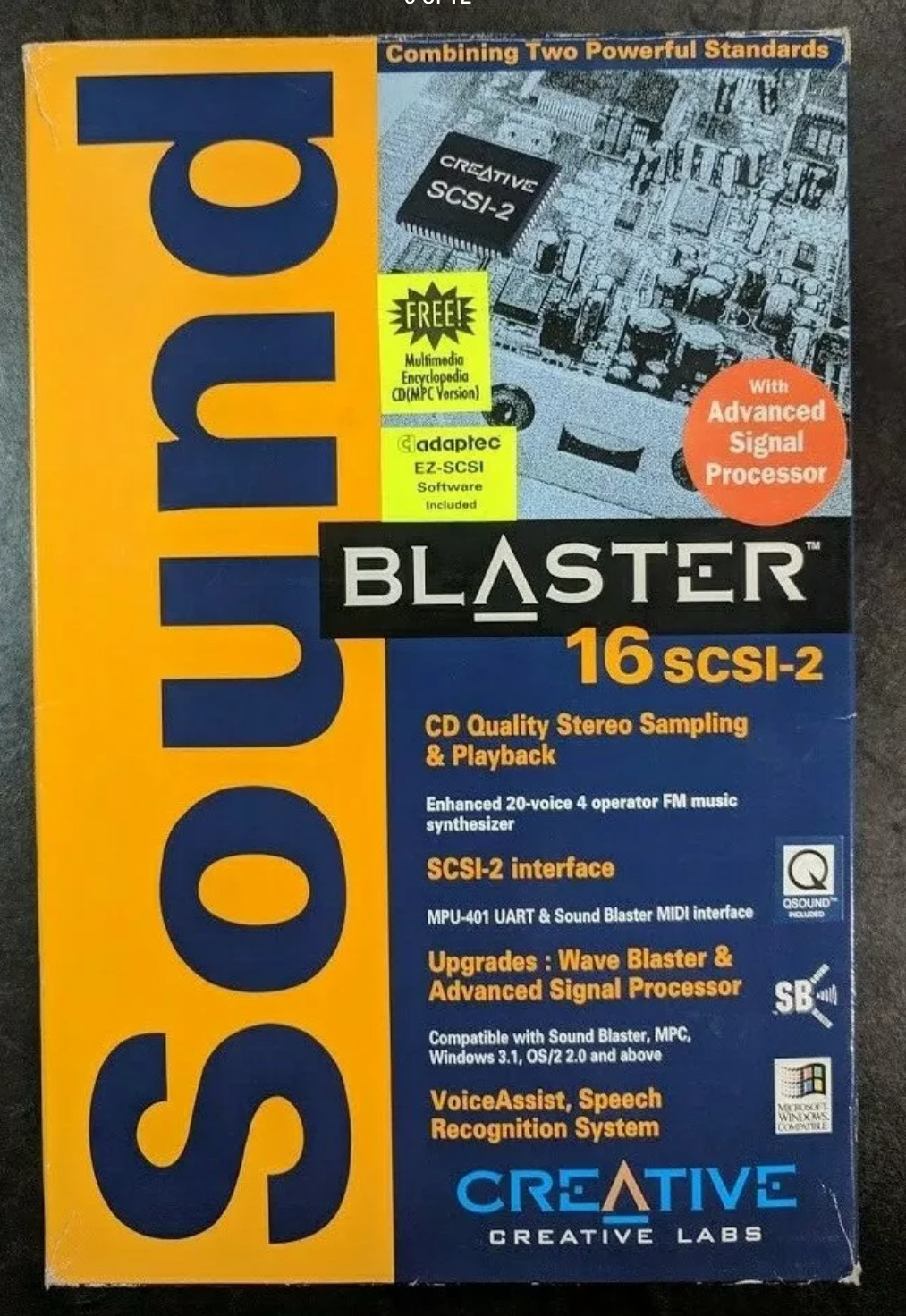
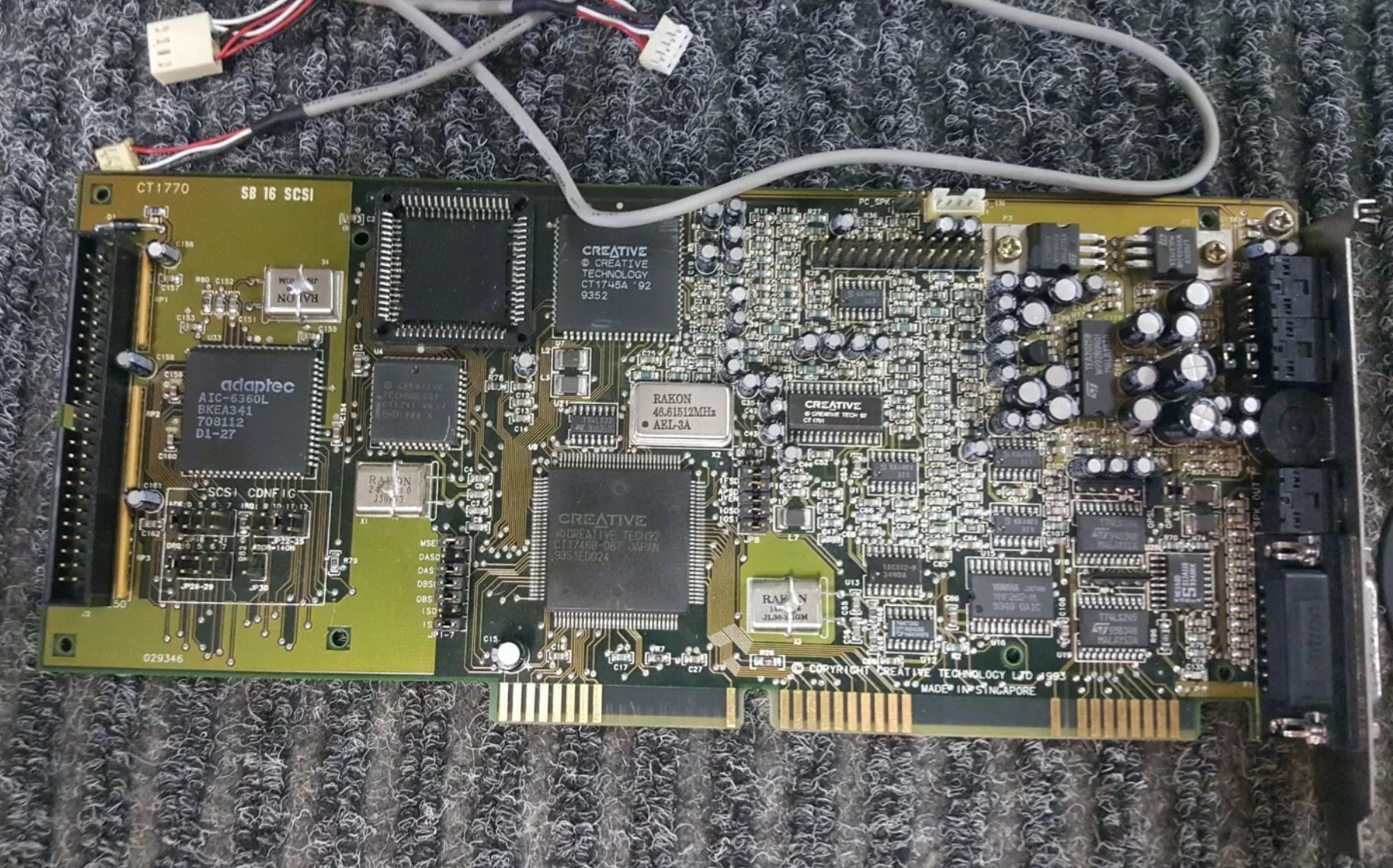

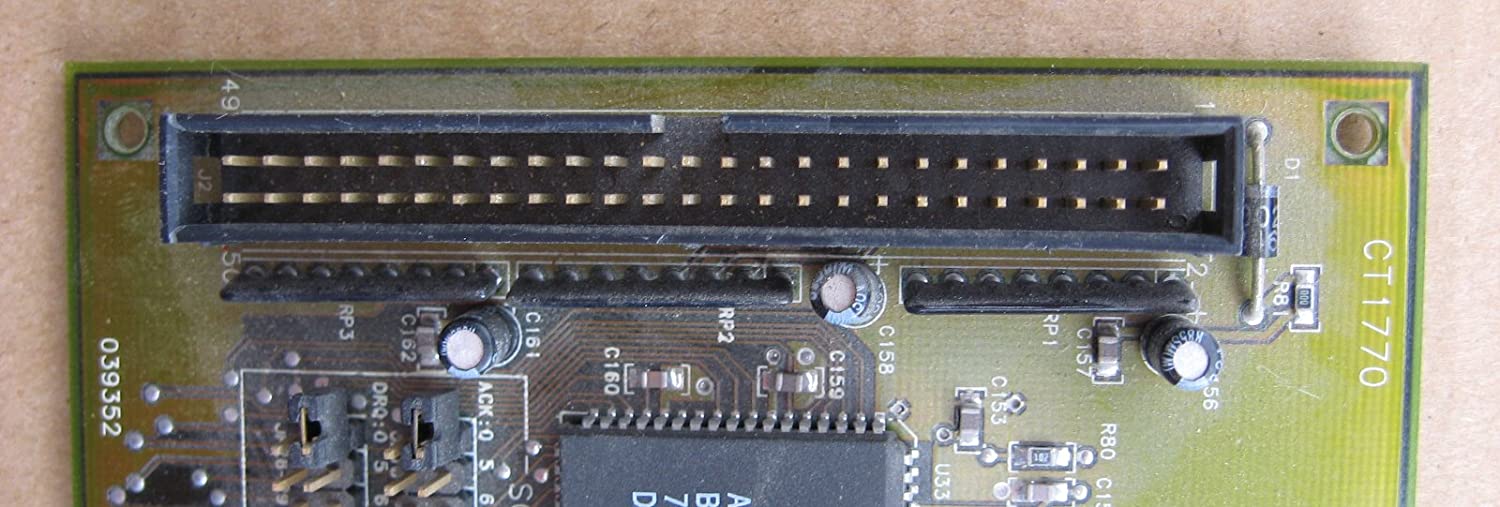








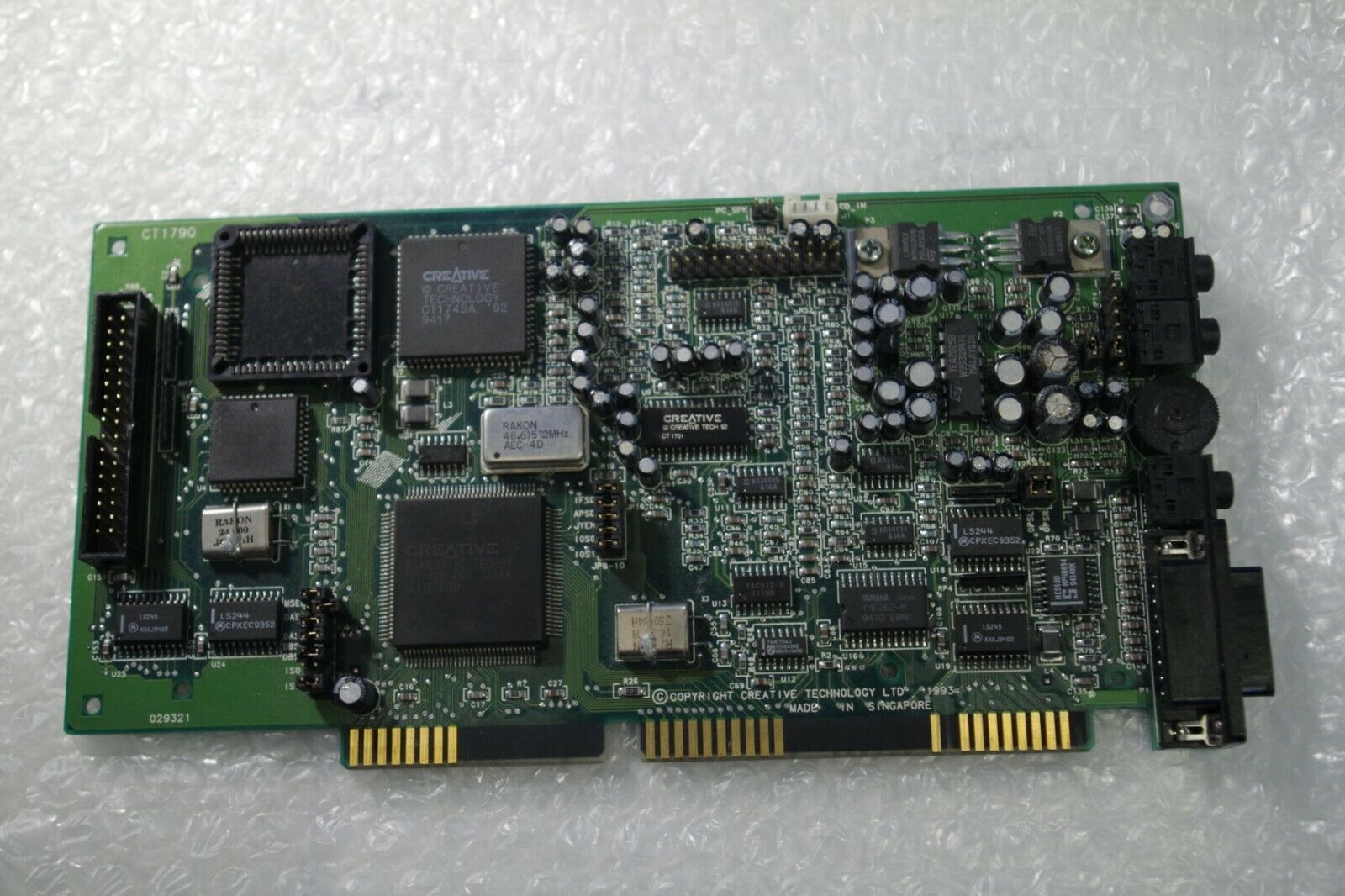


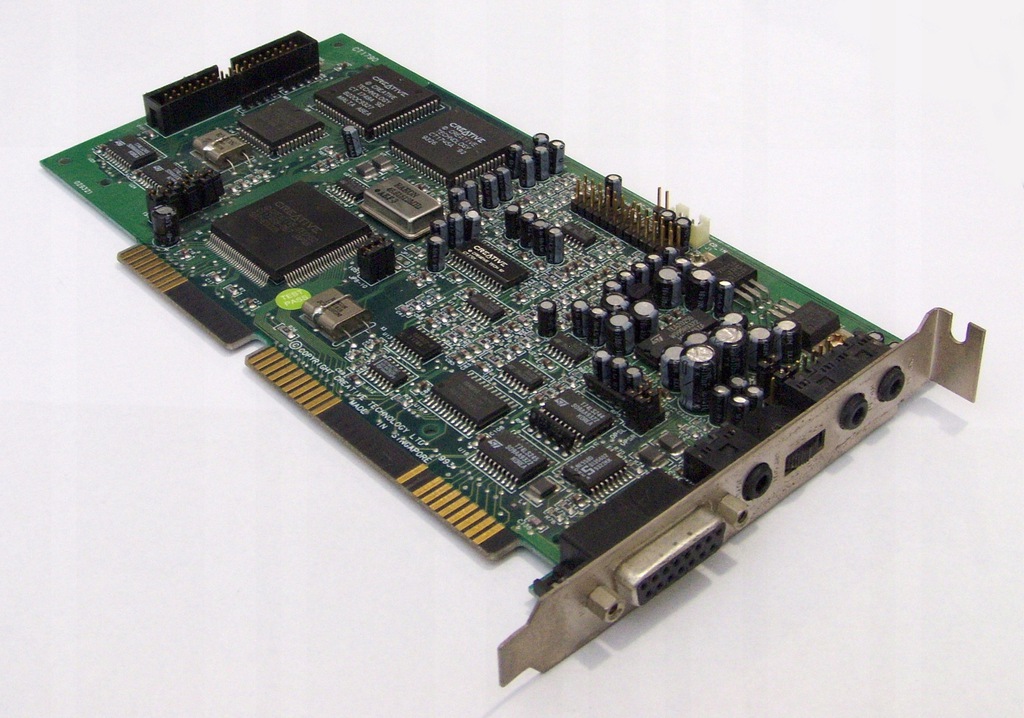

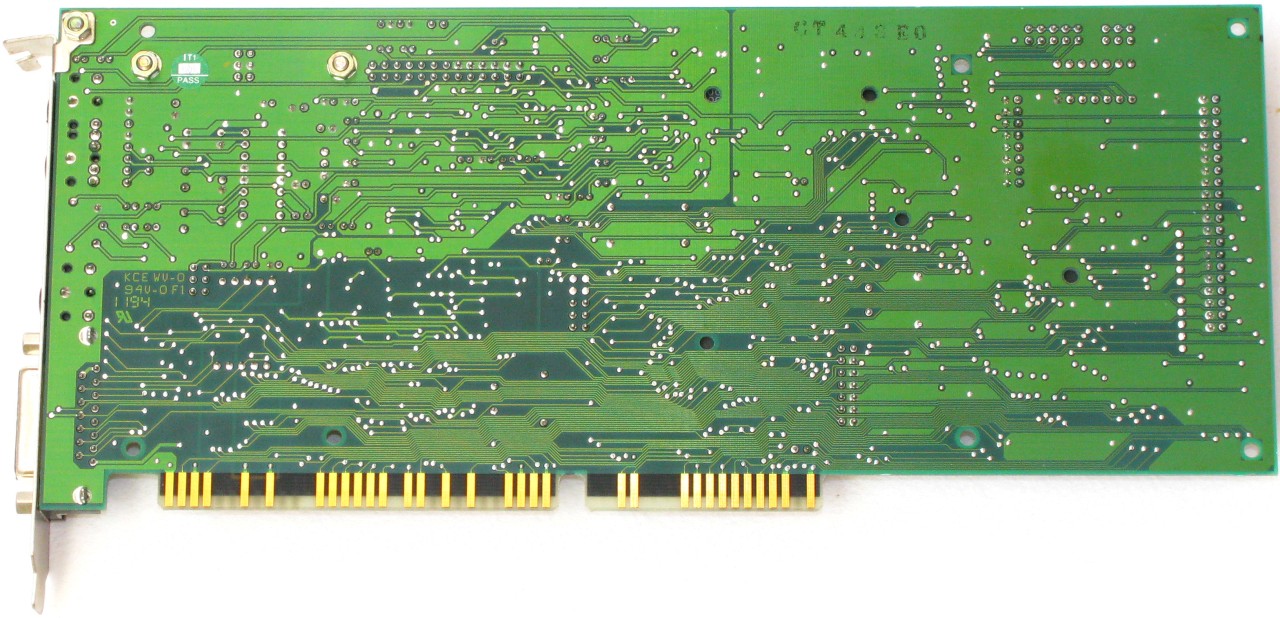

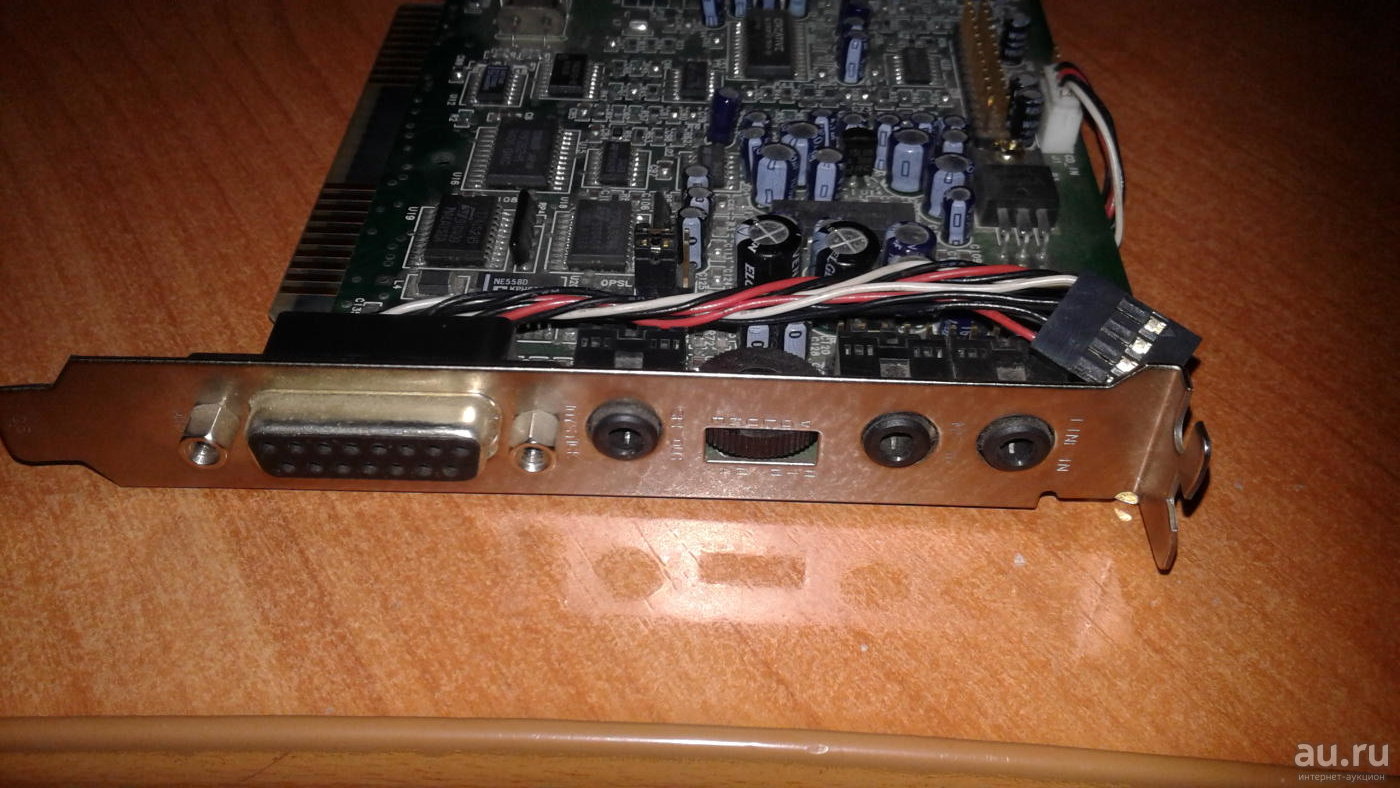
.png)

